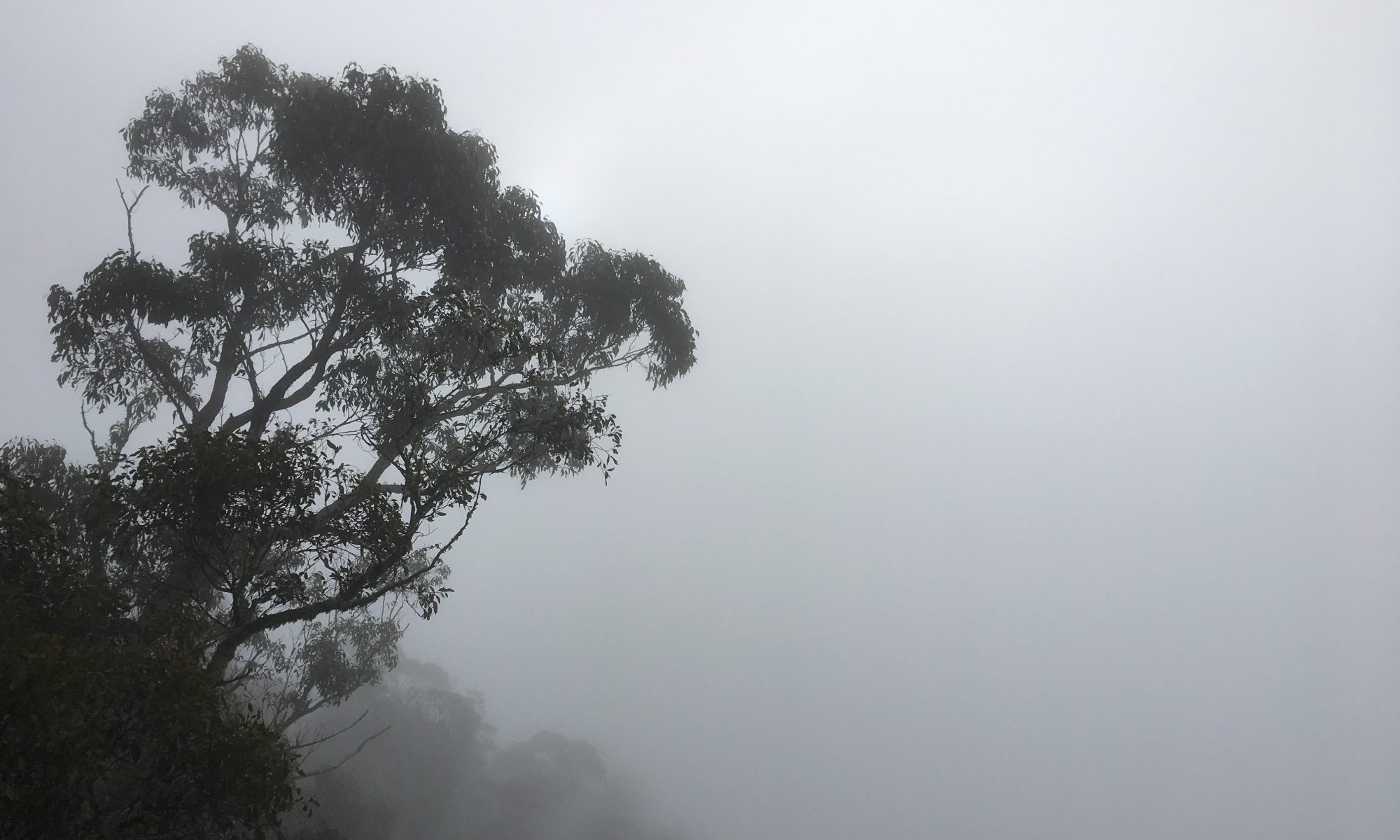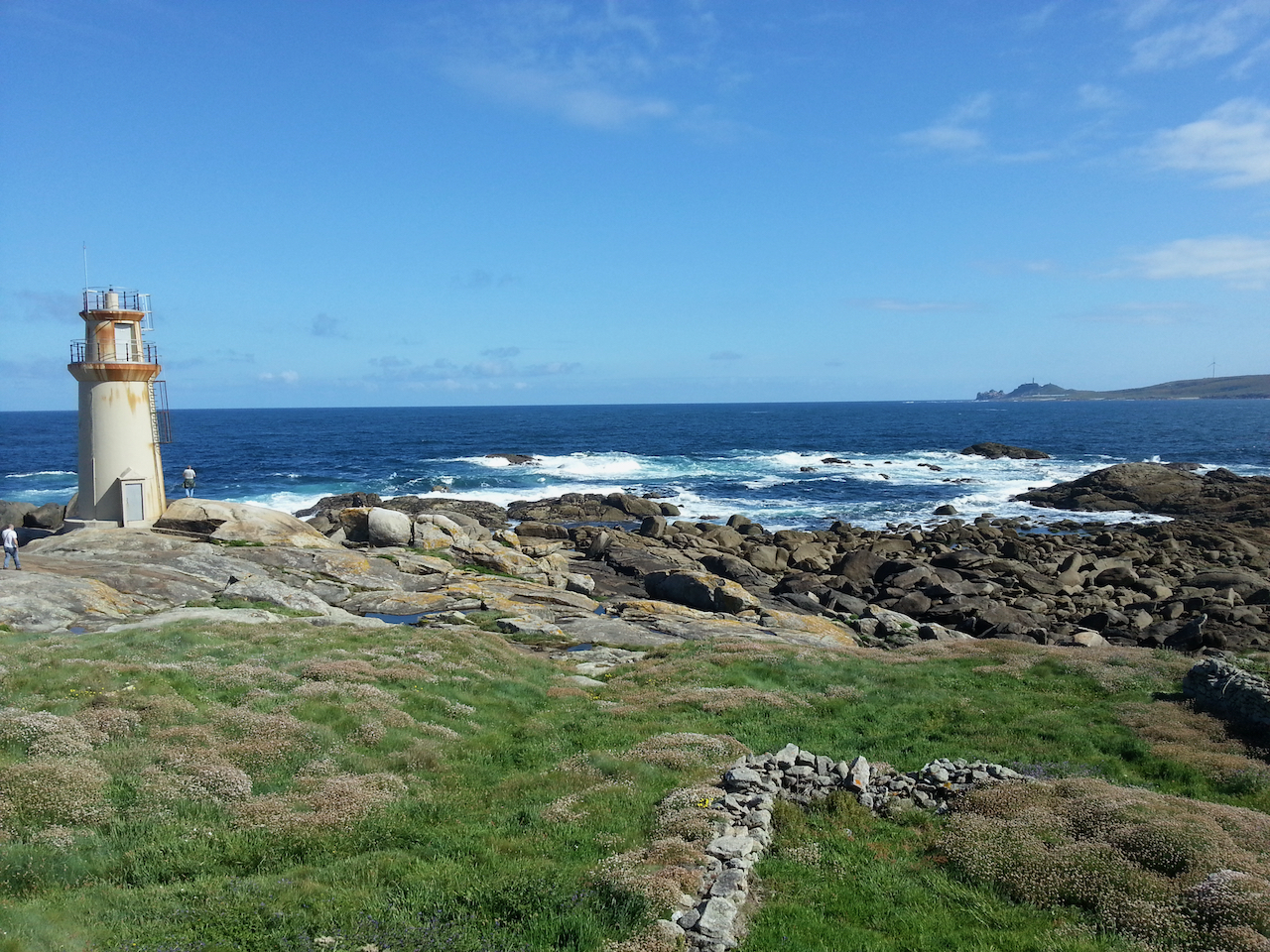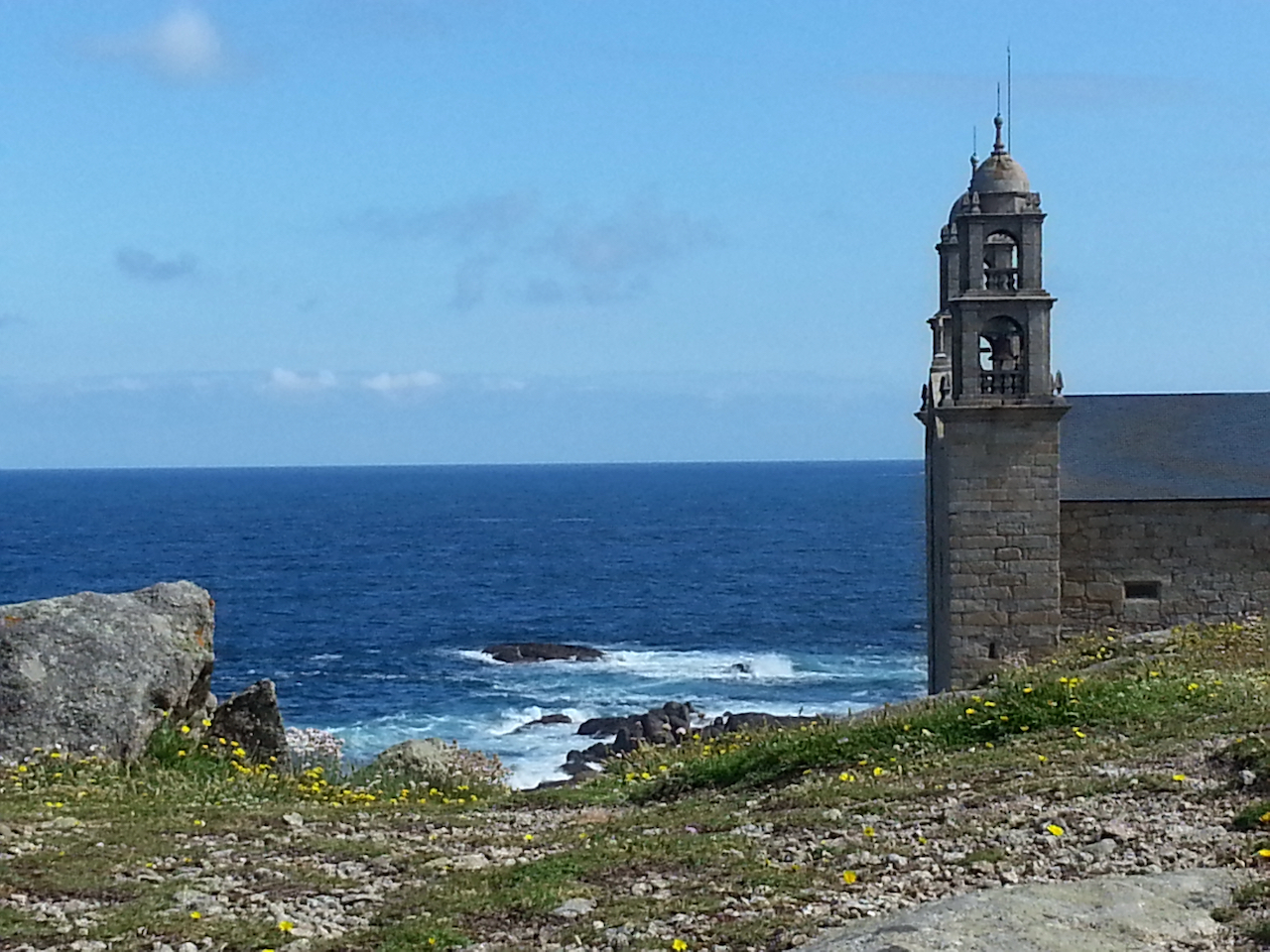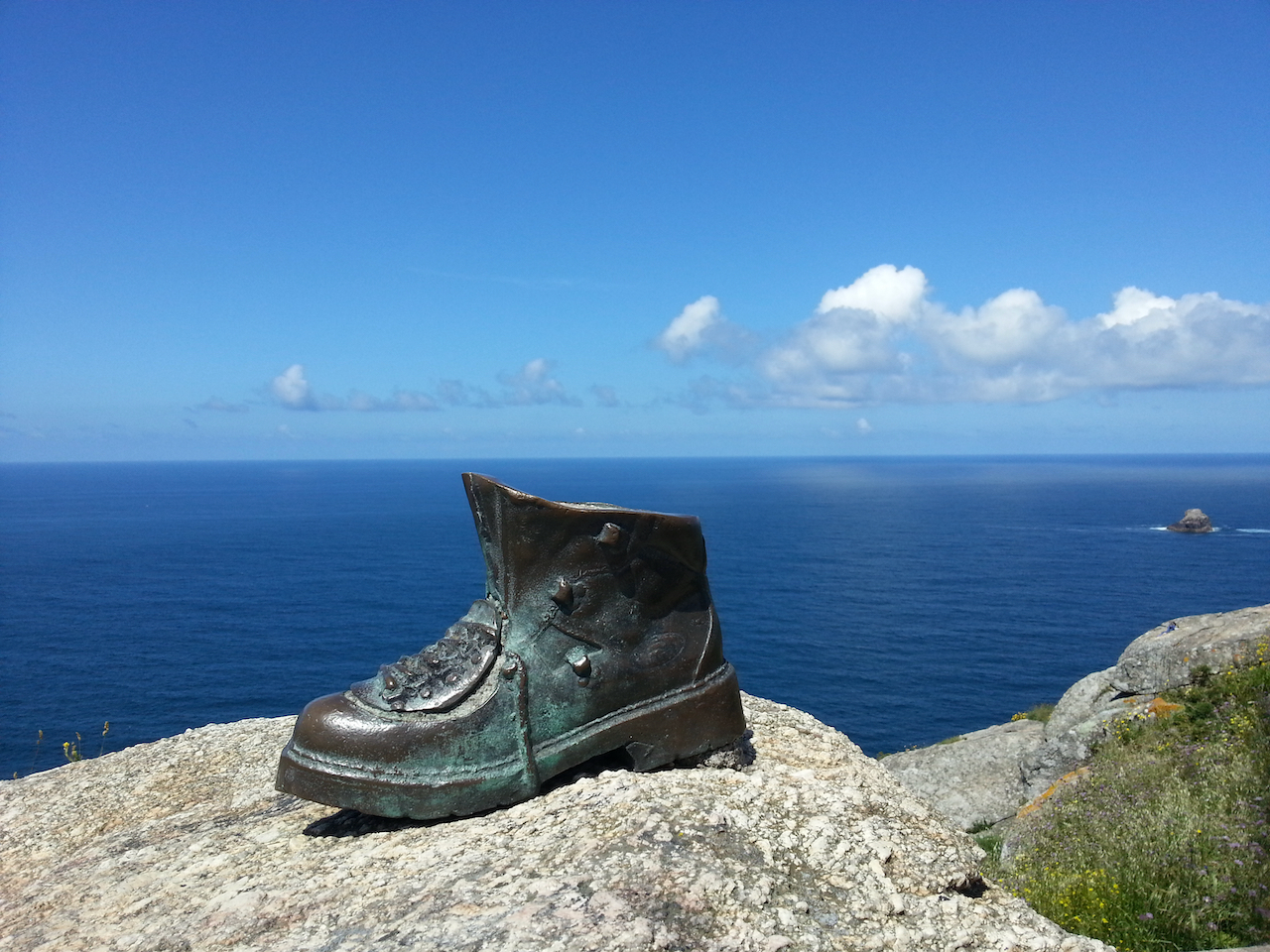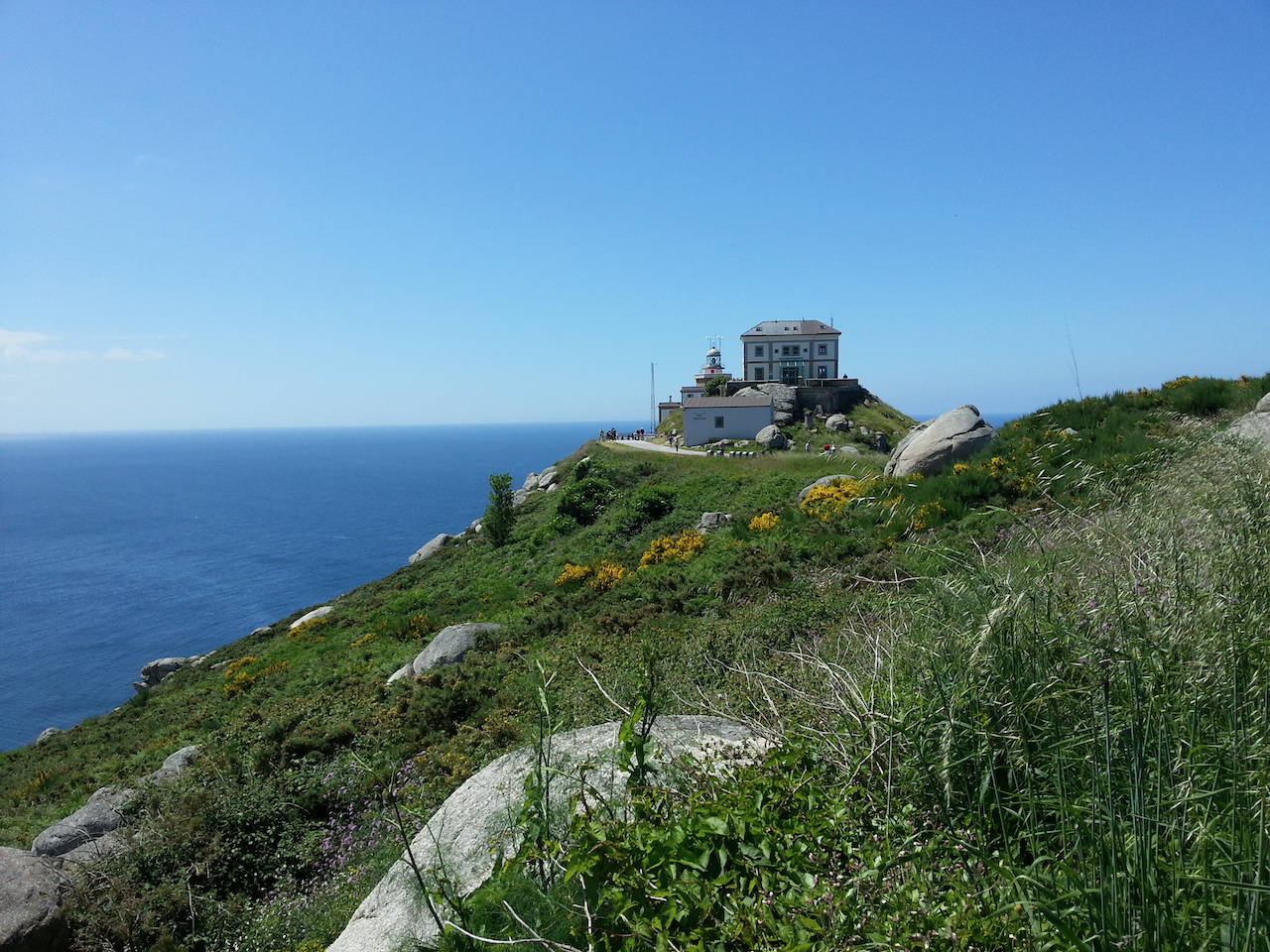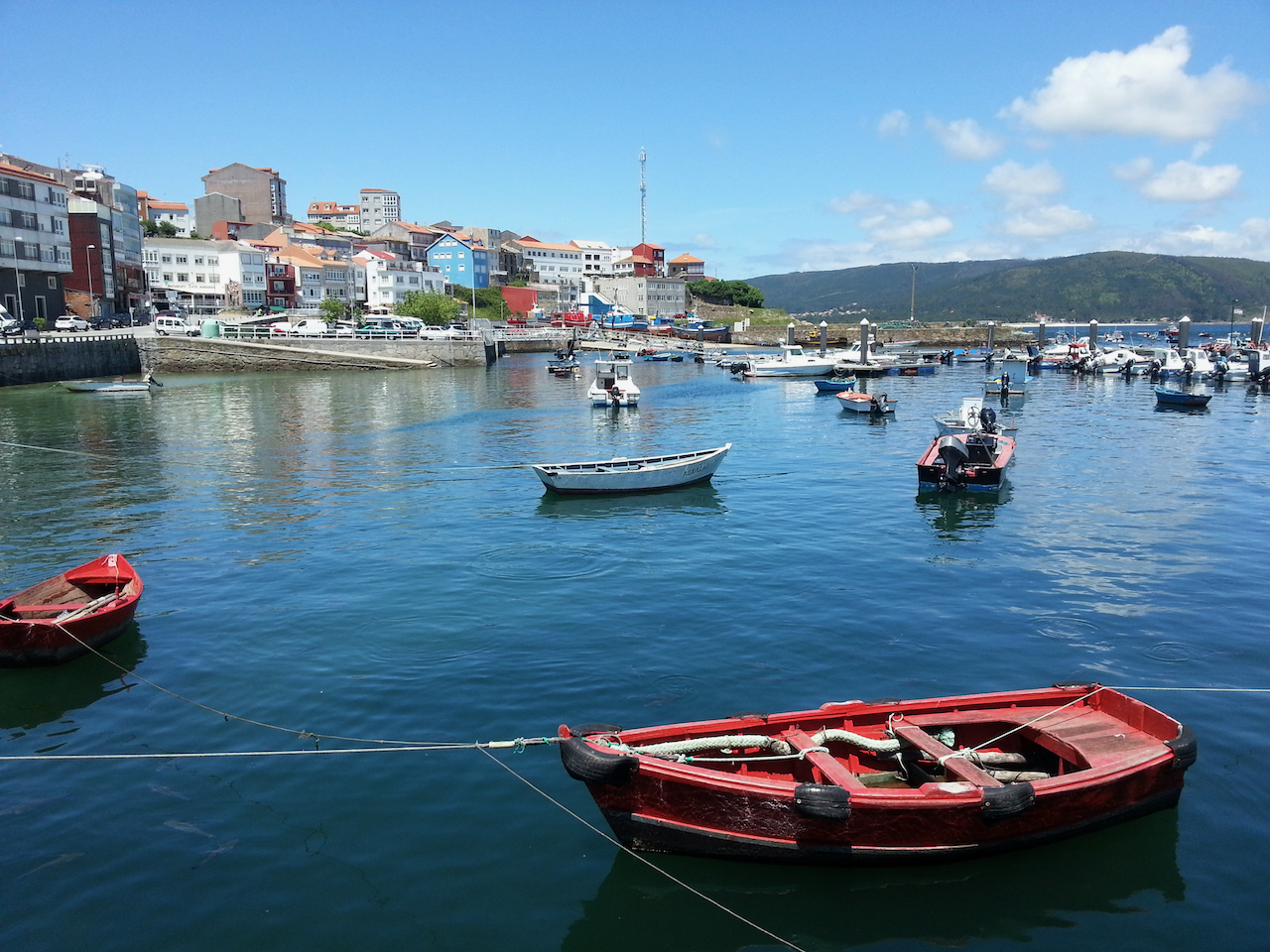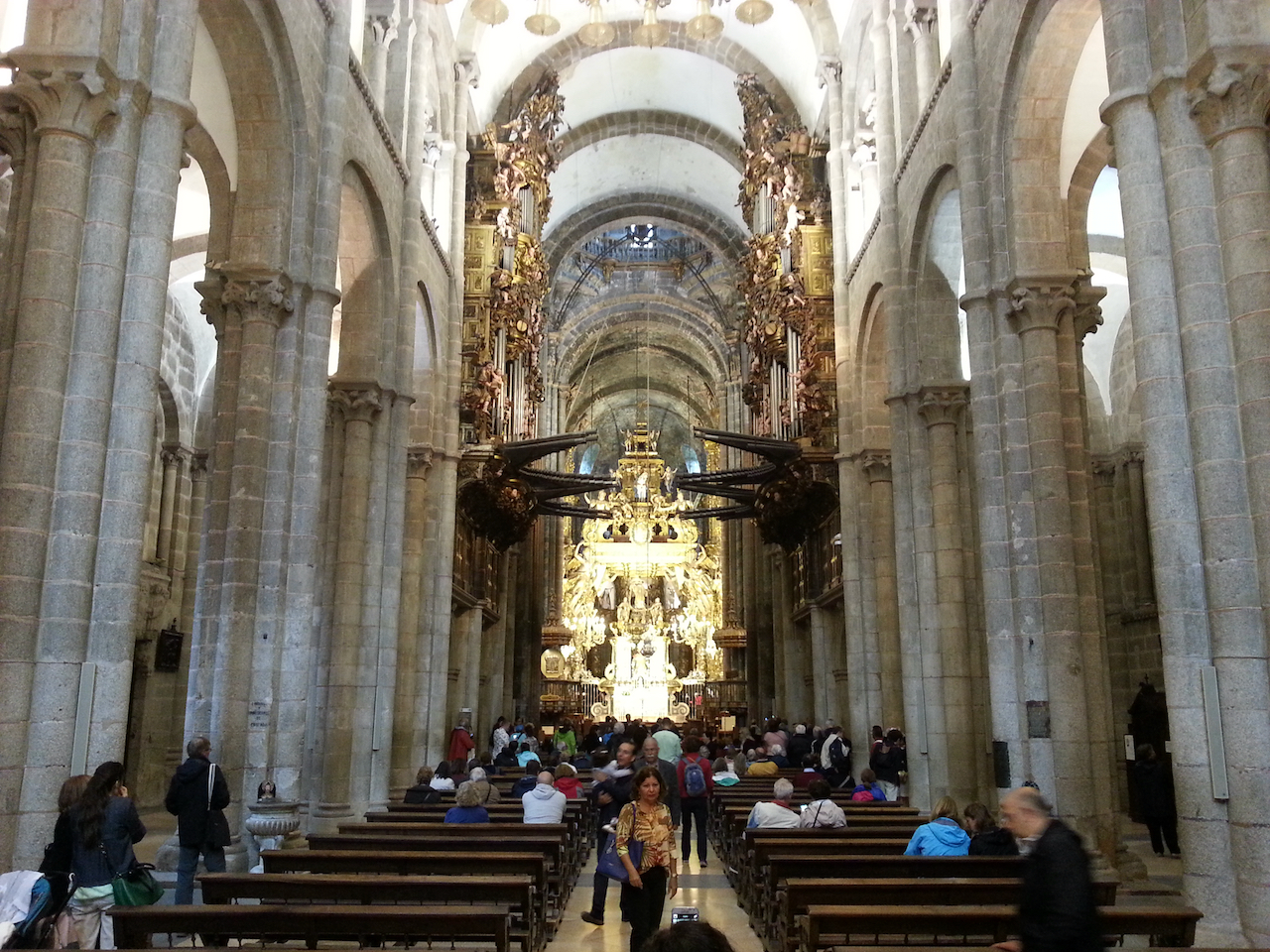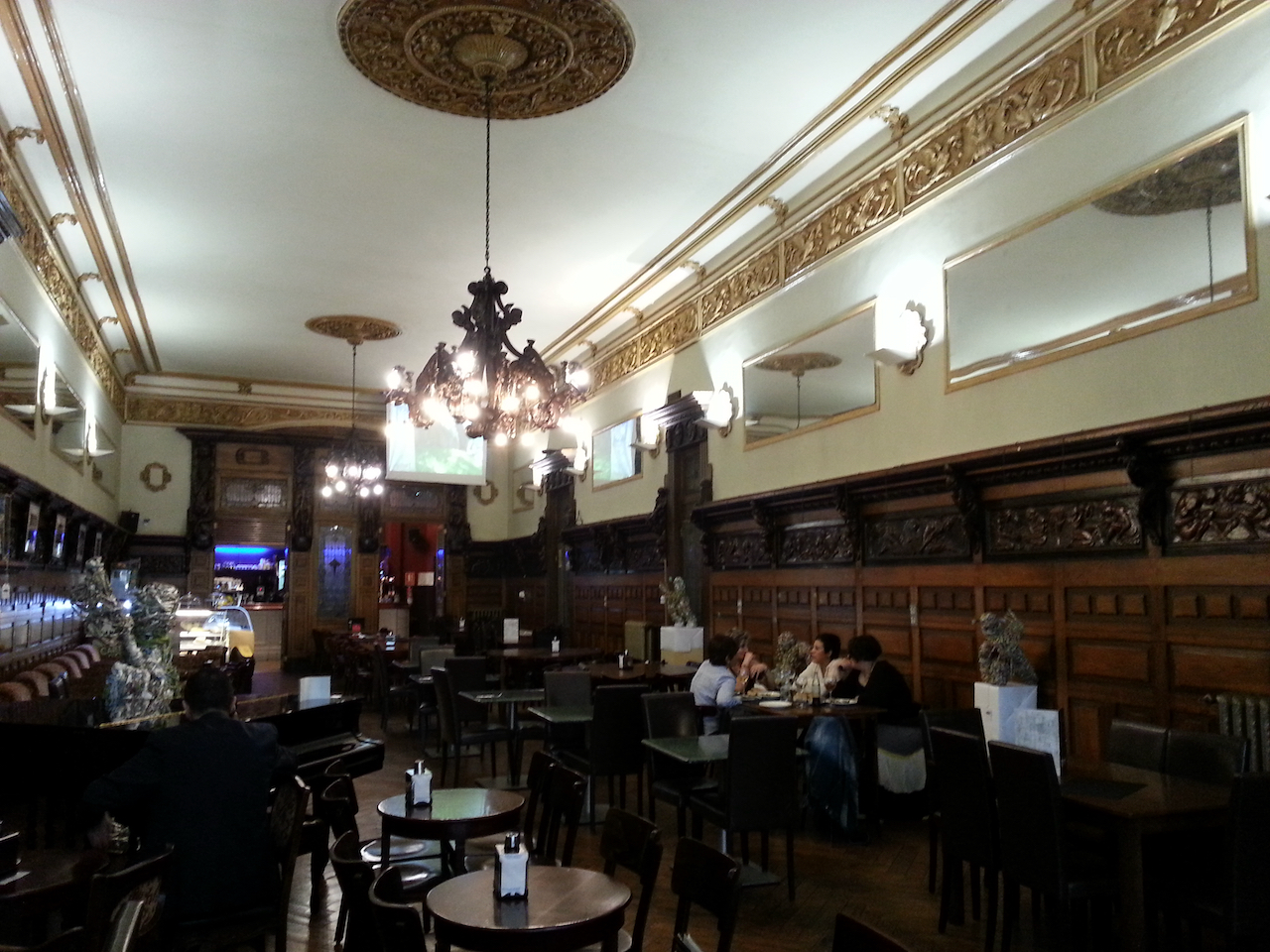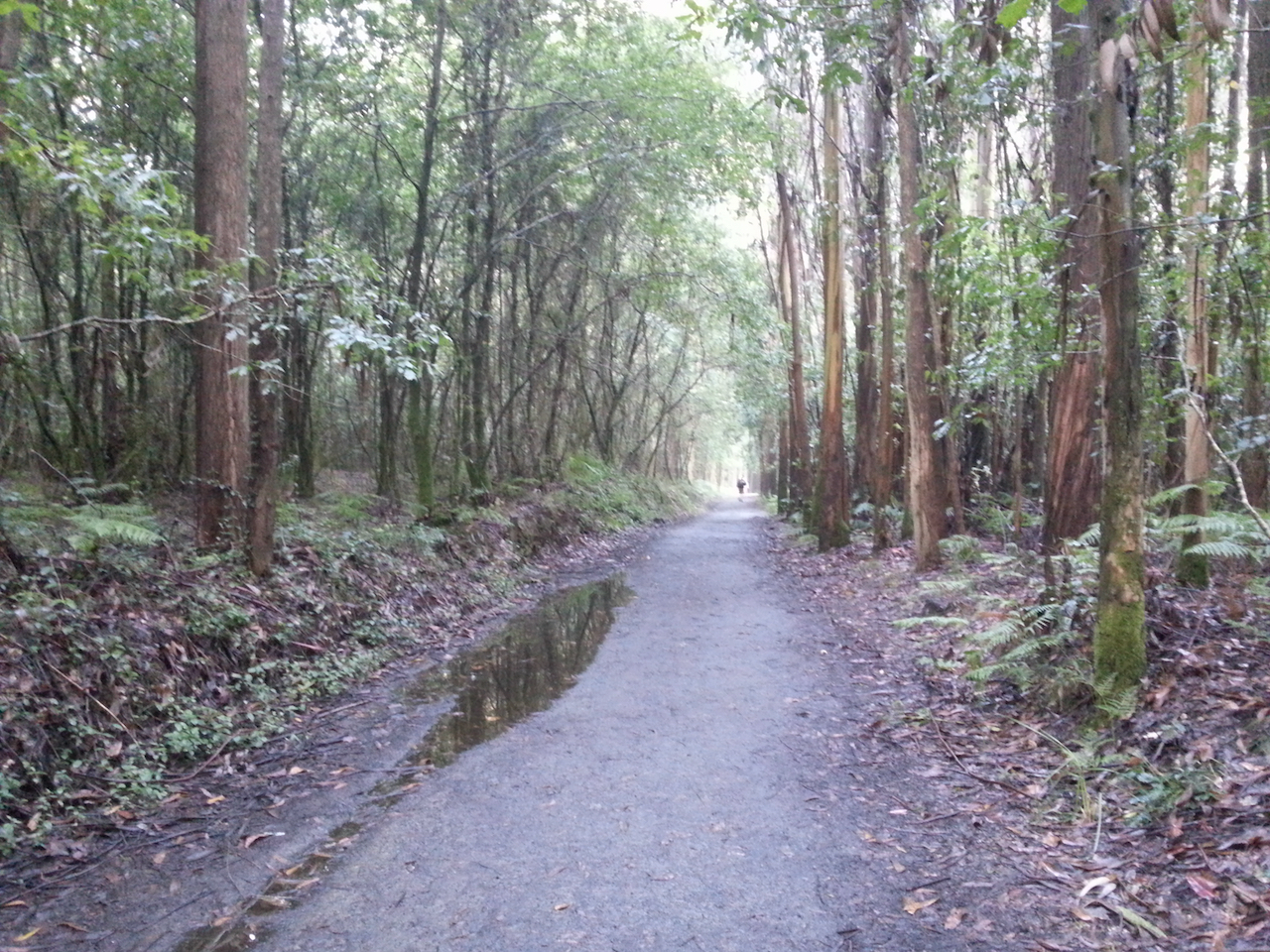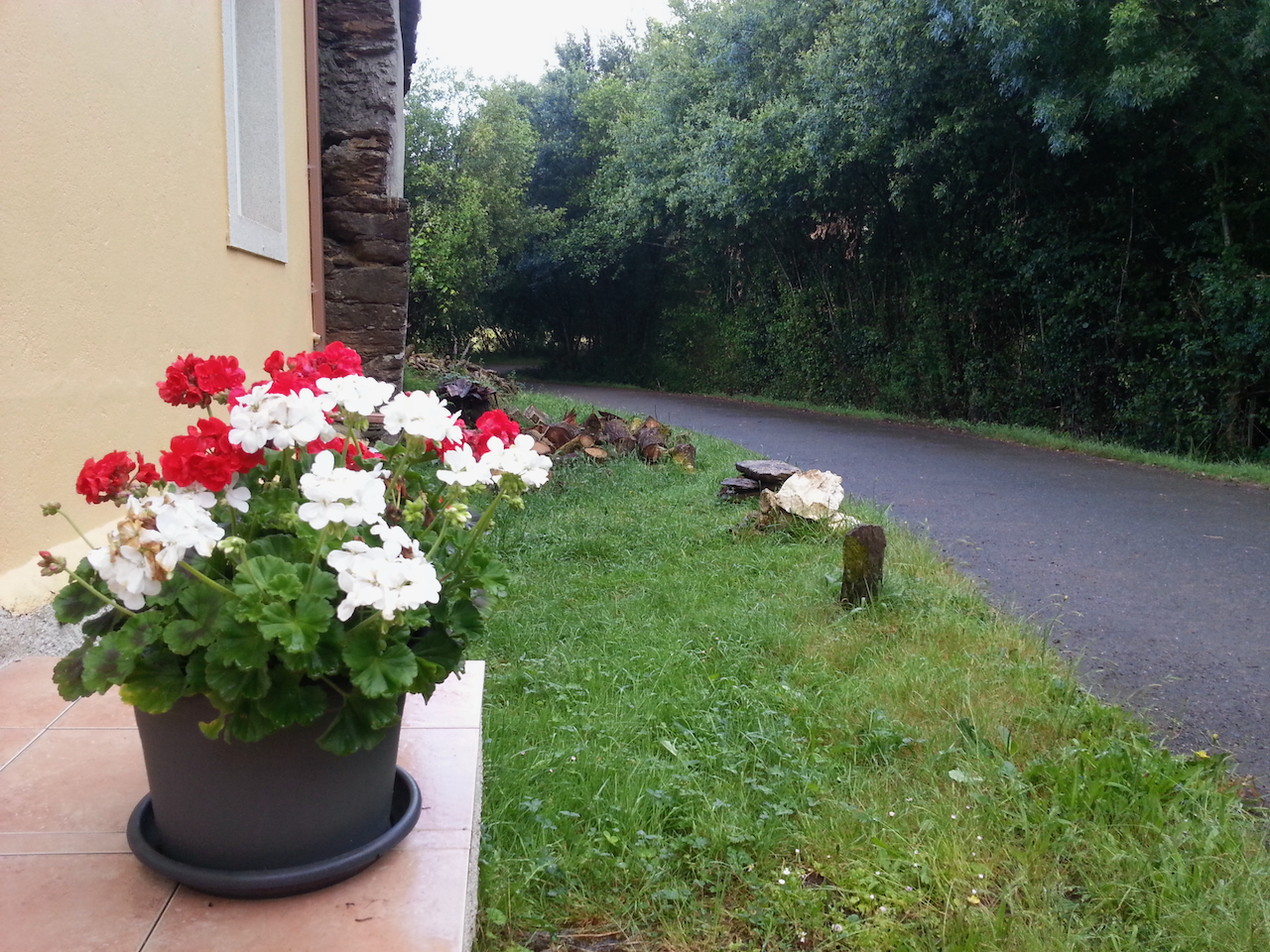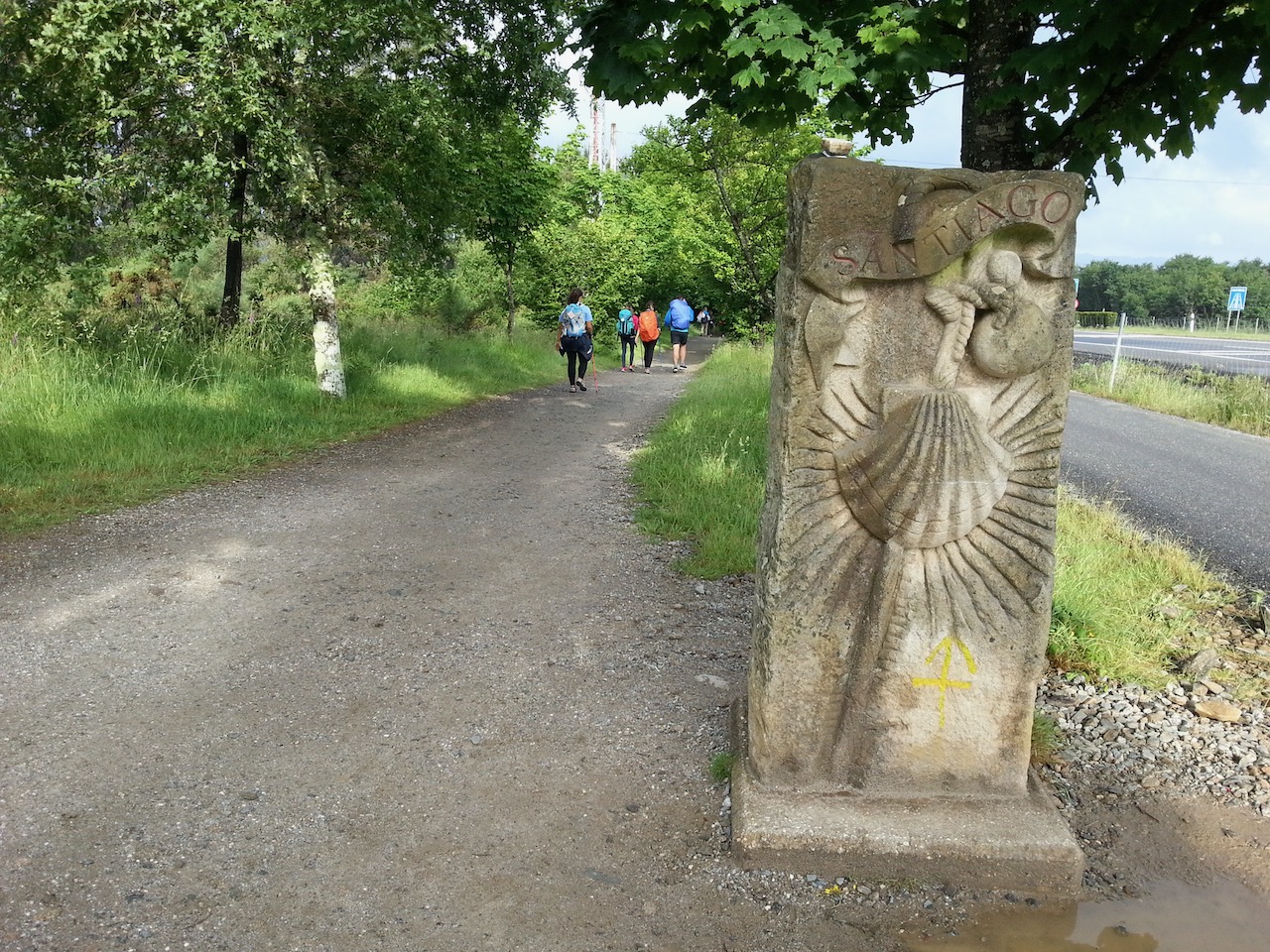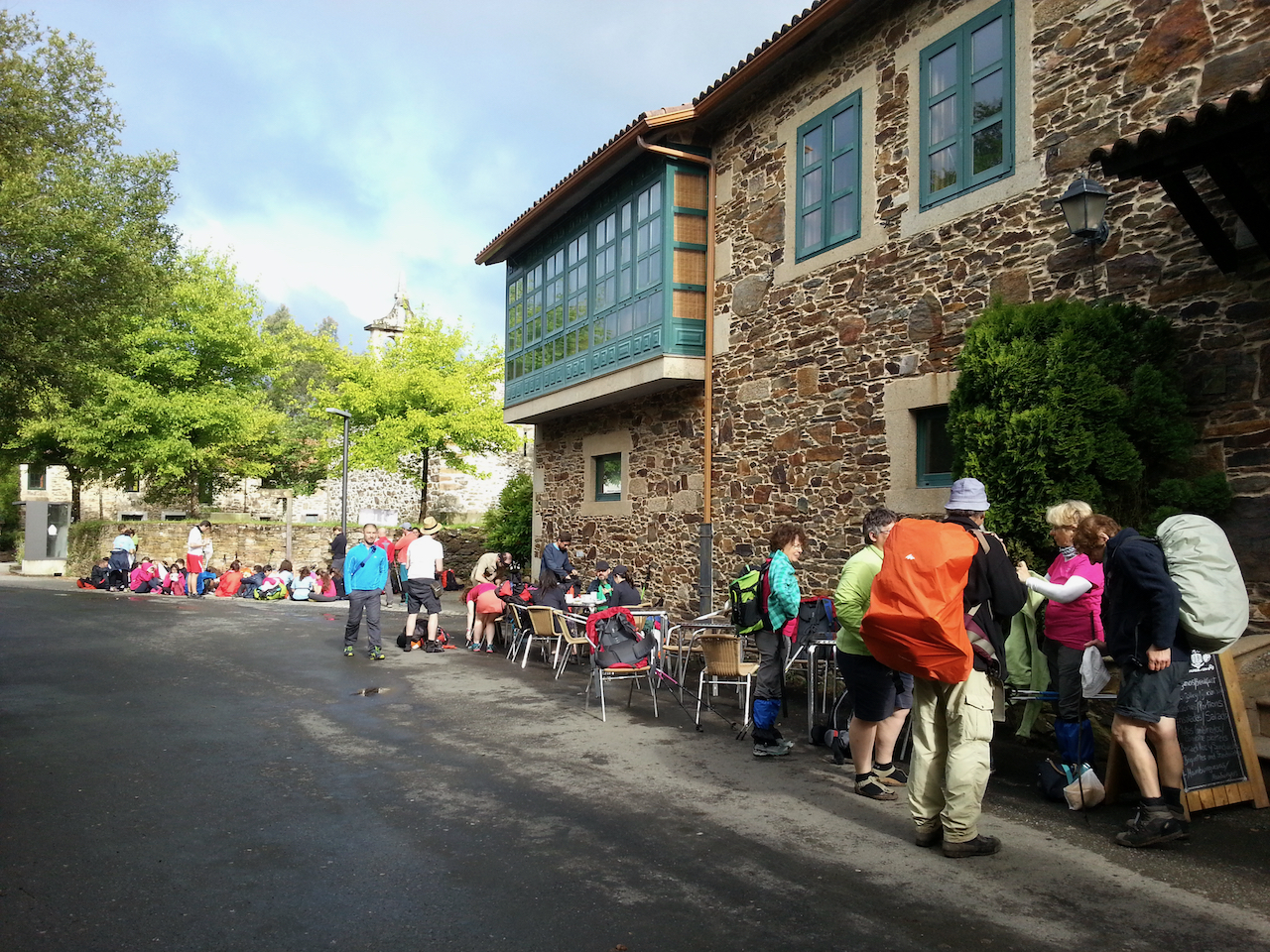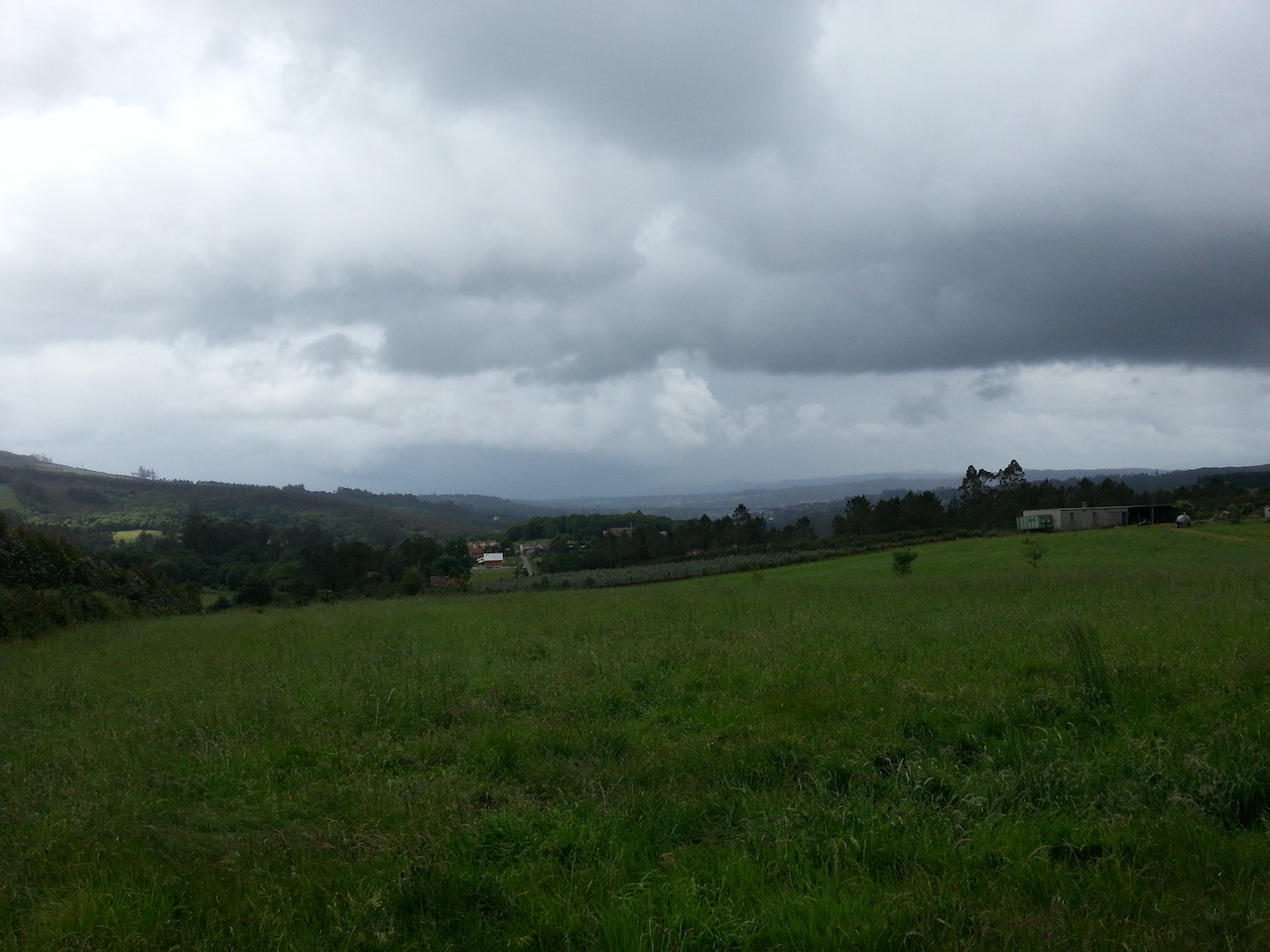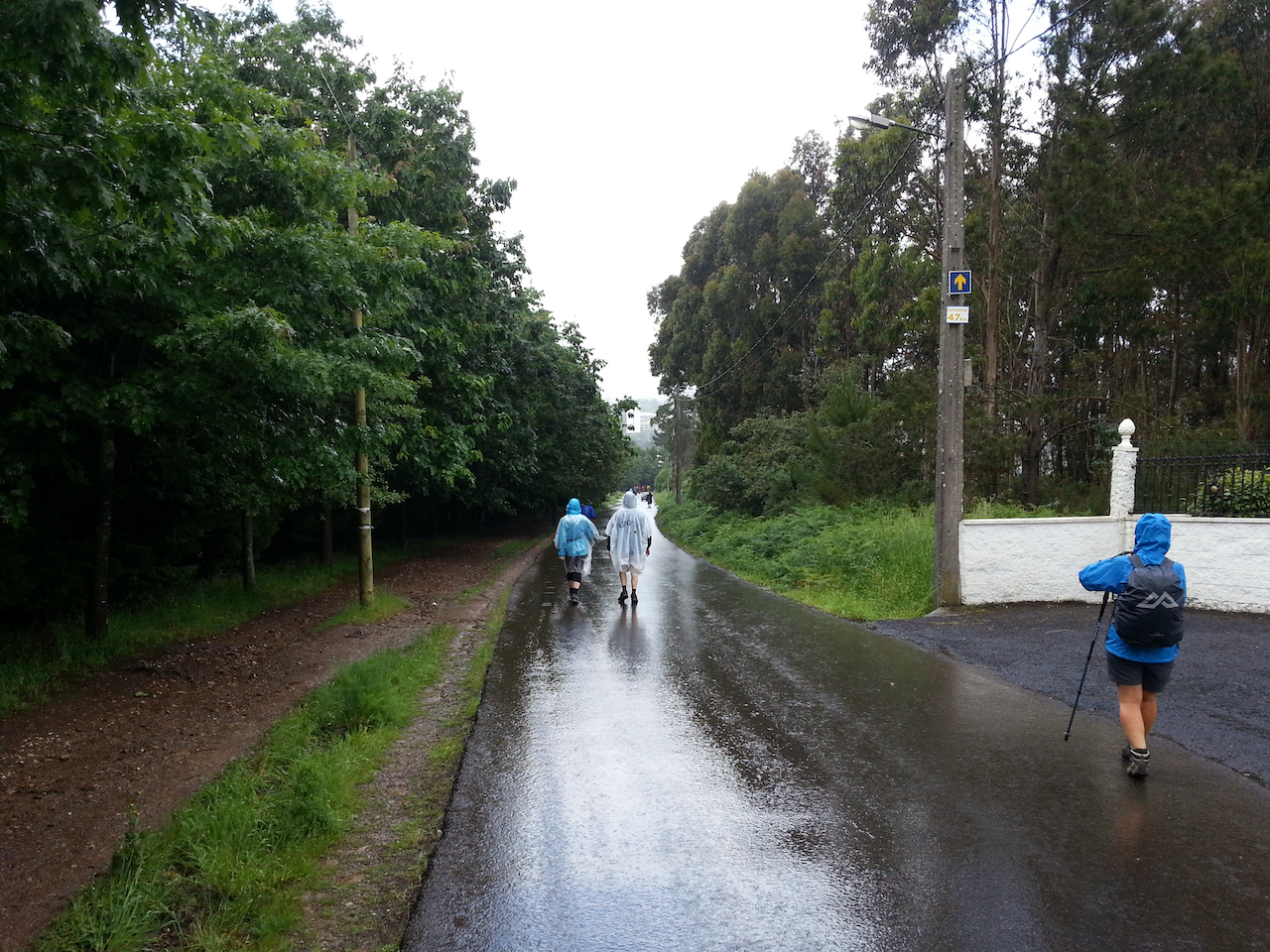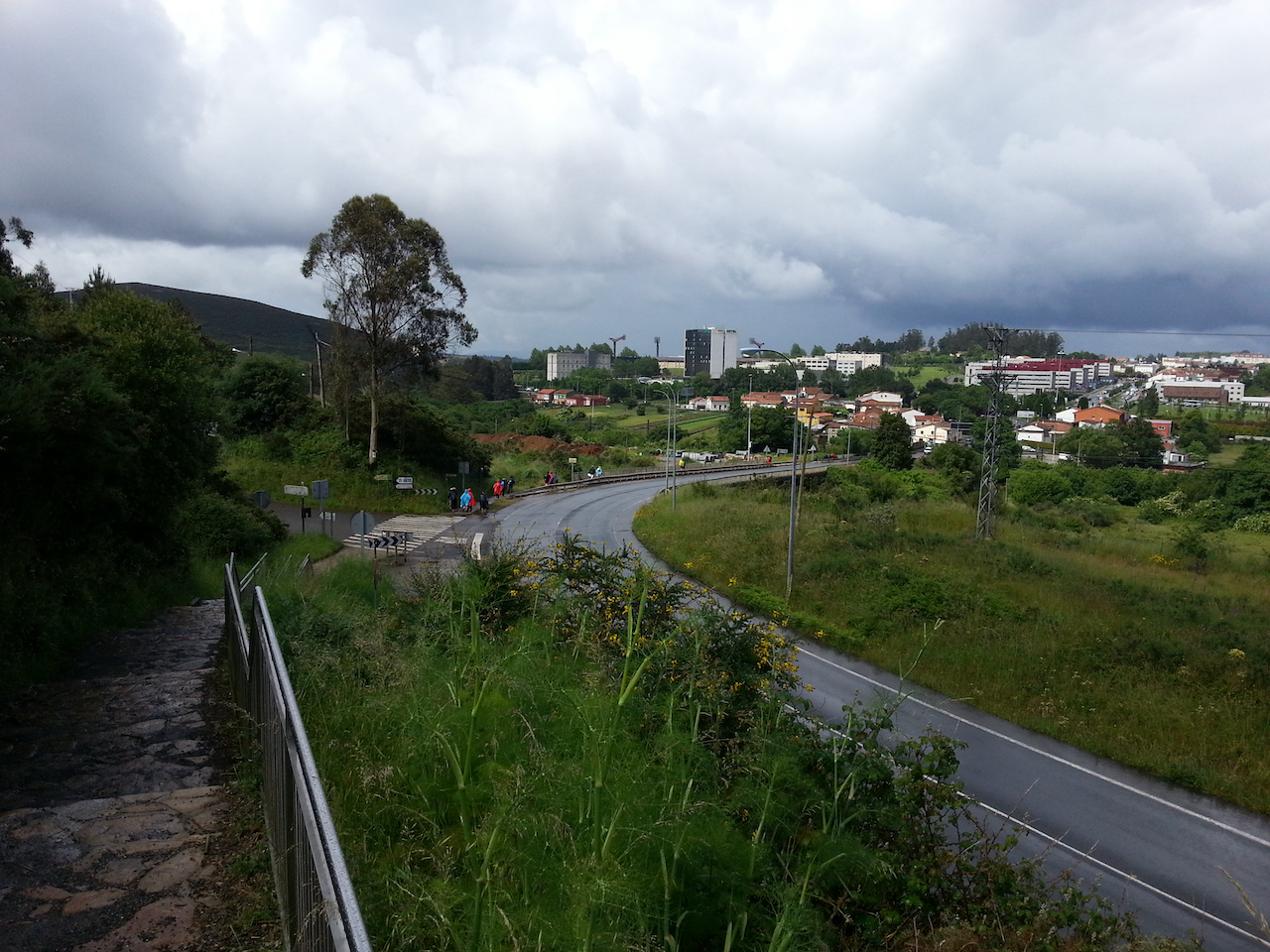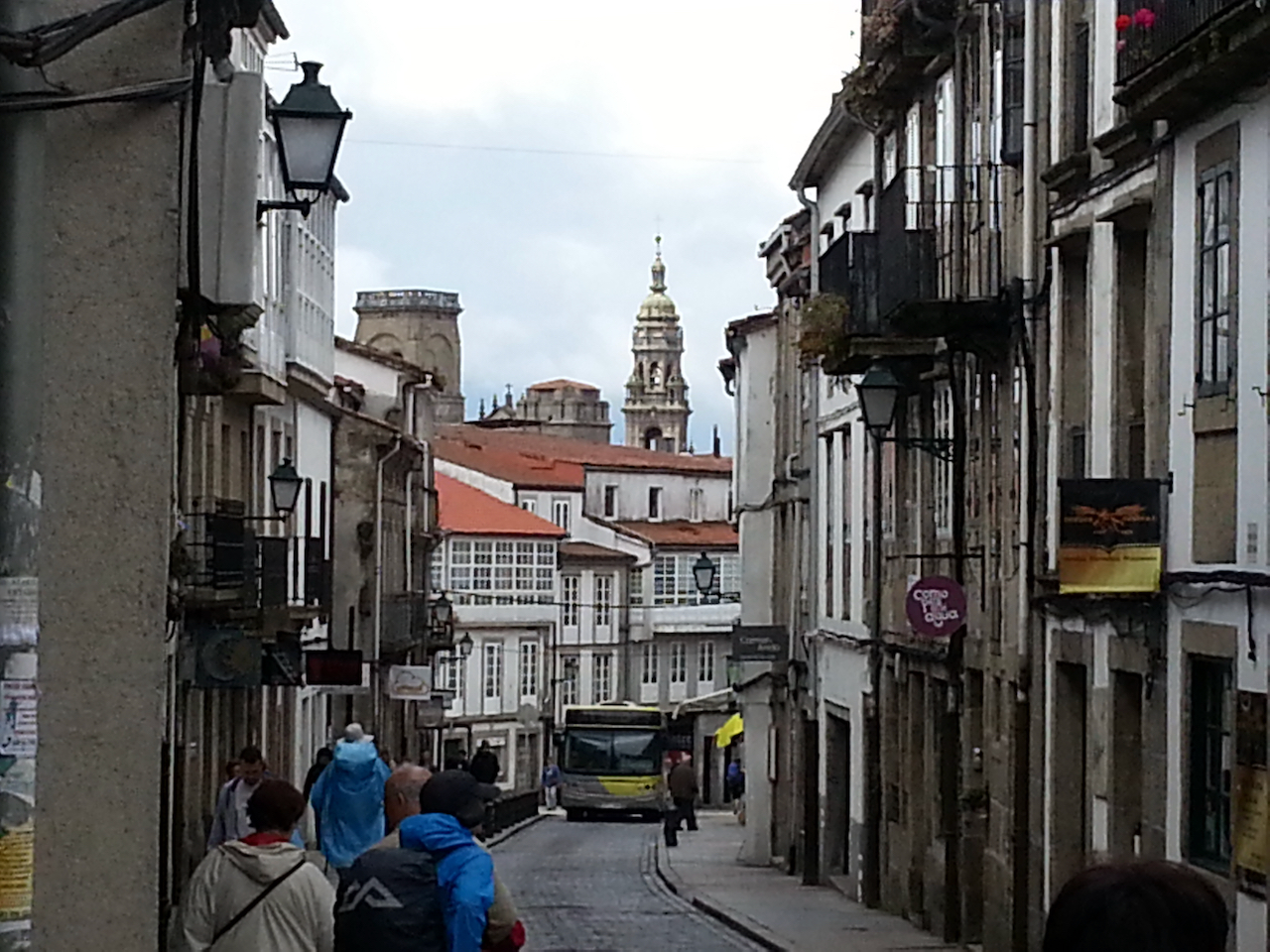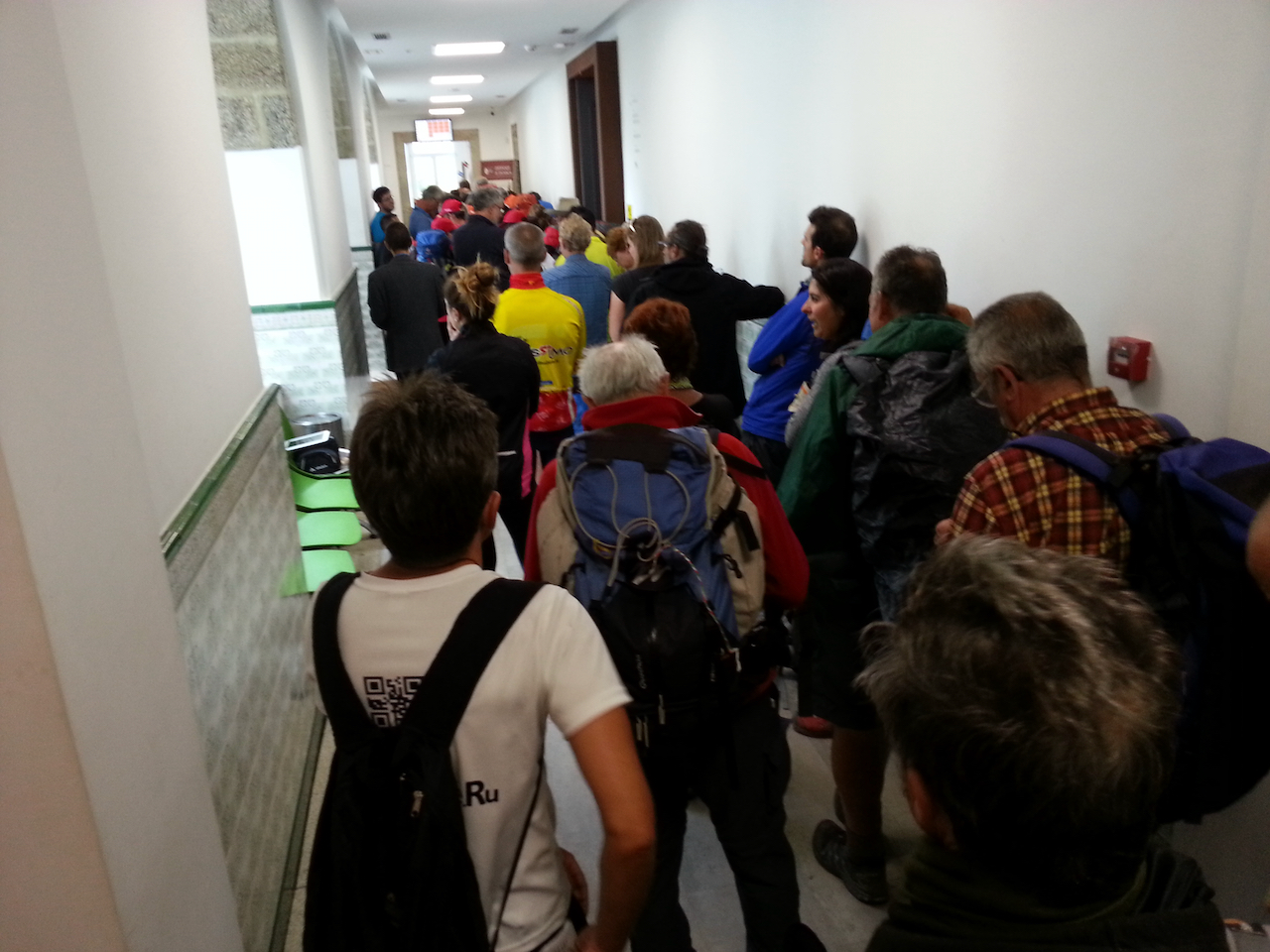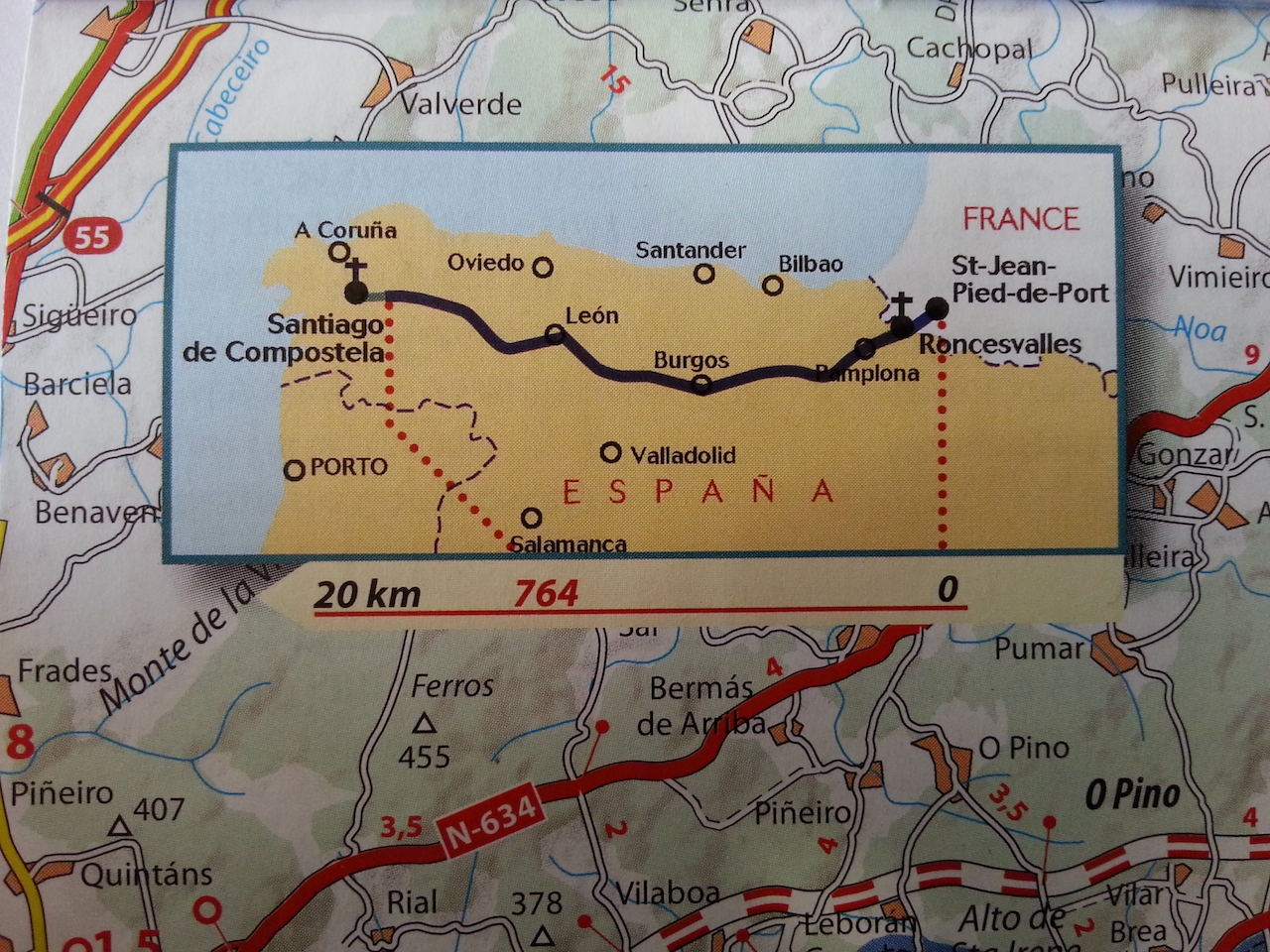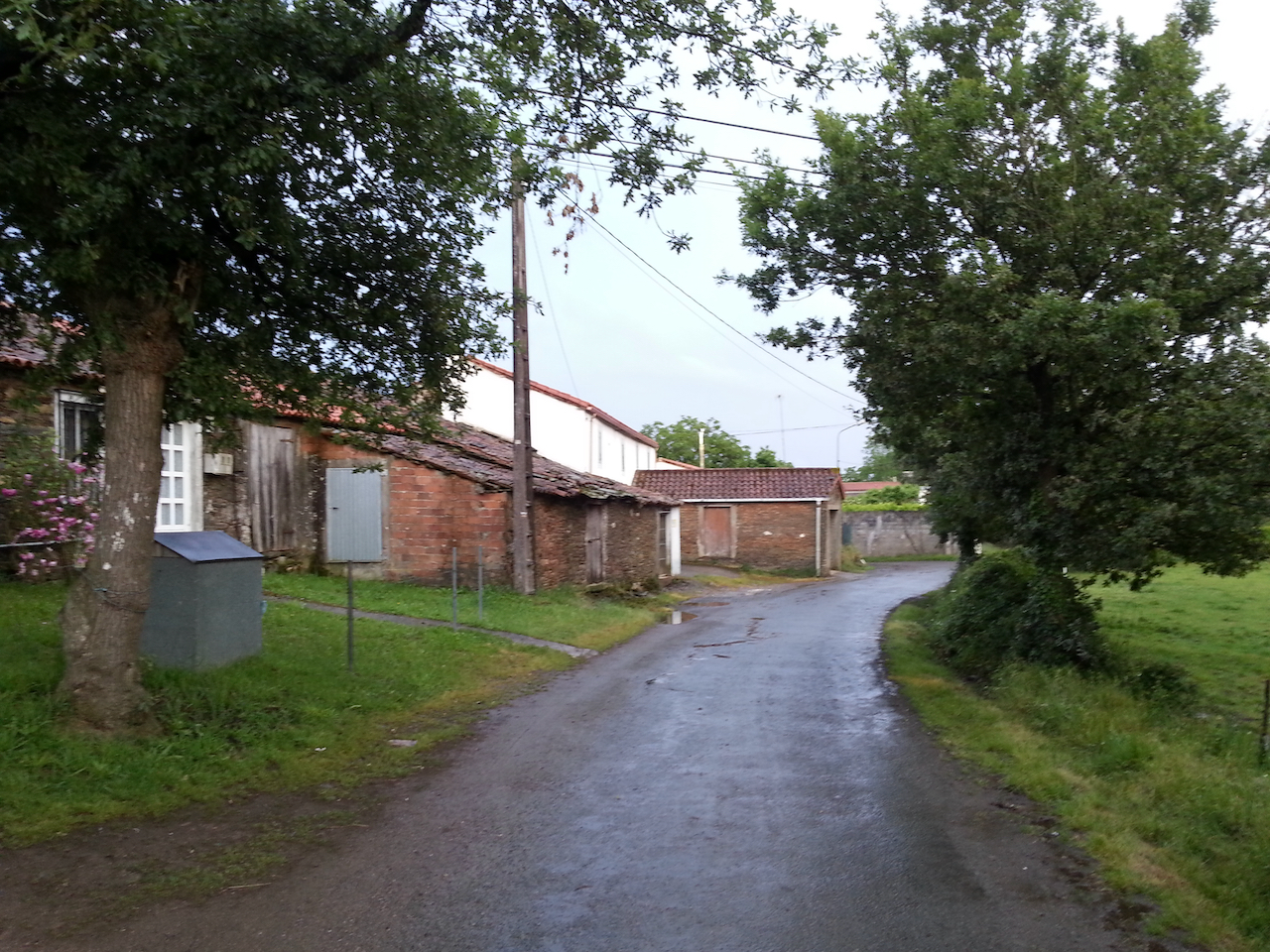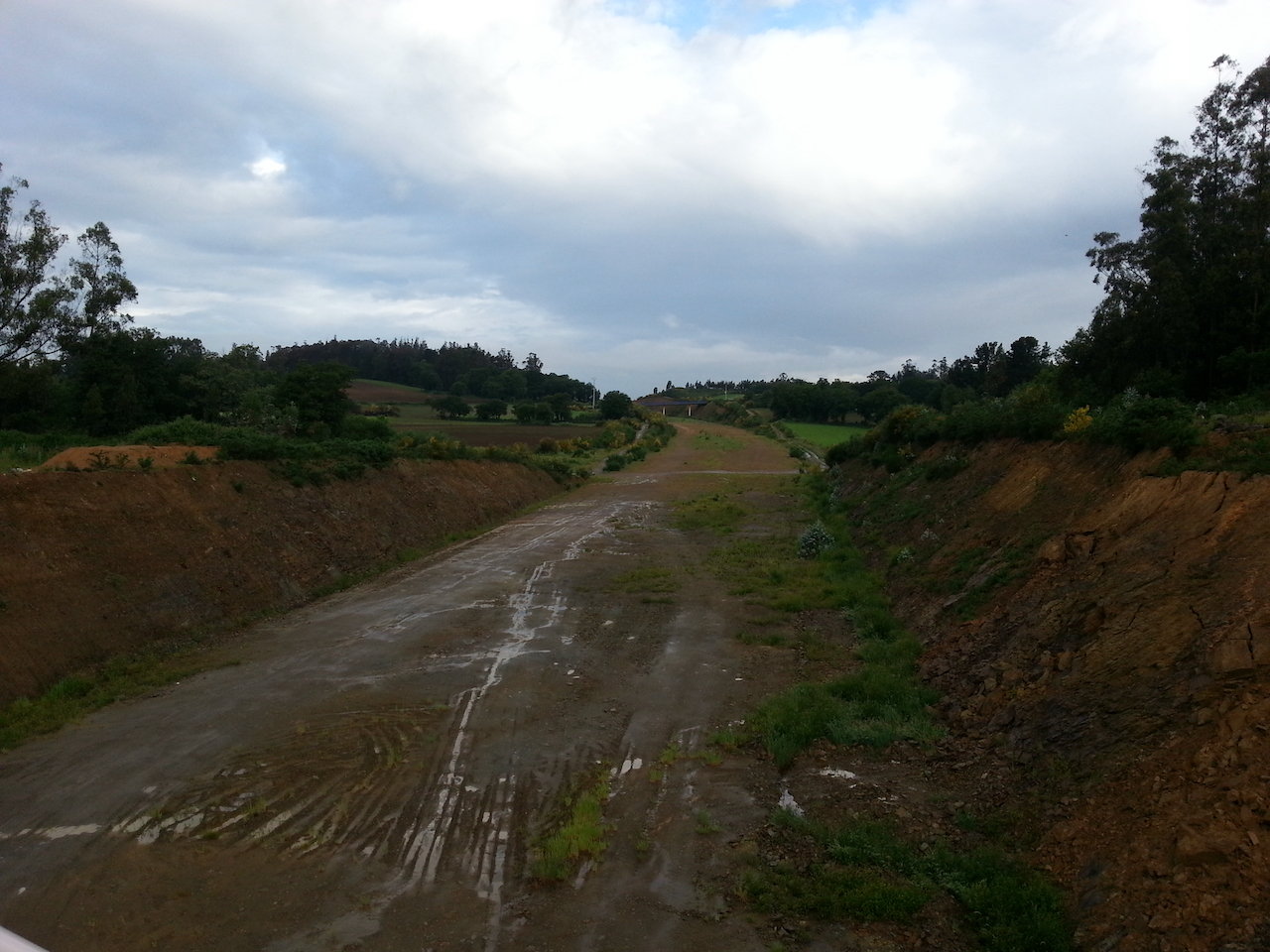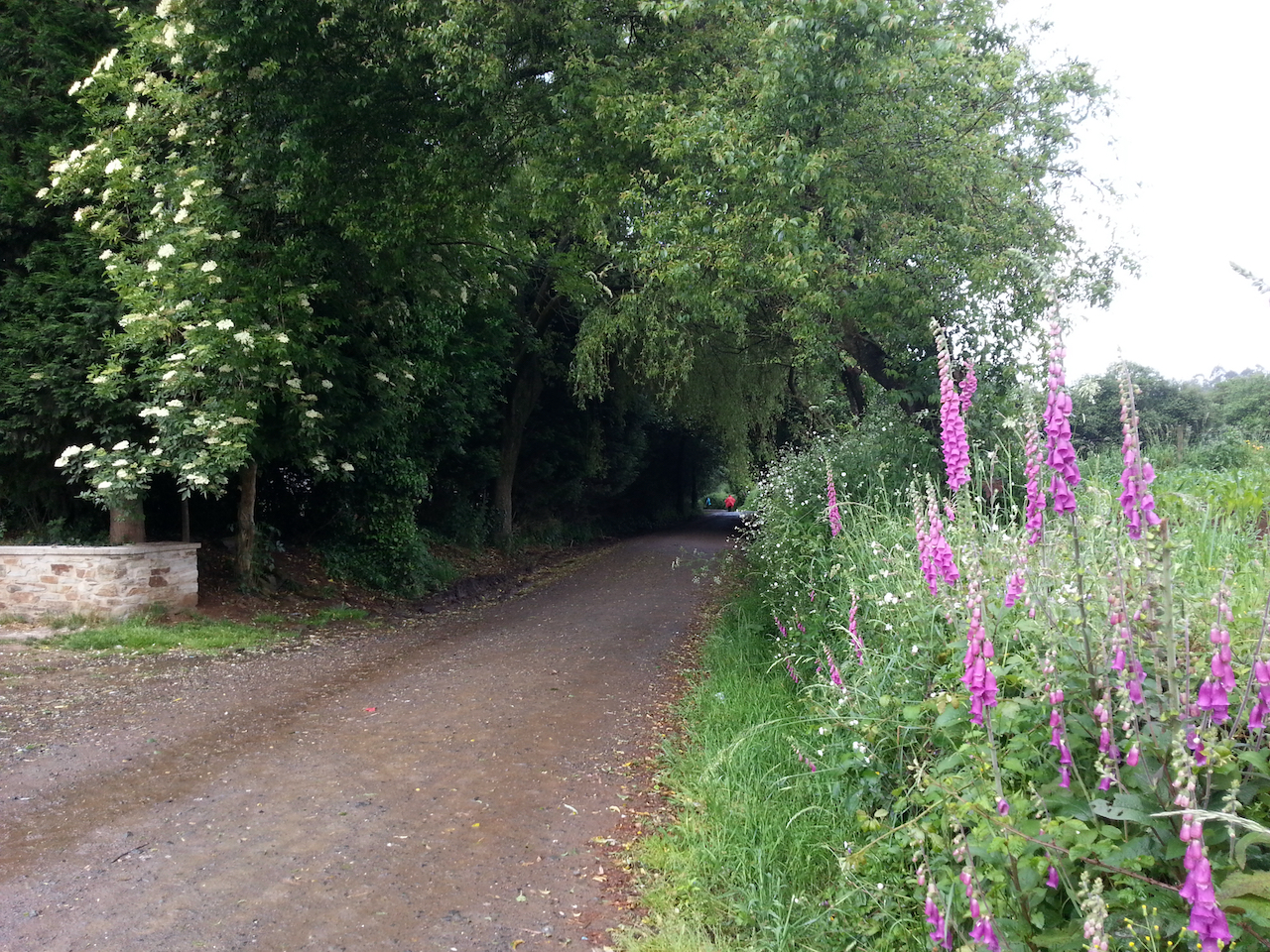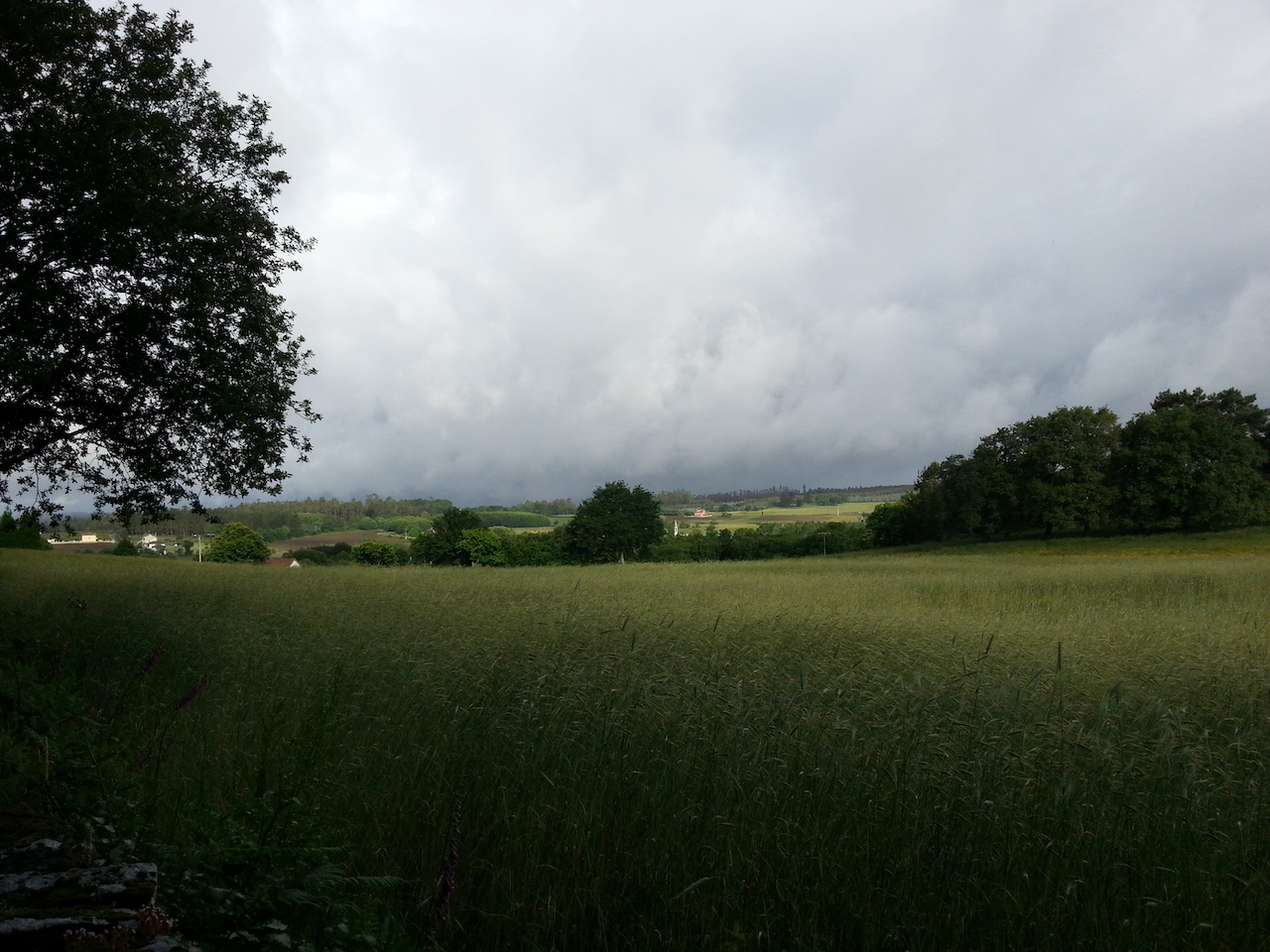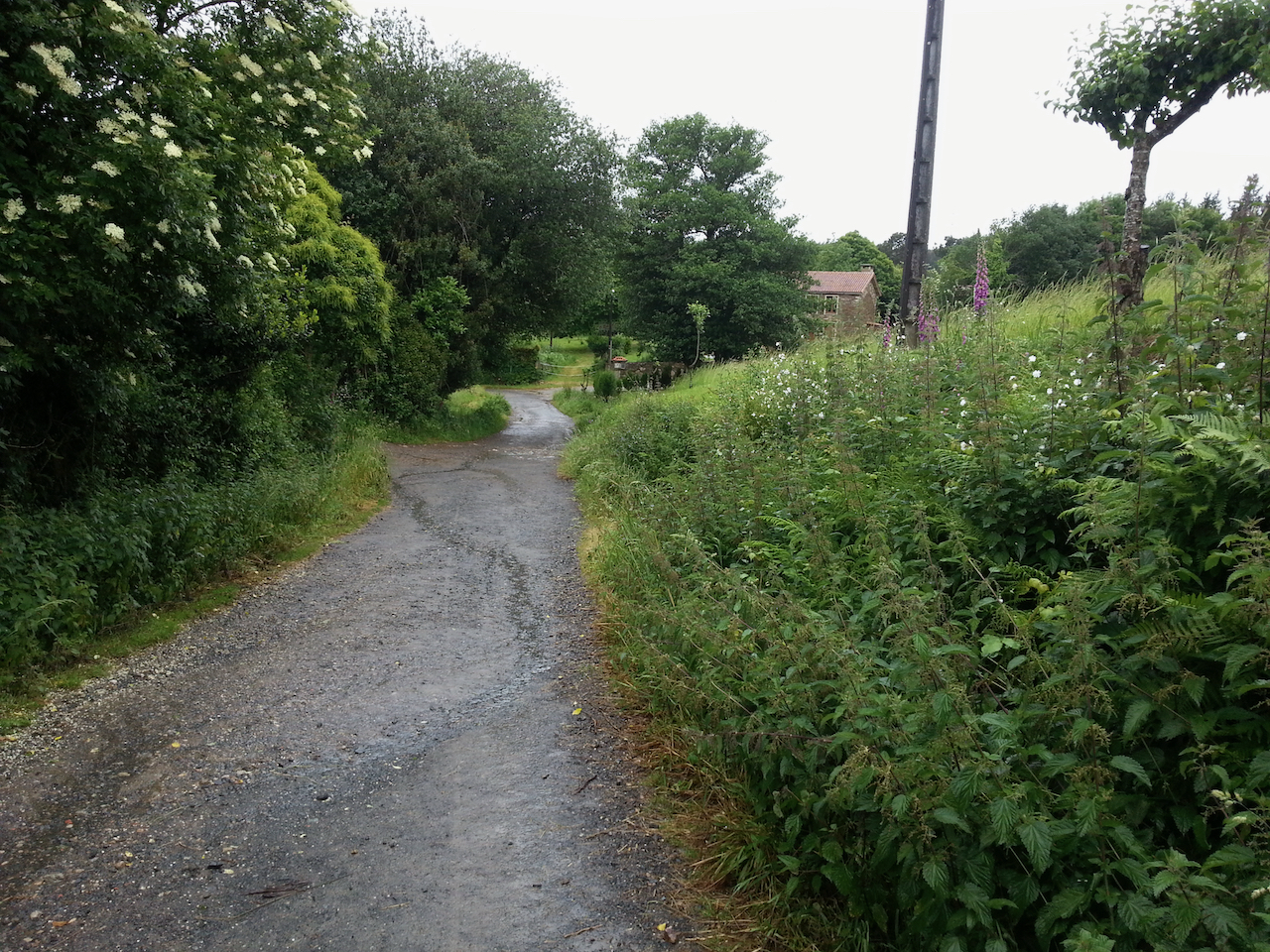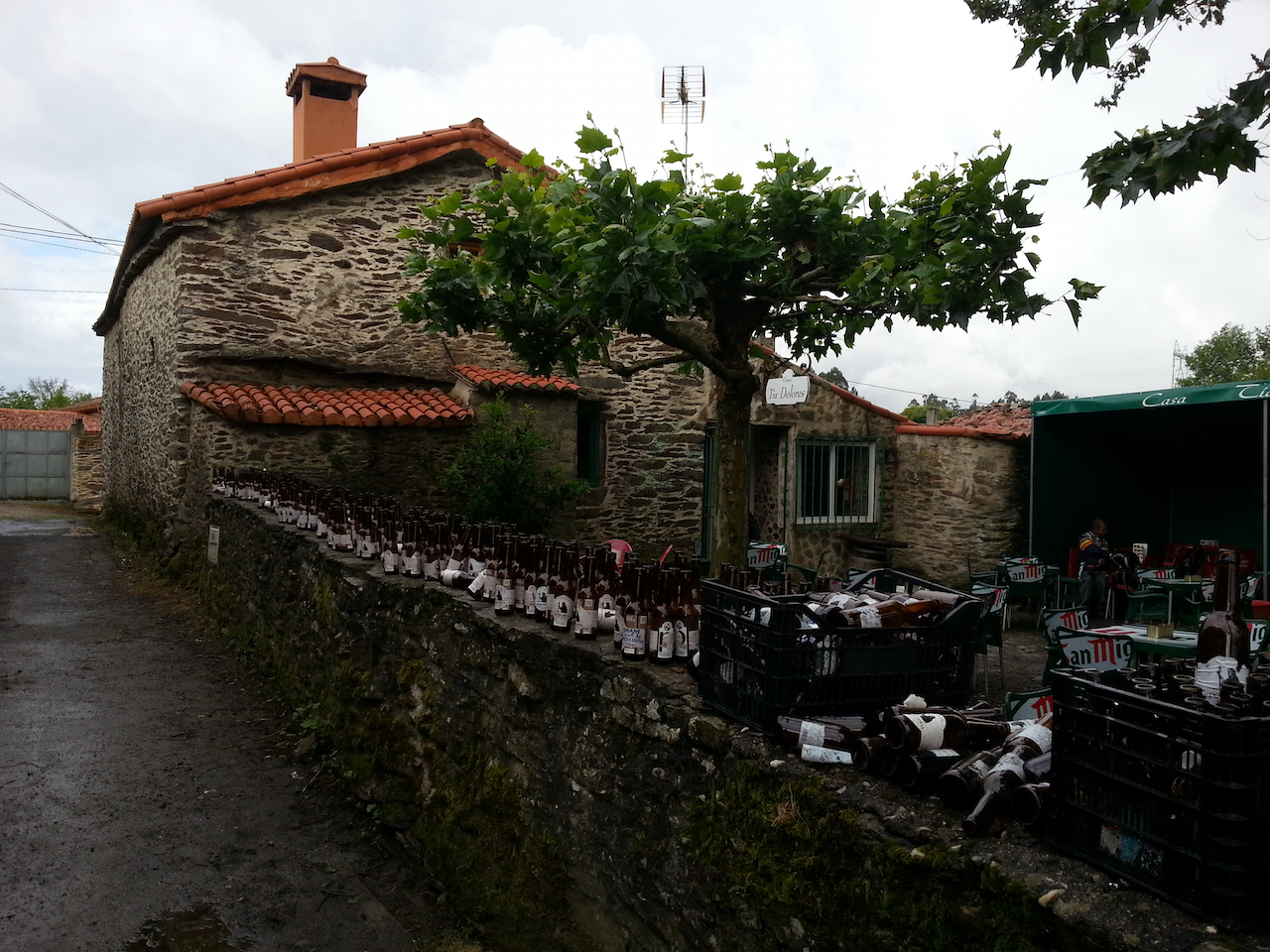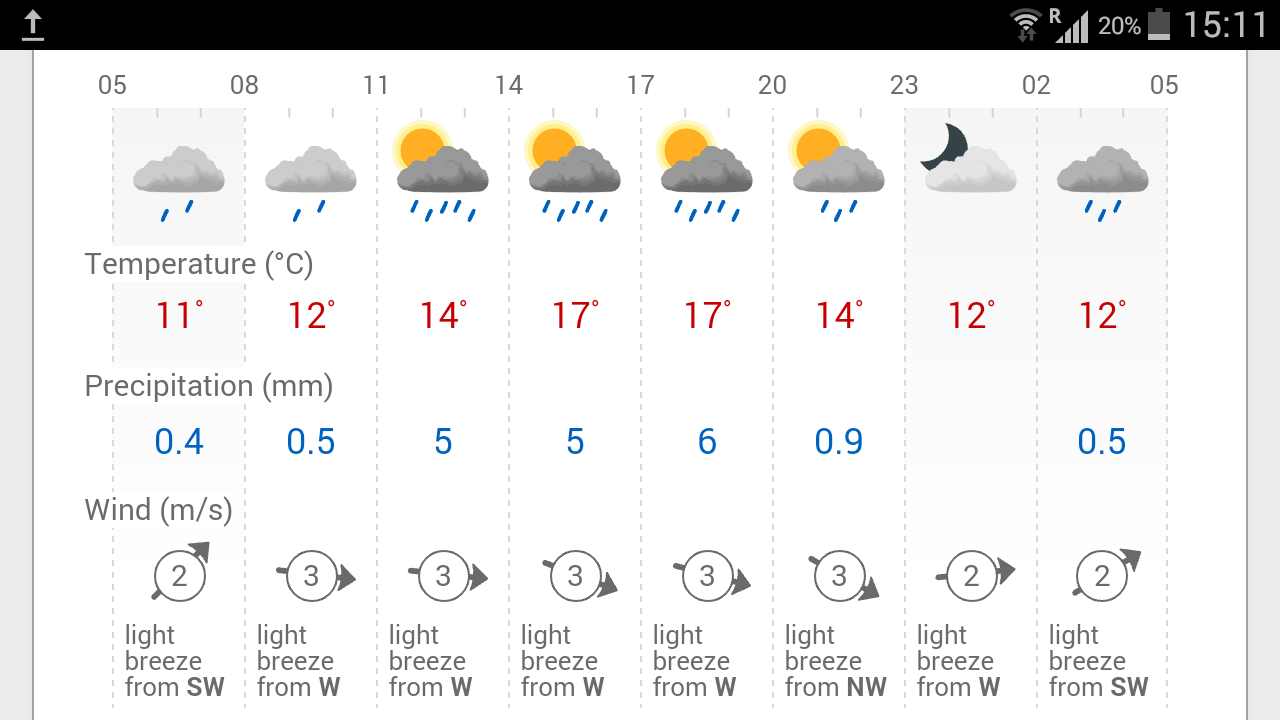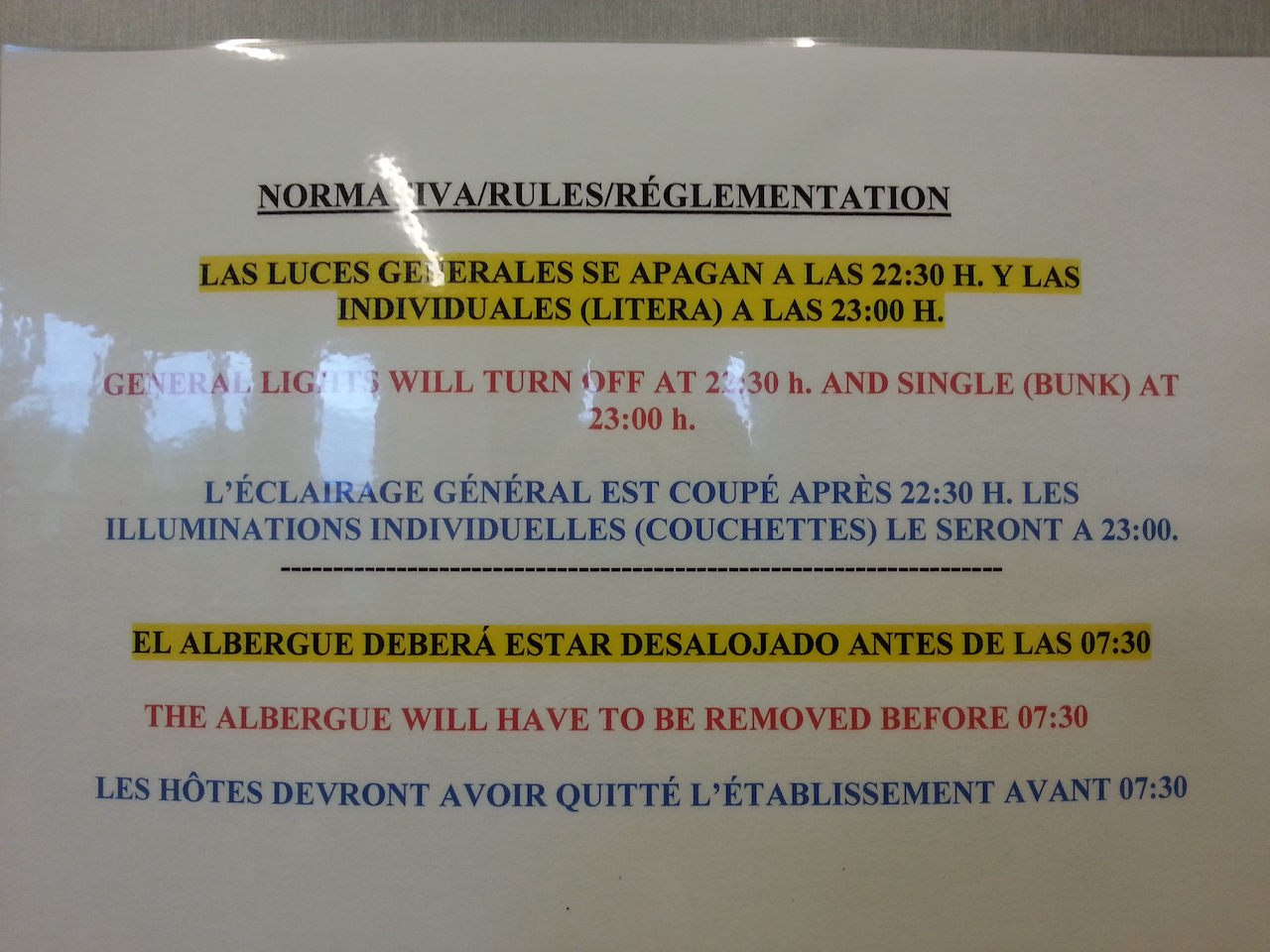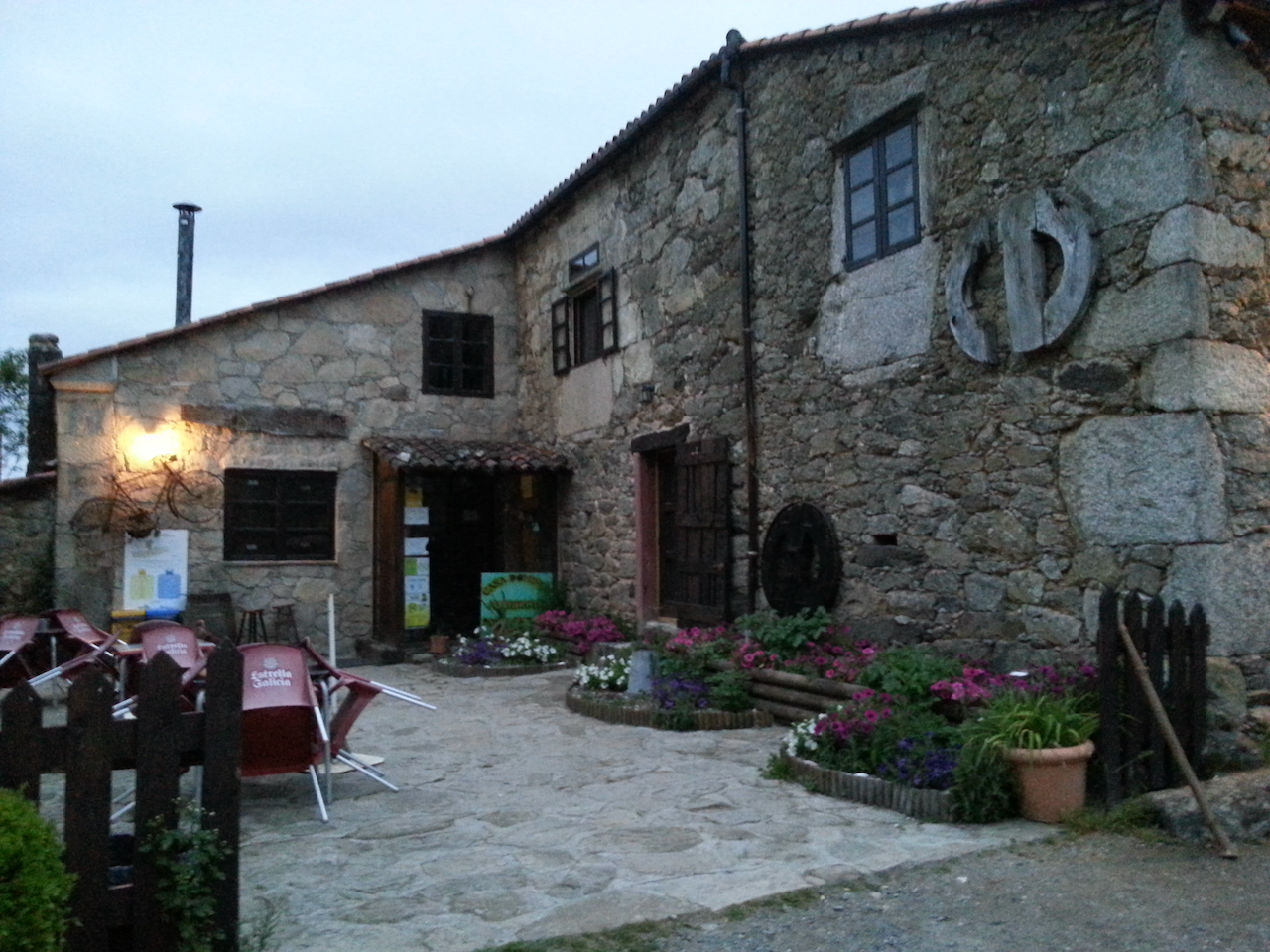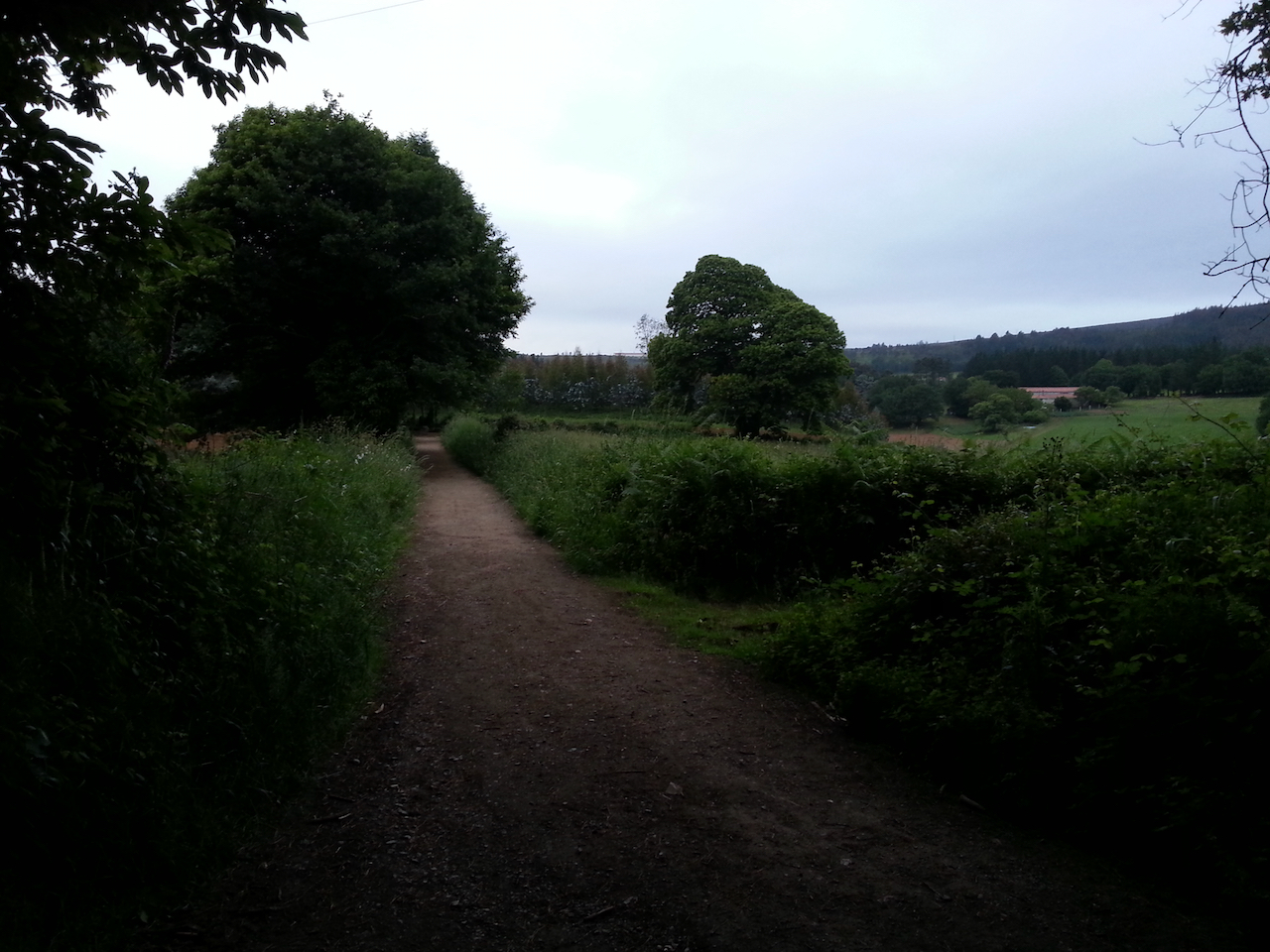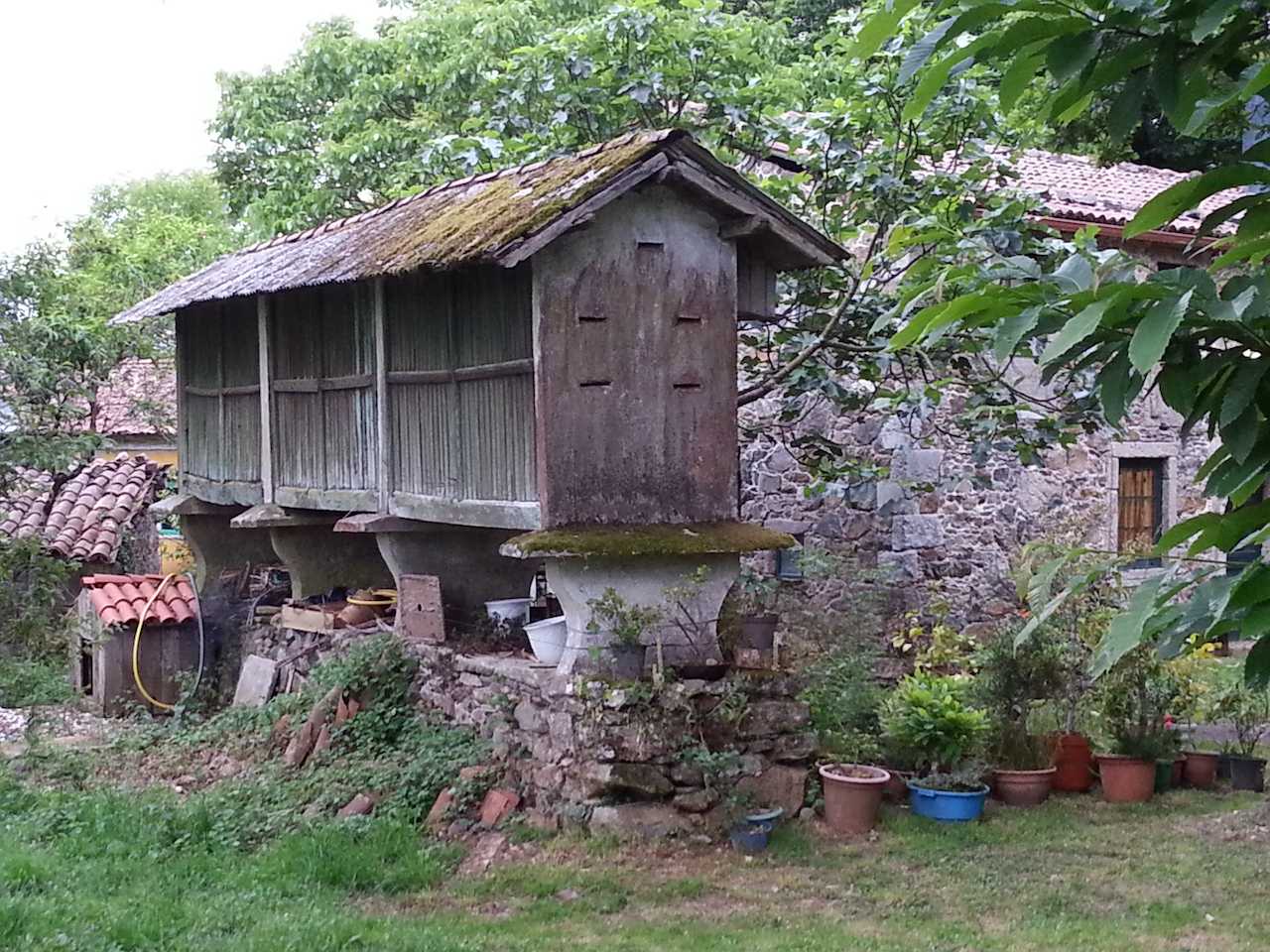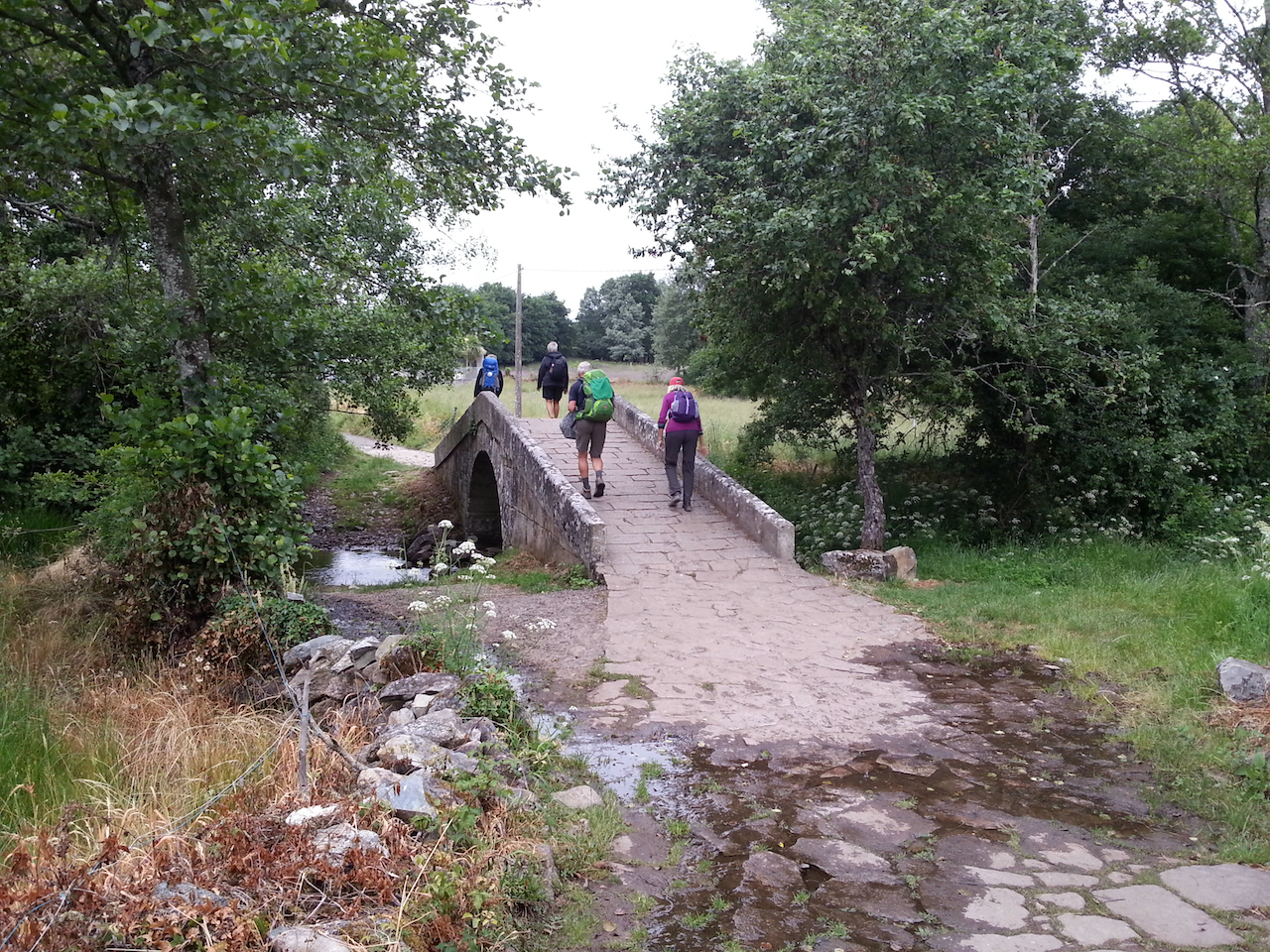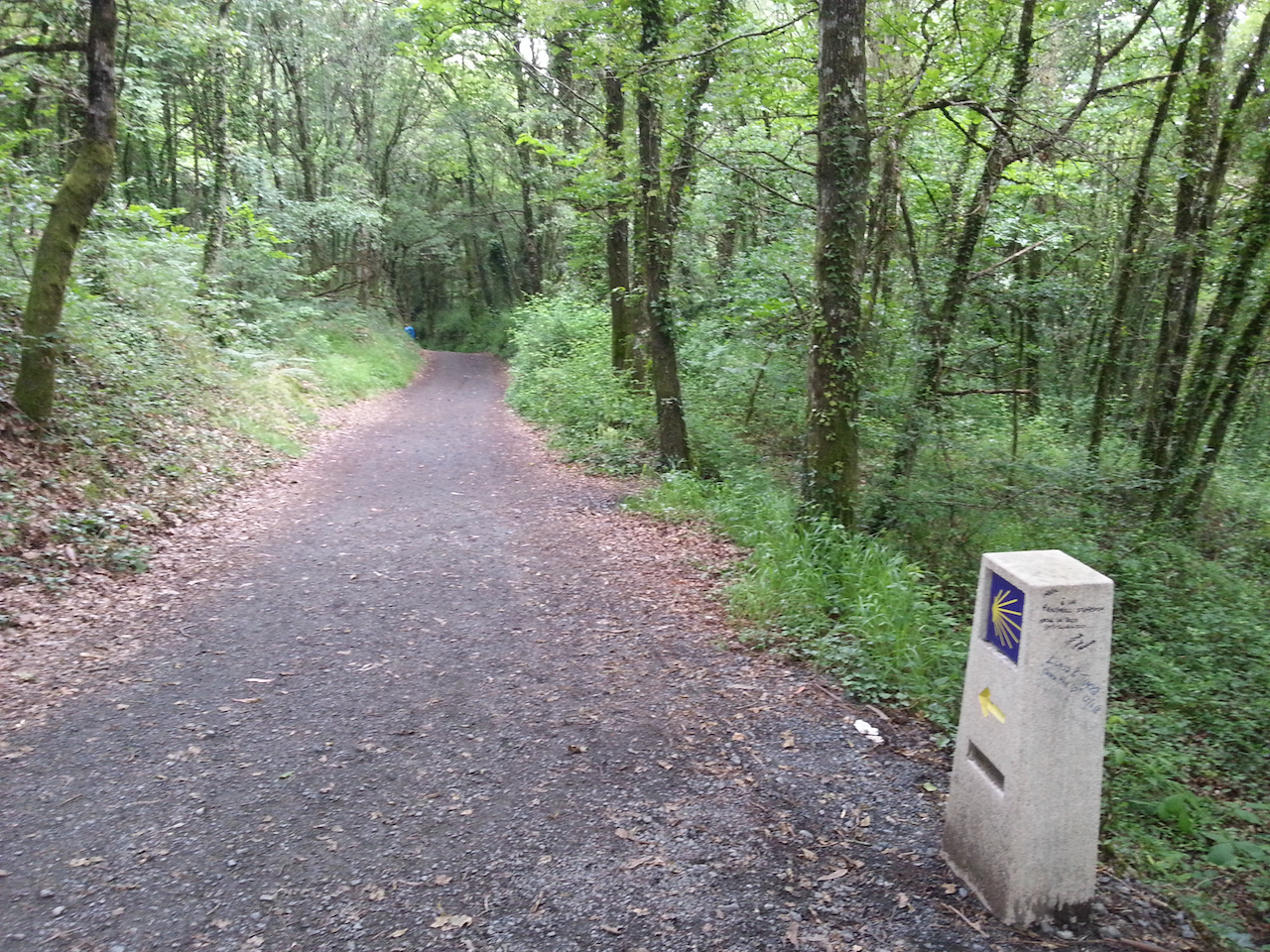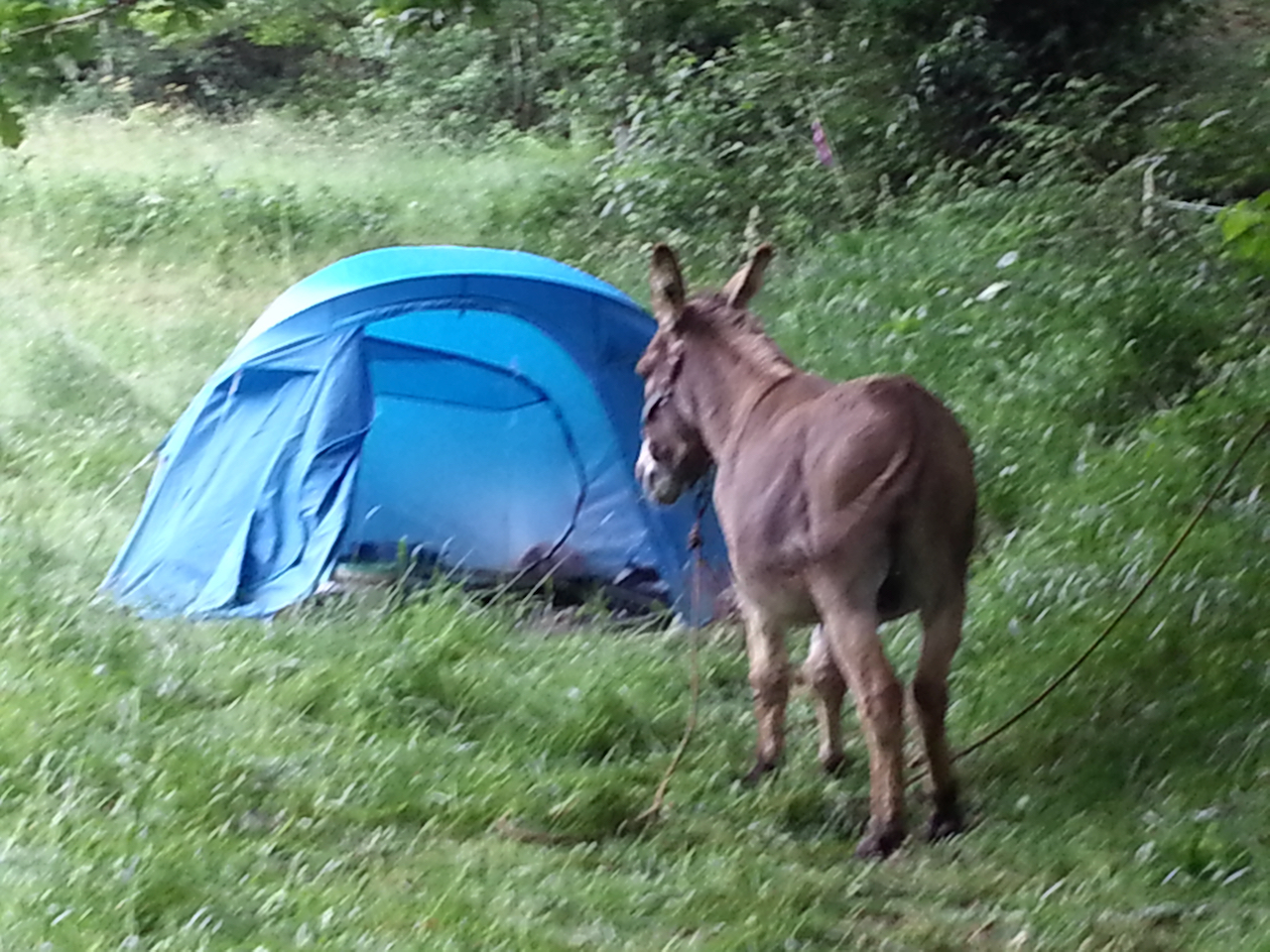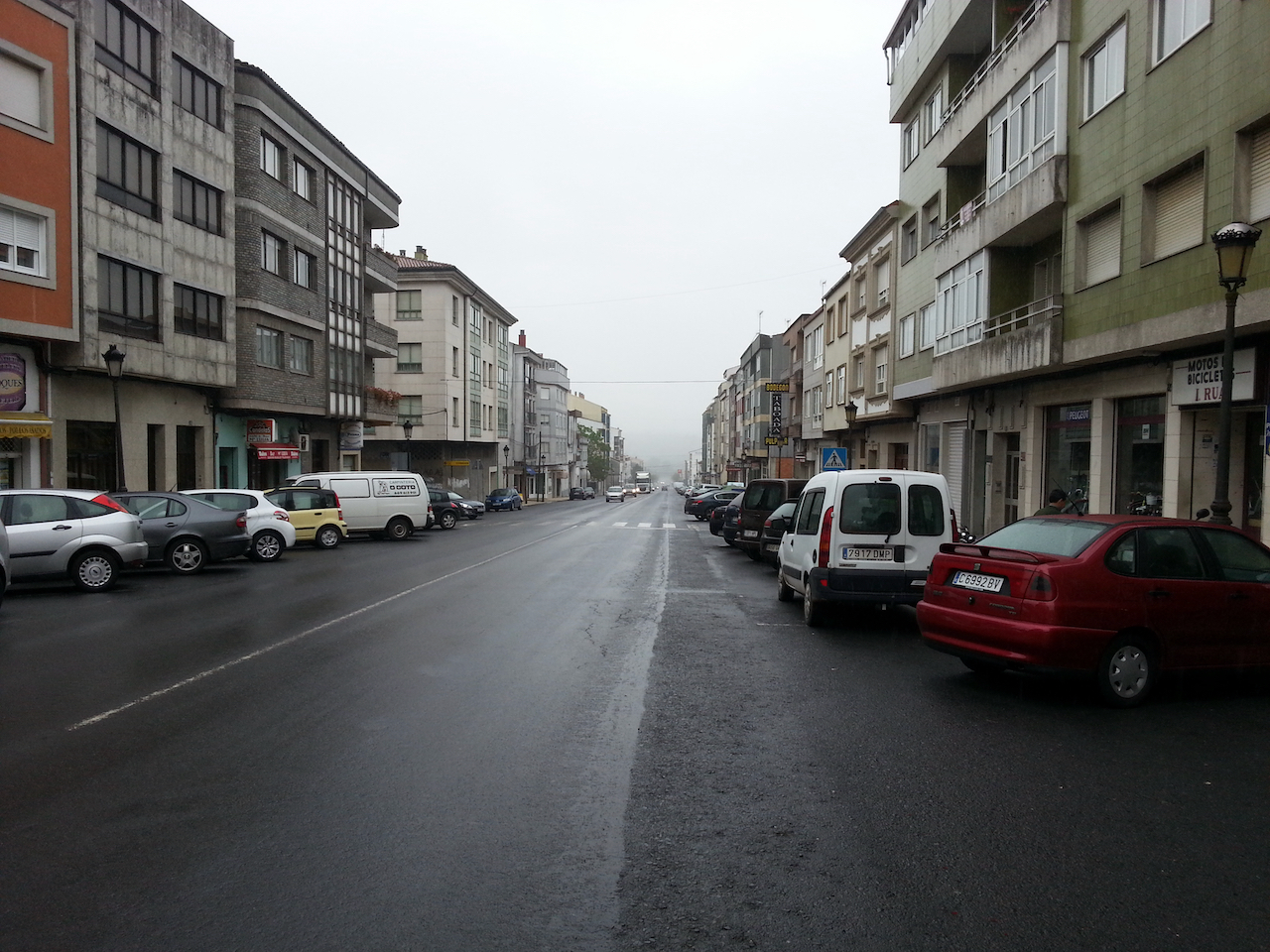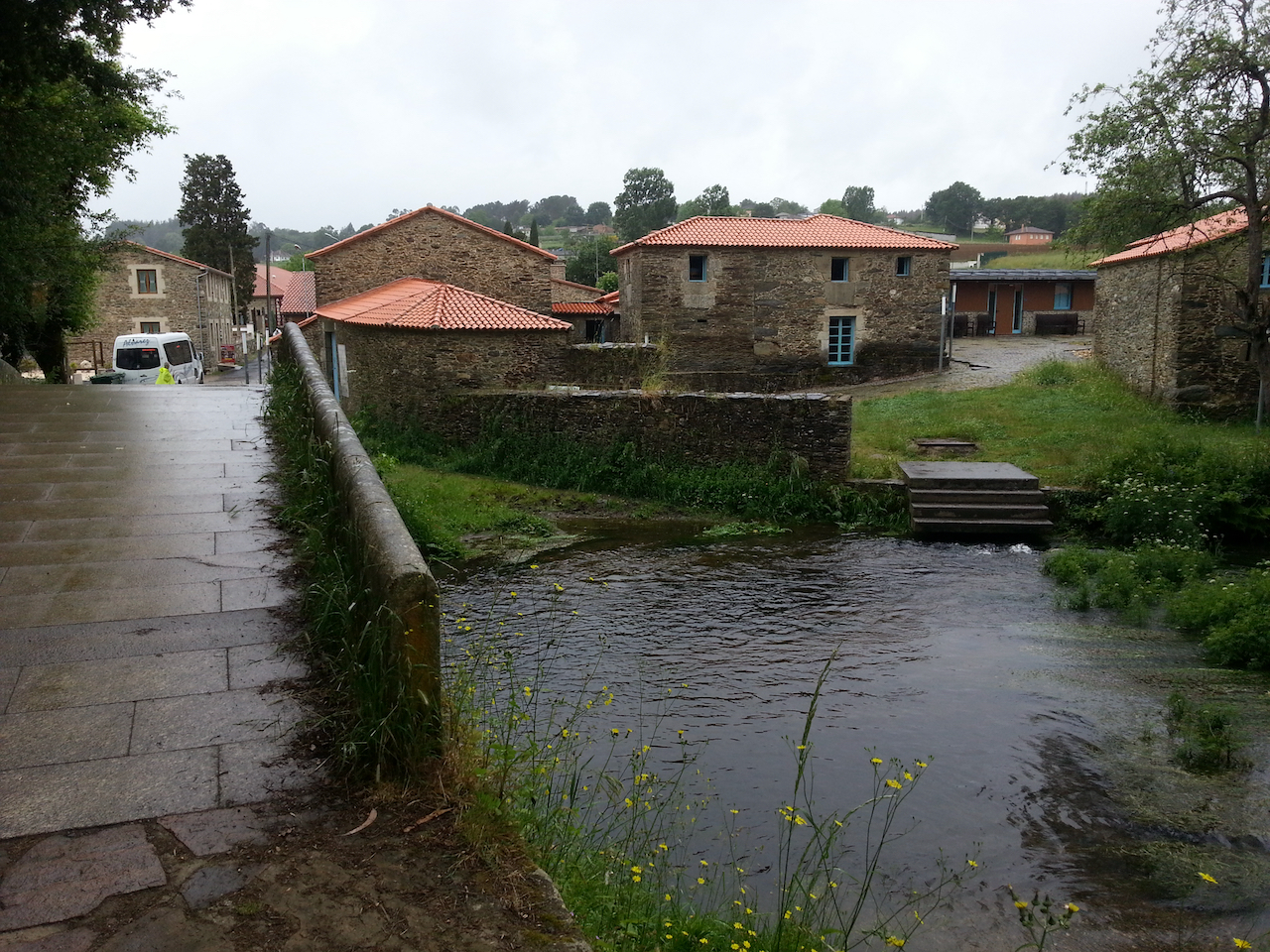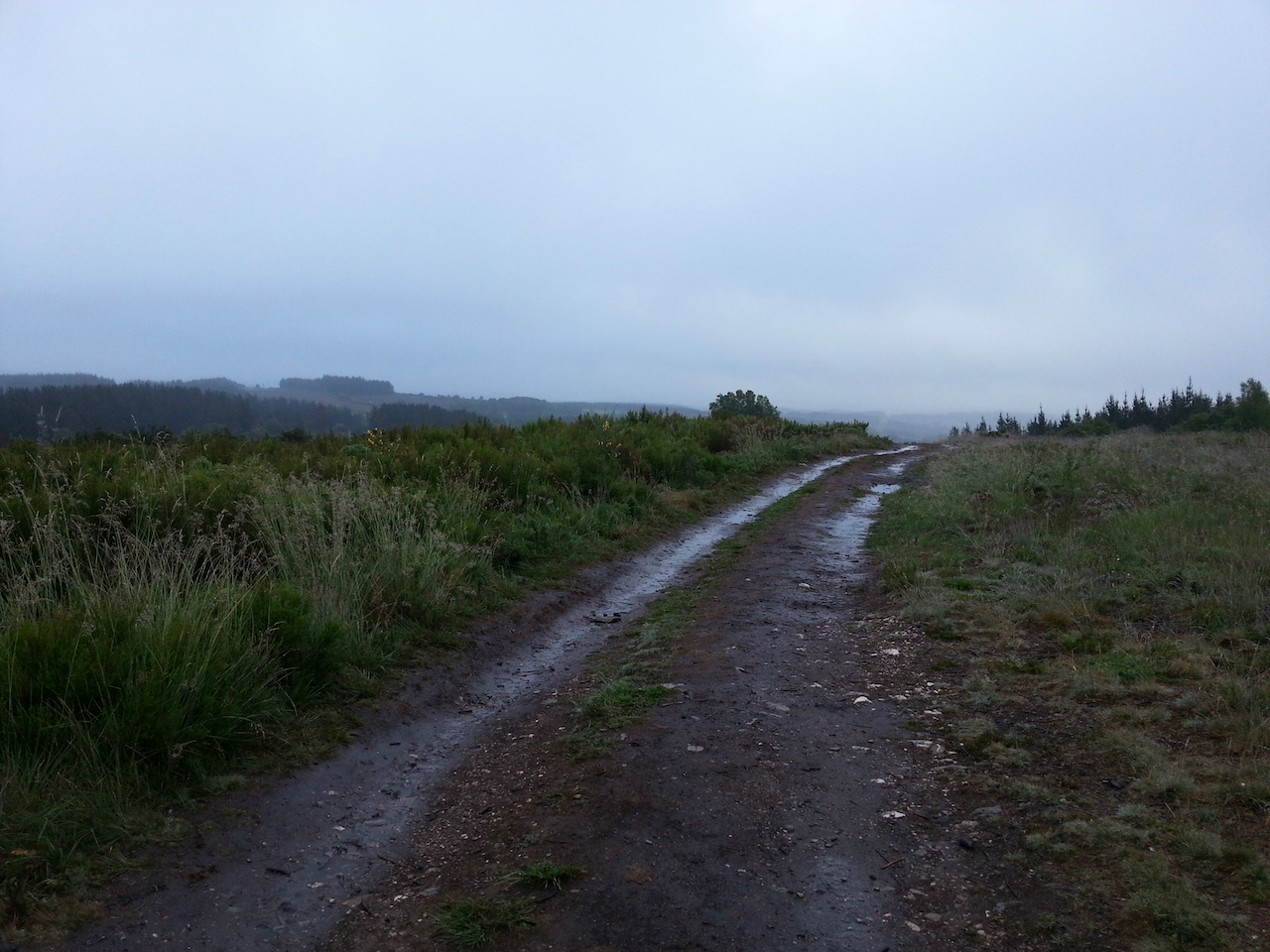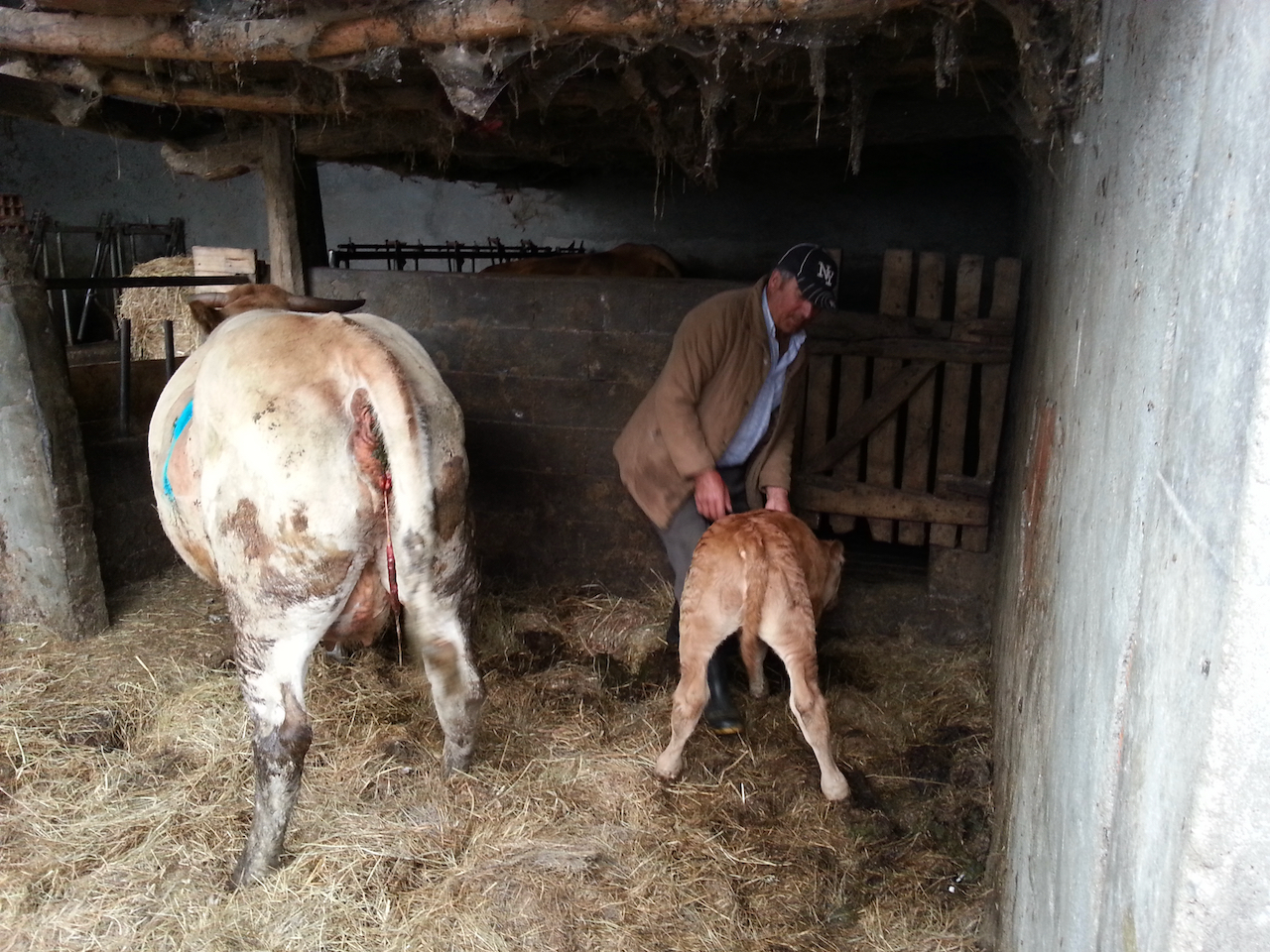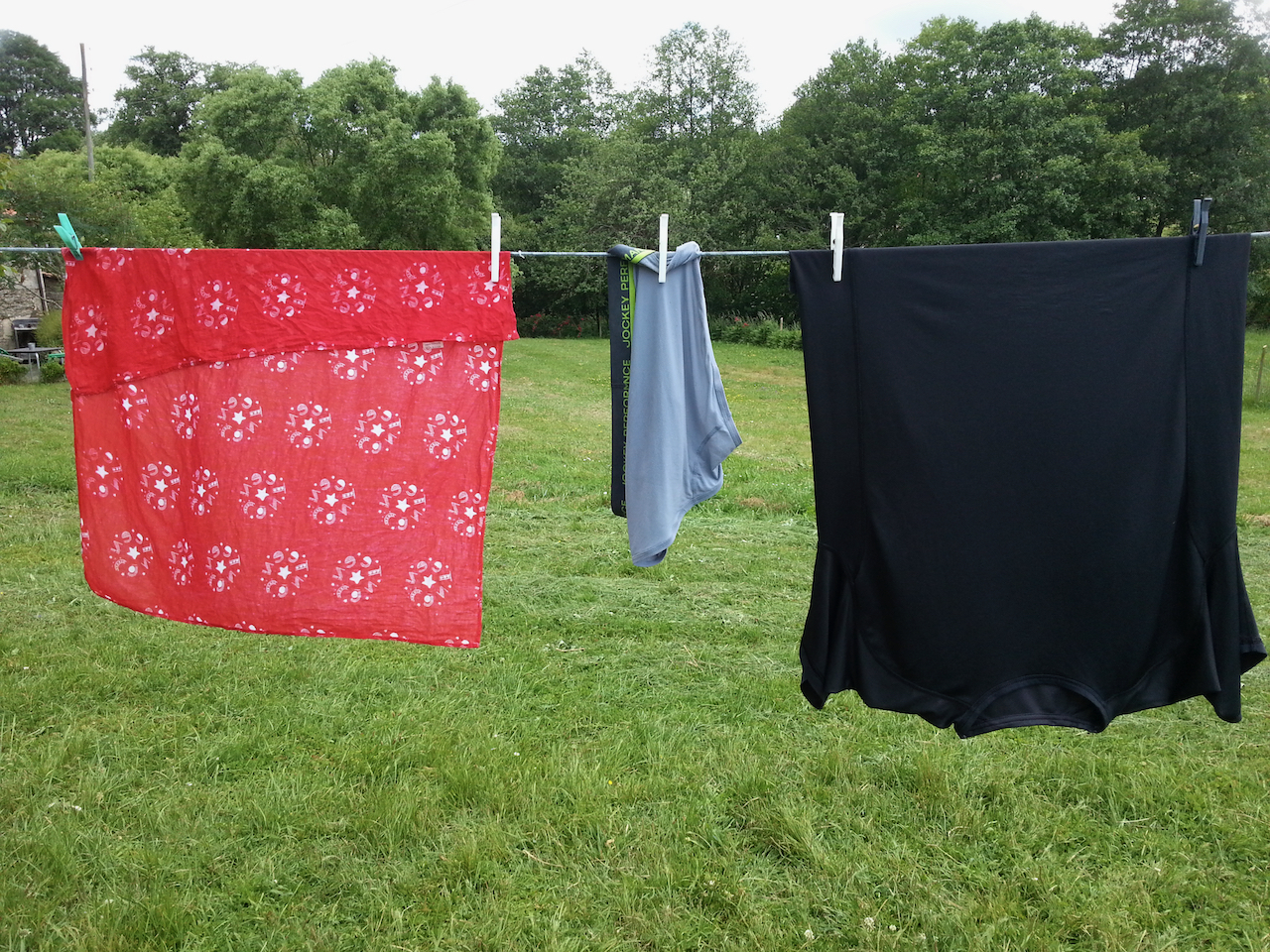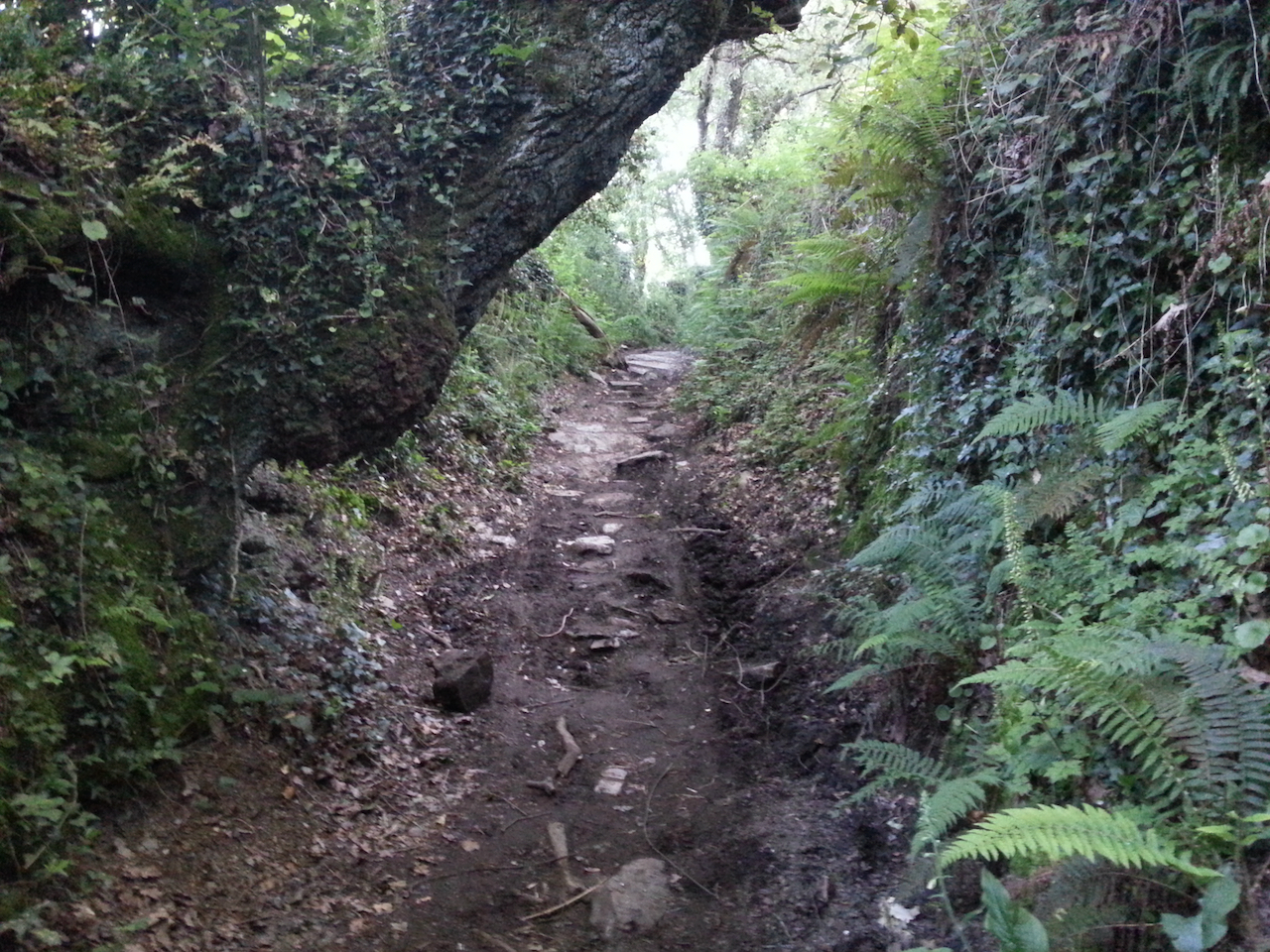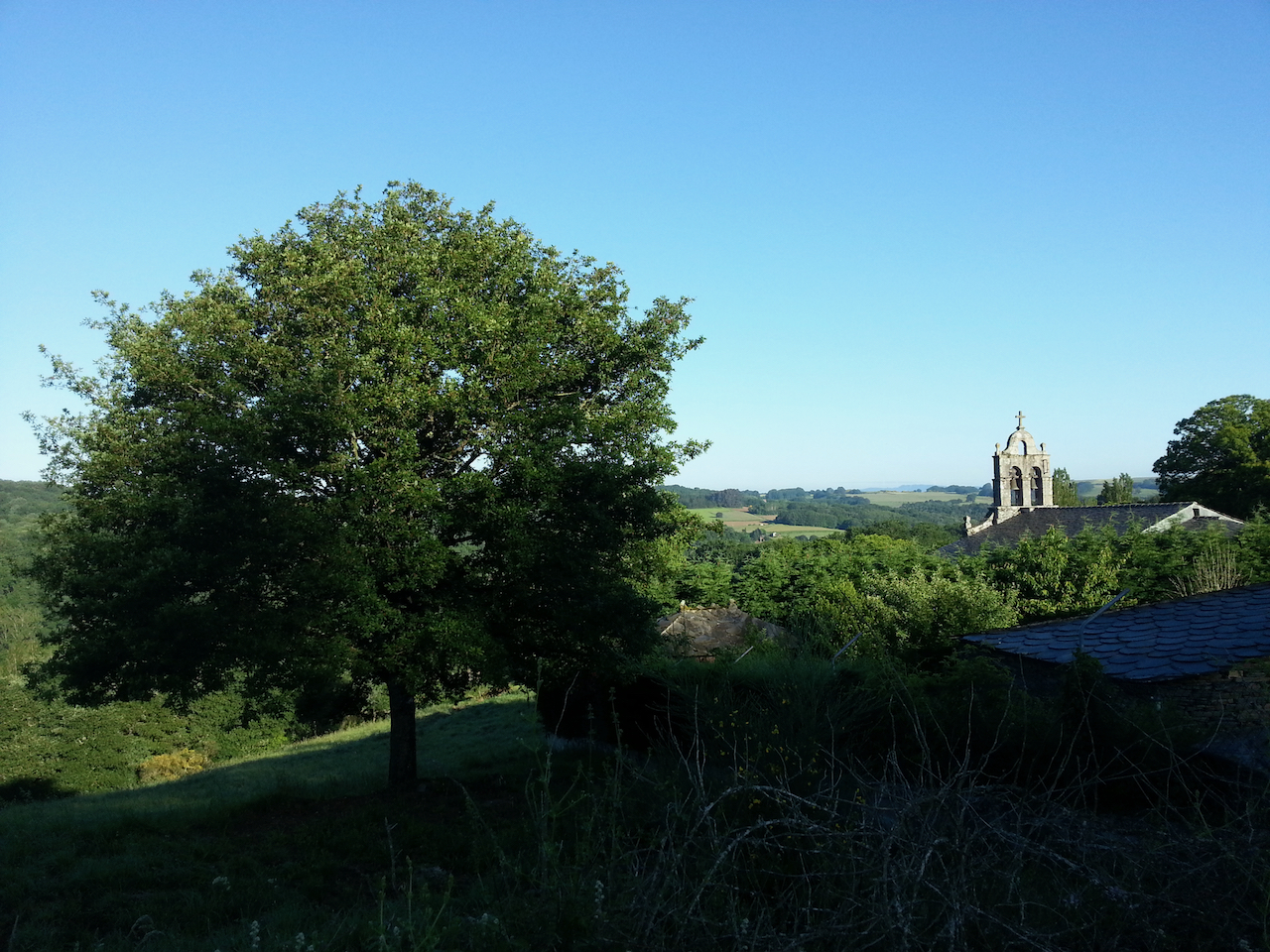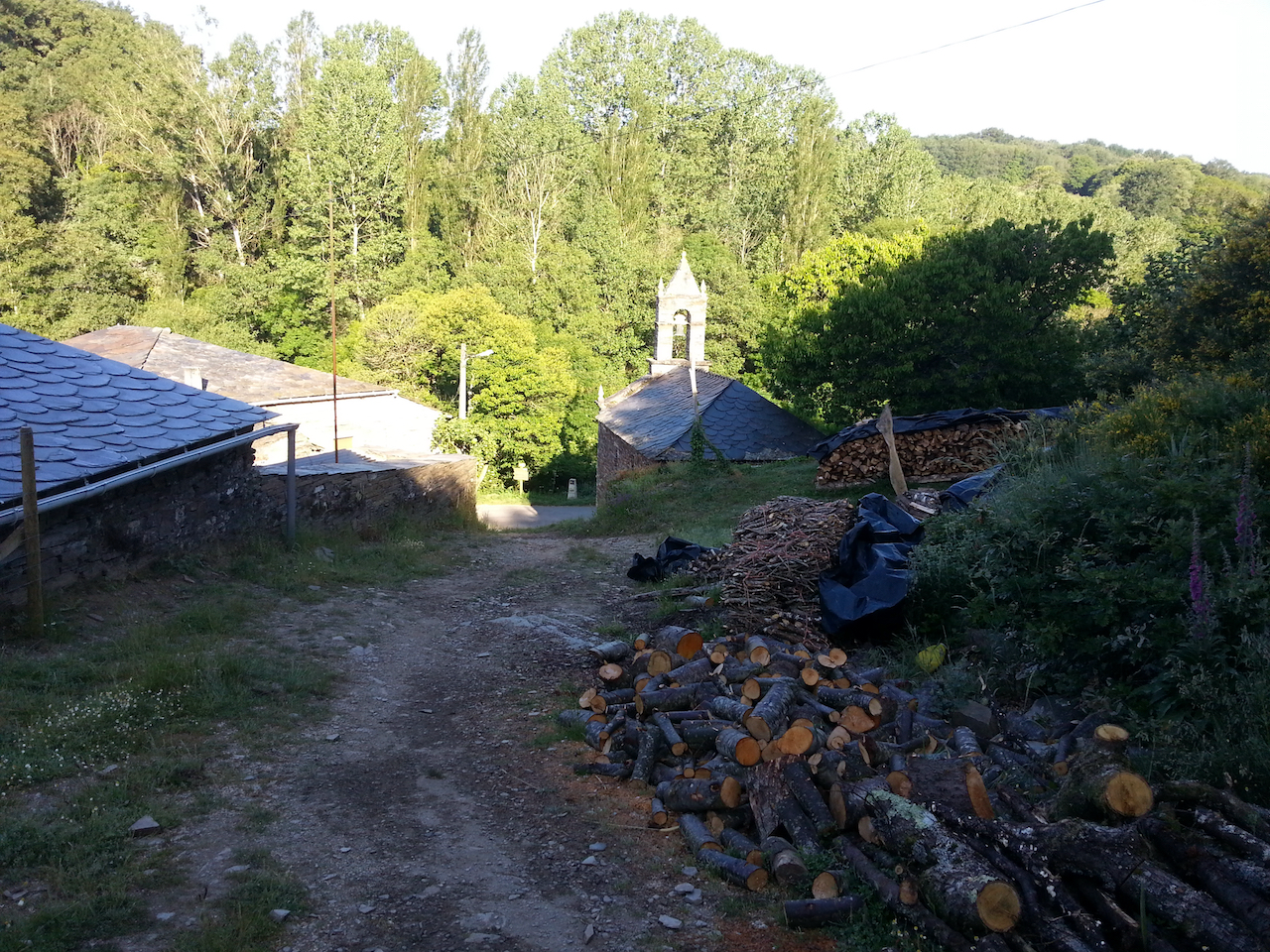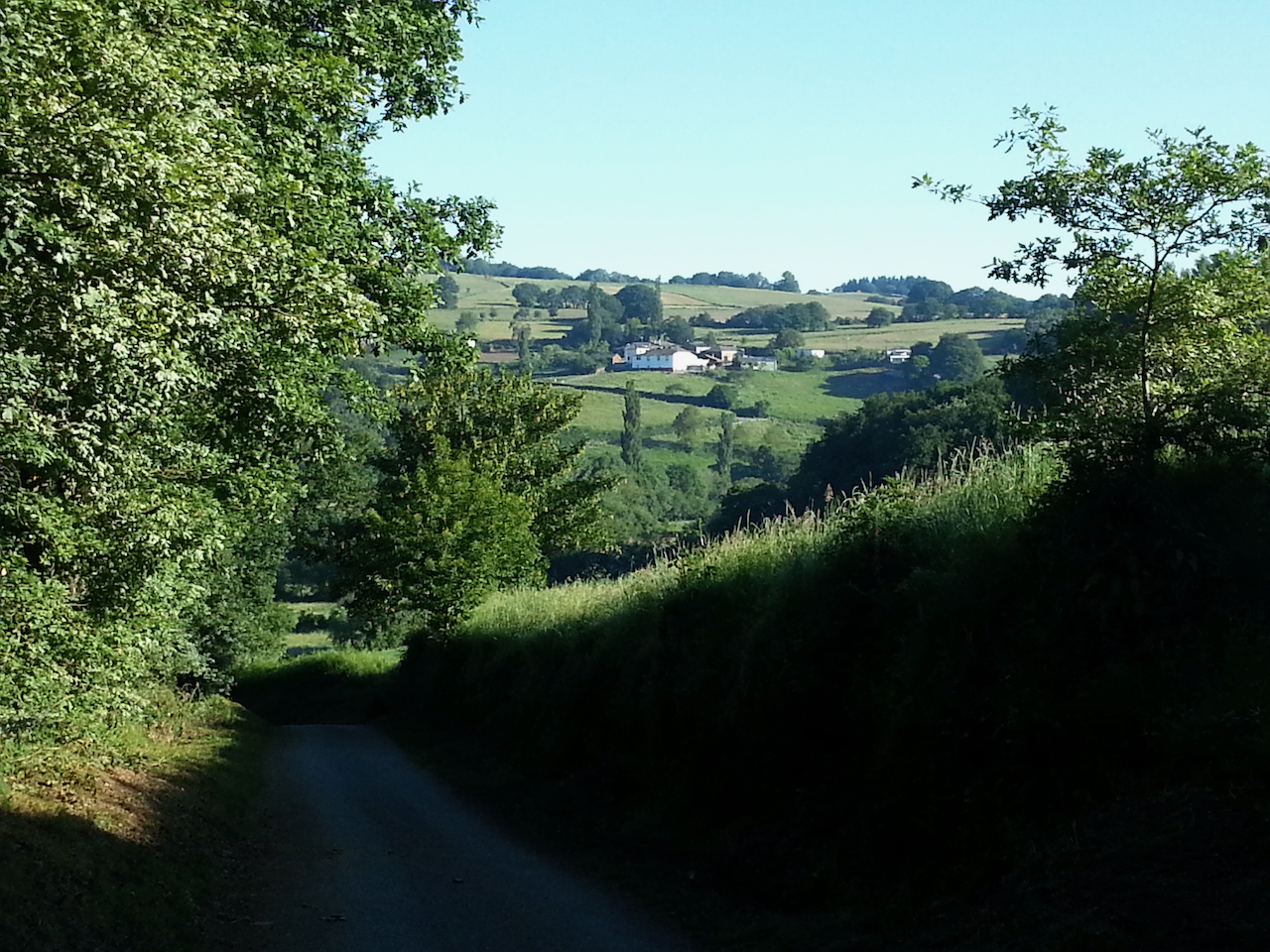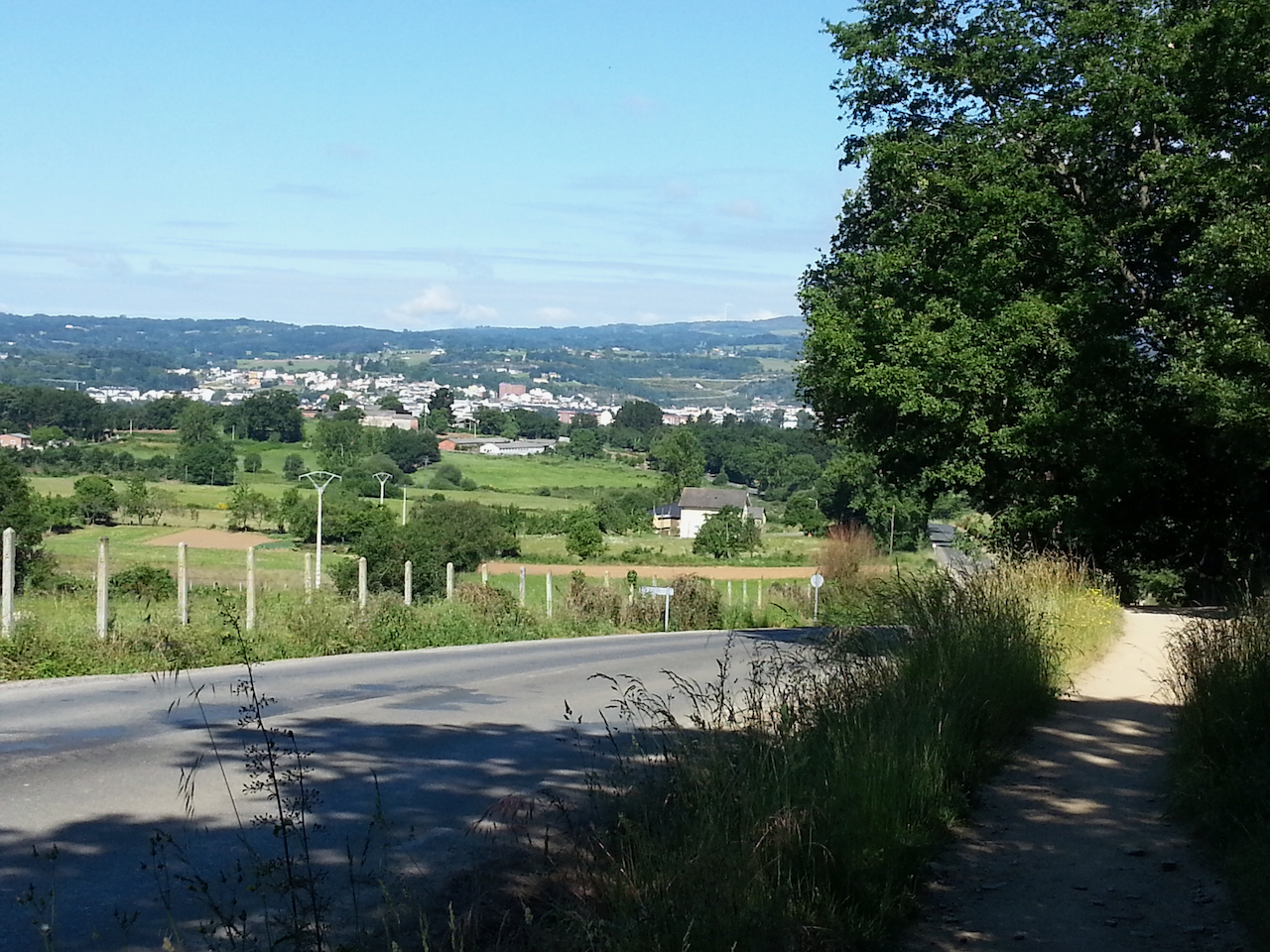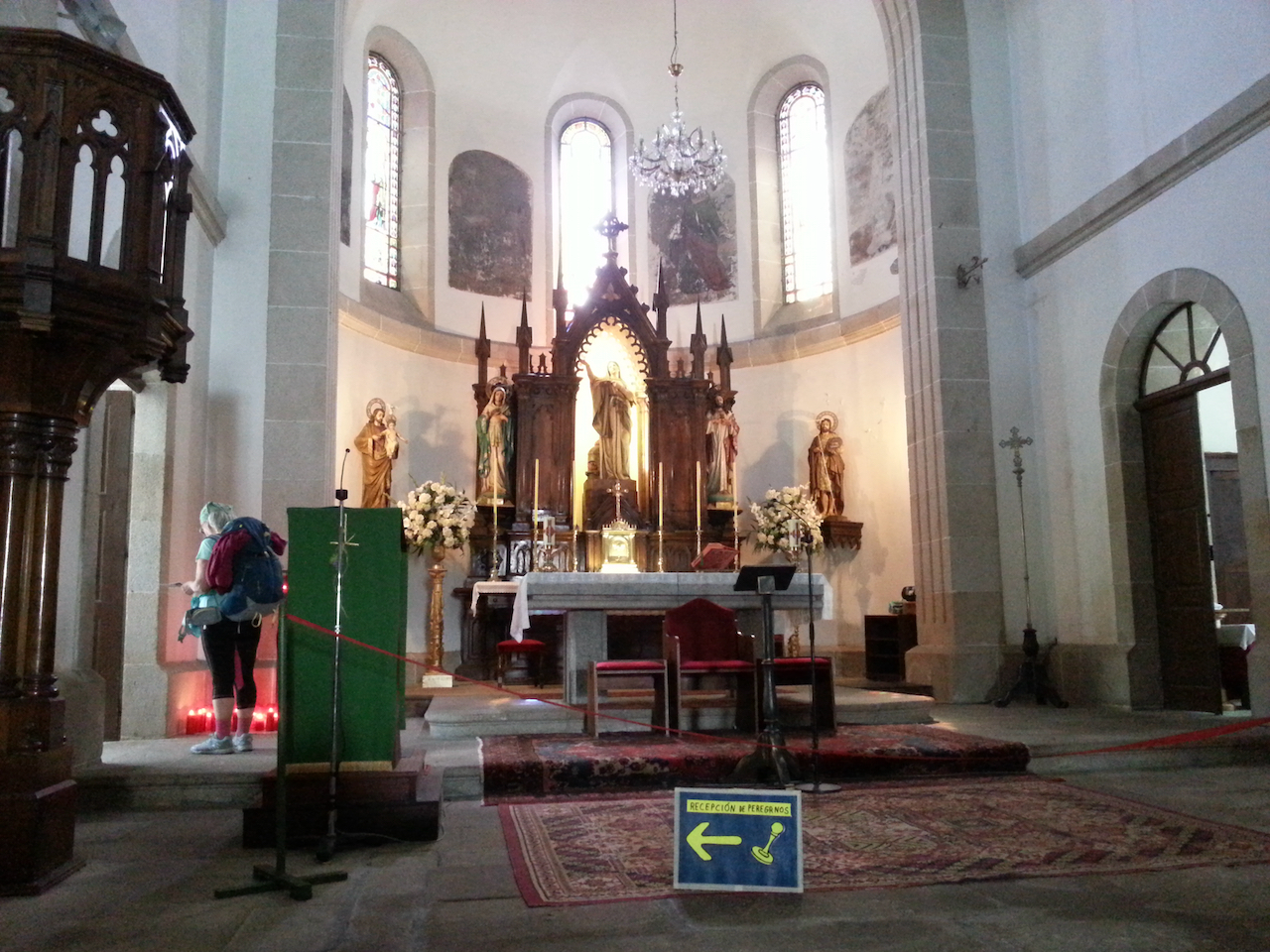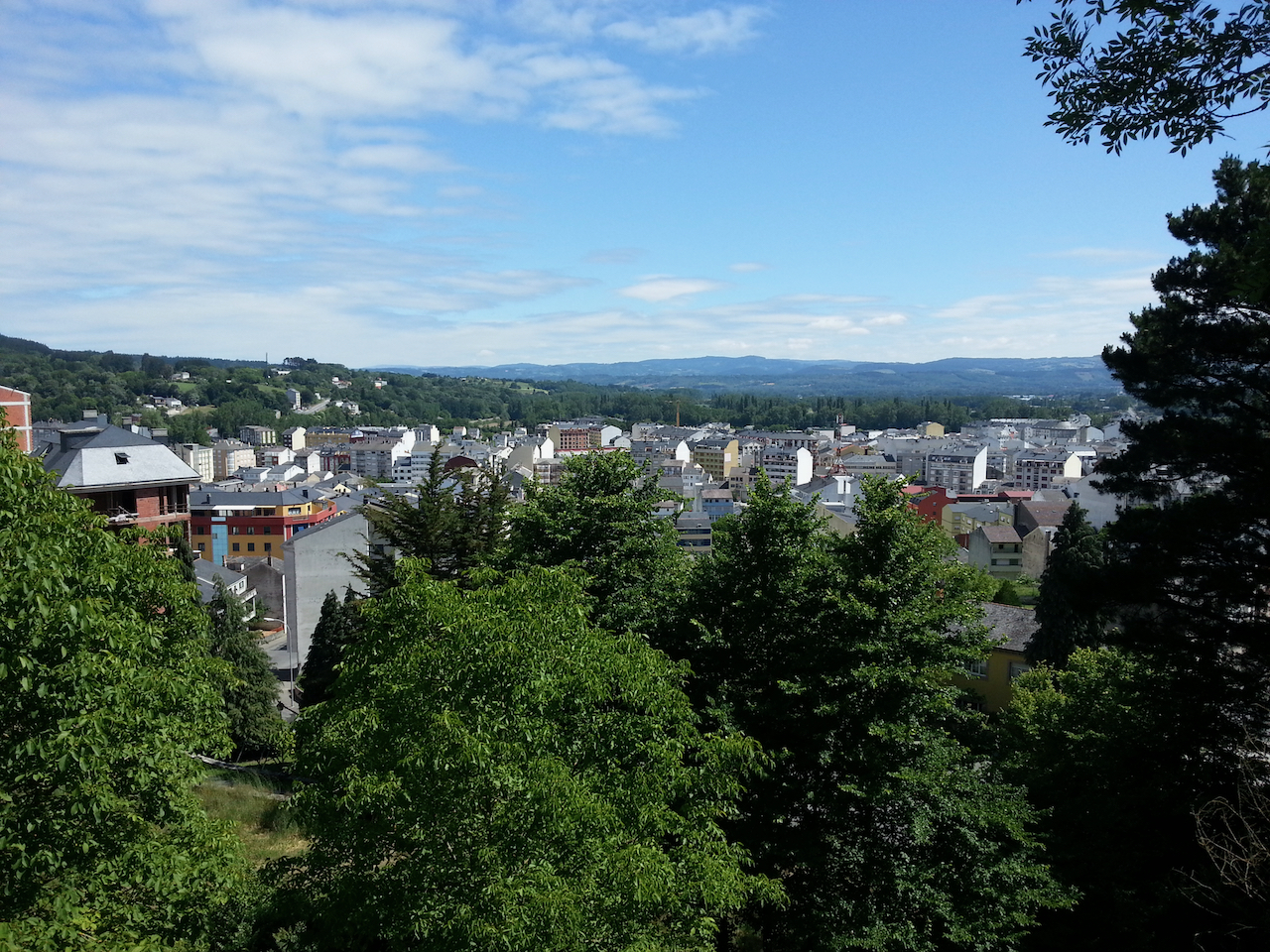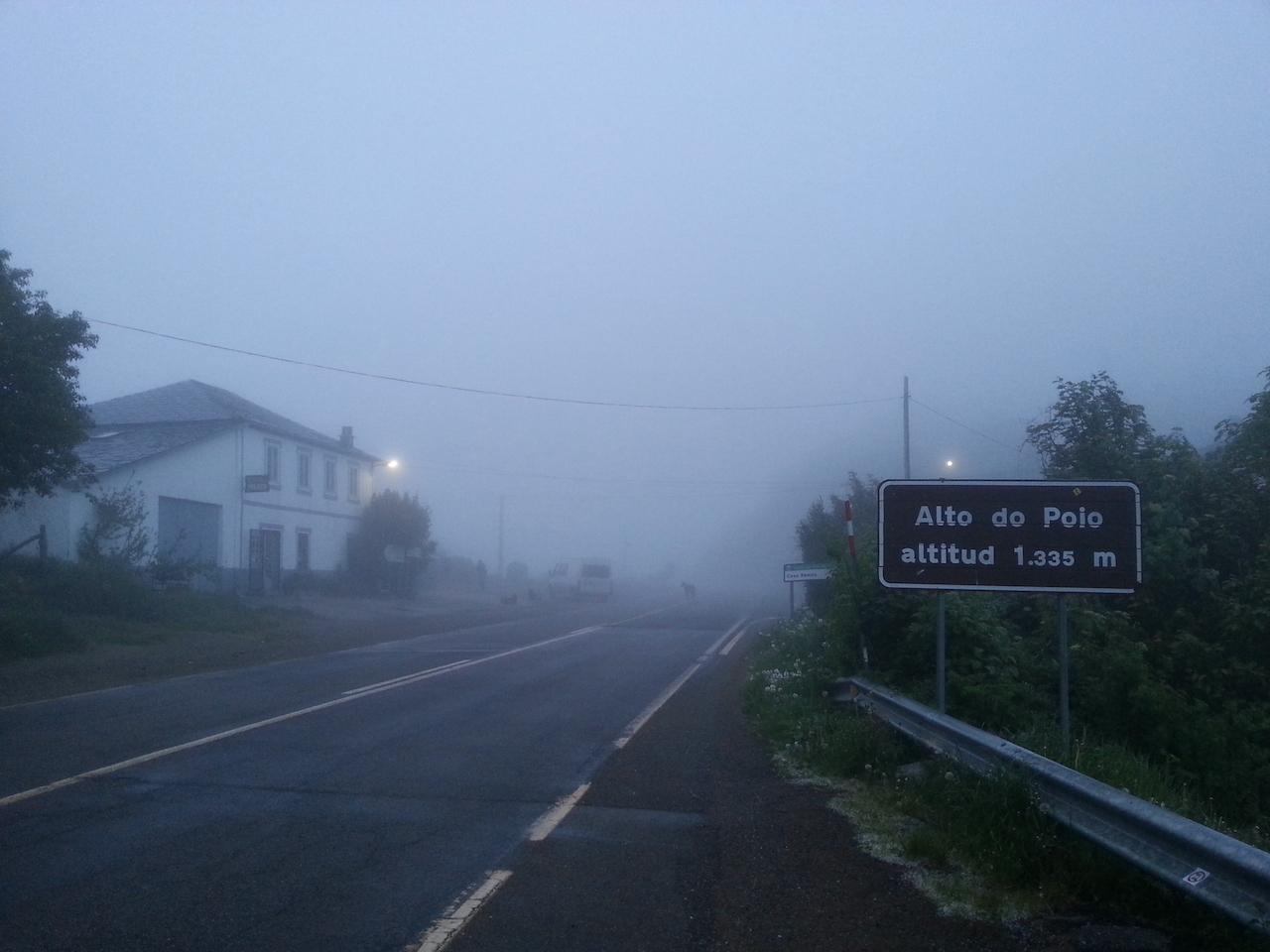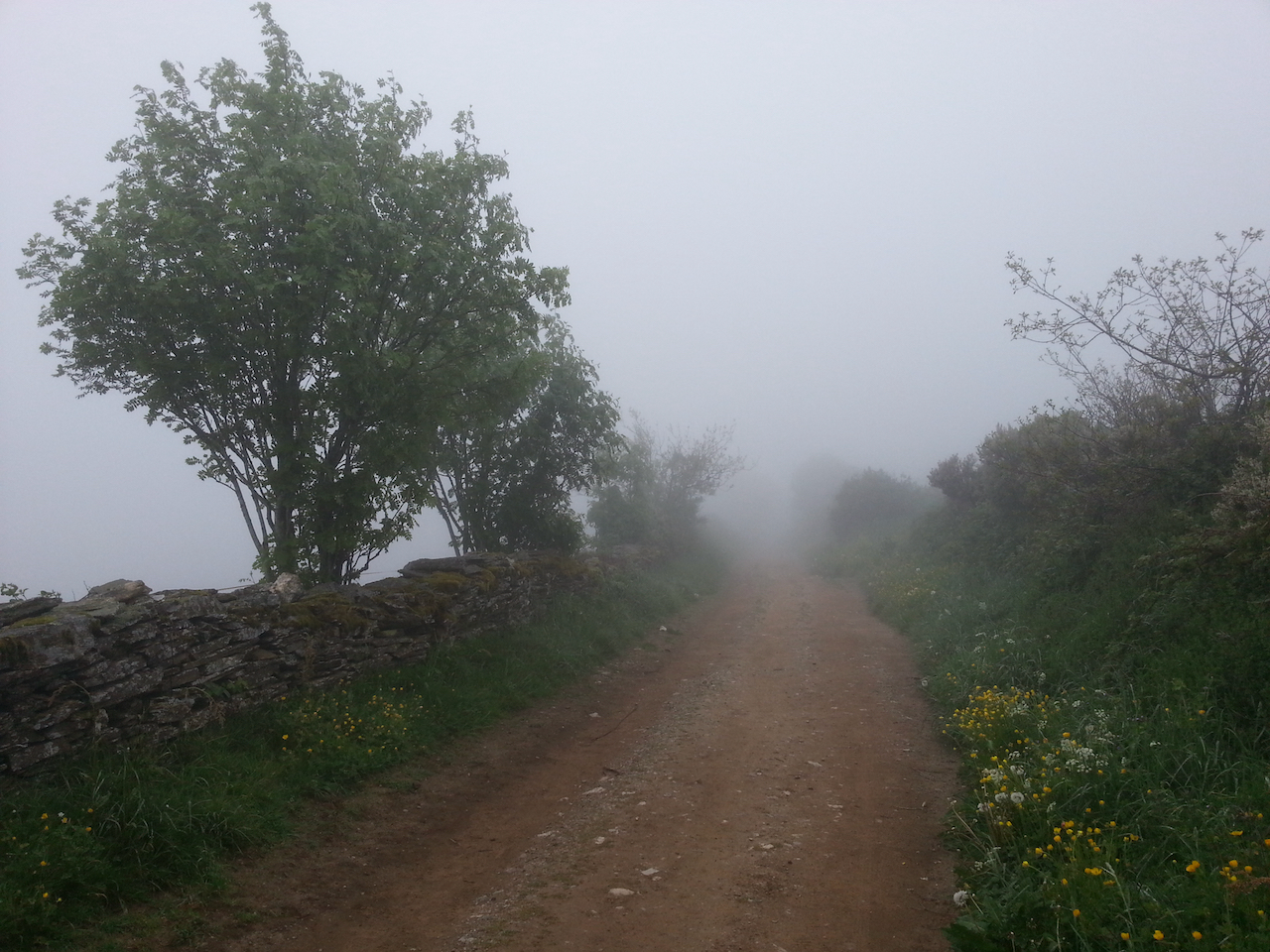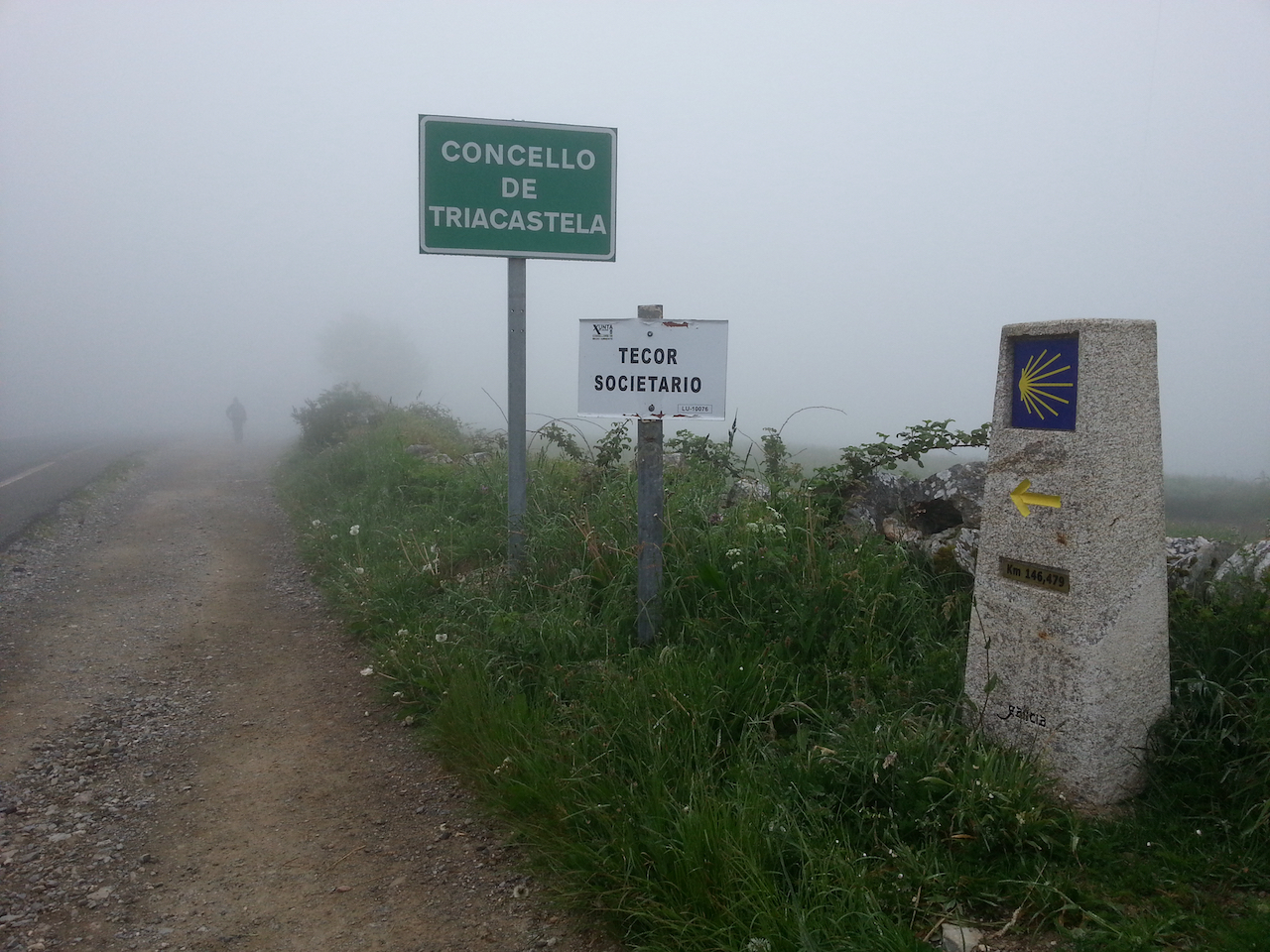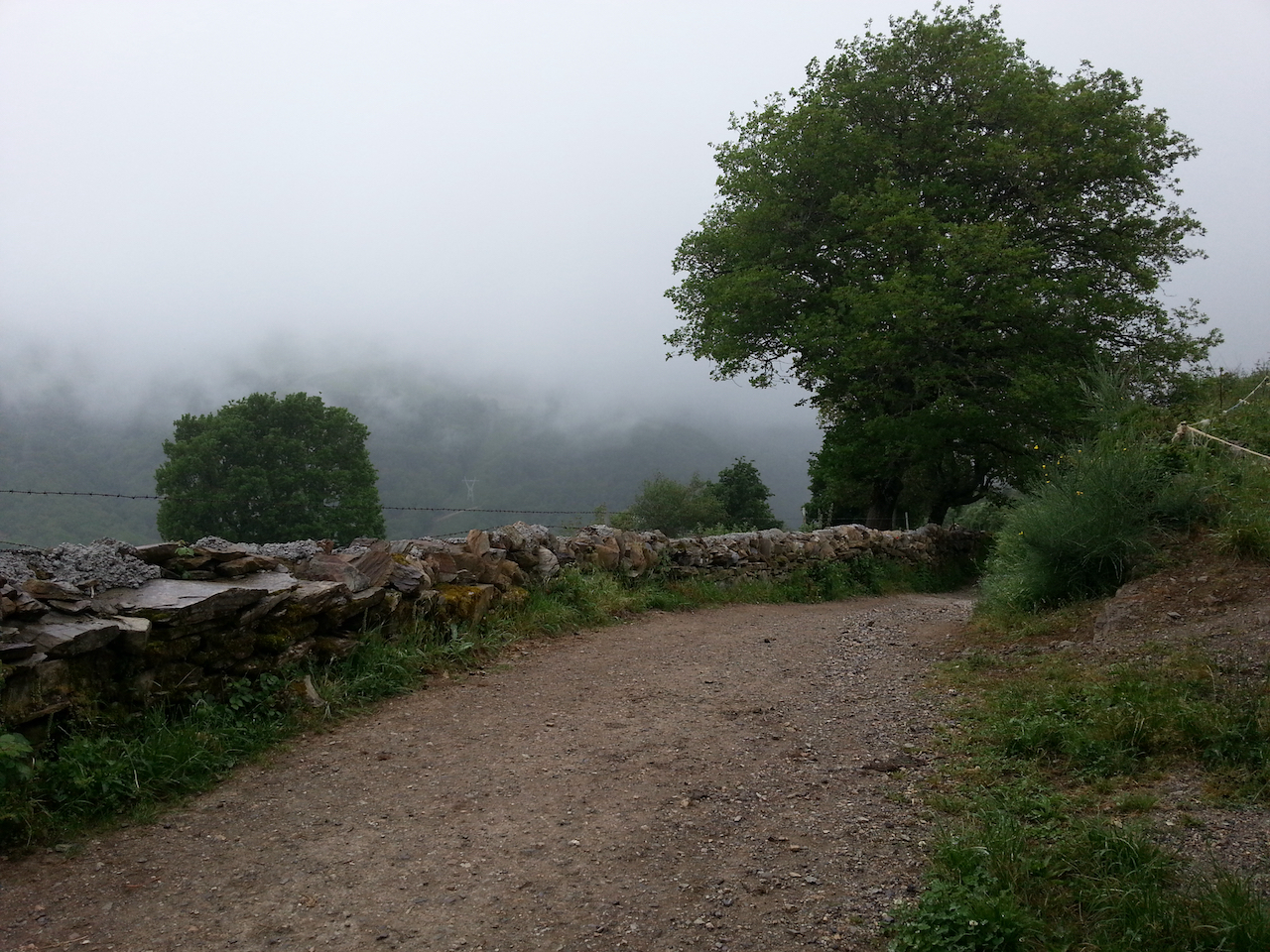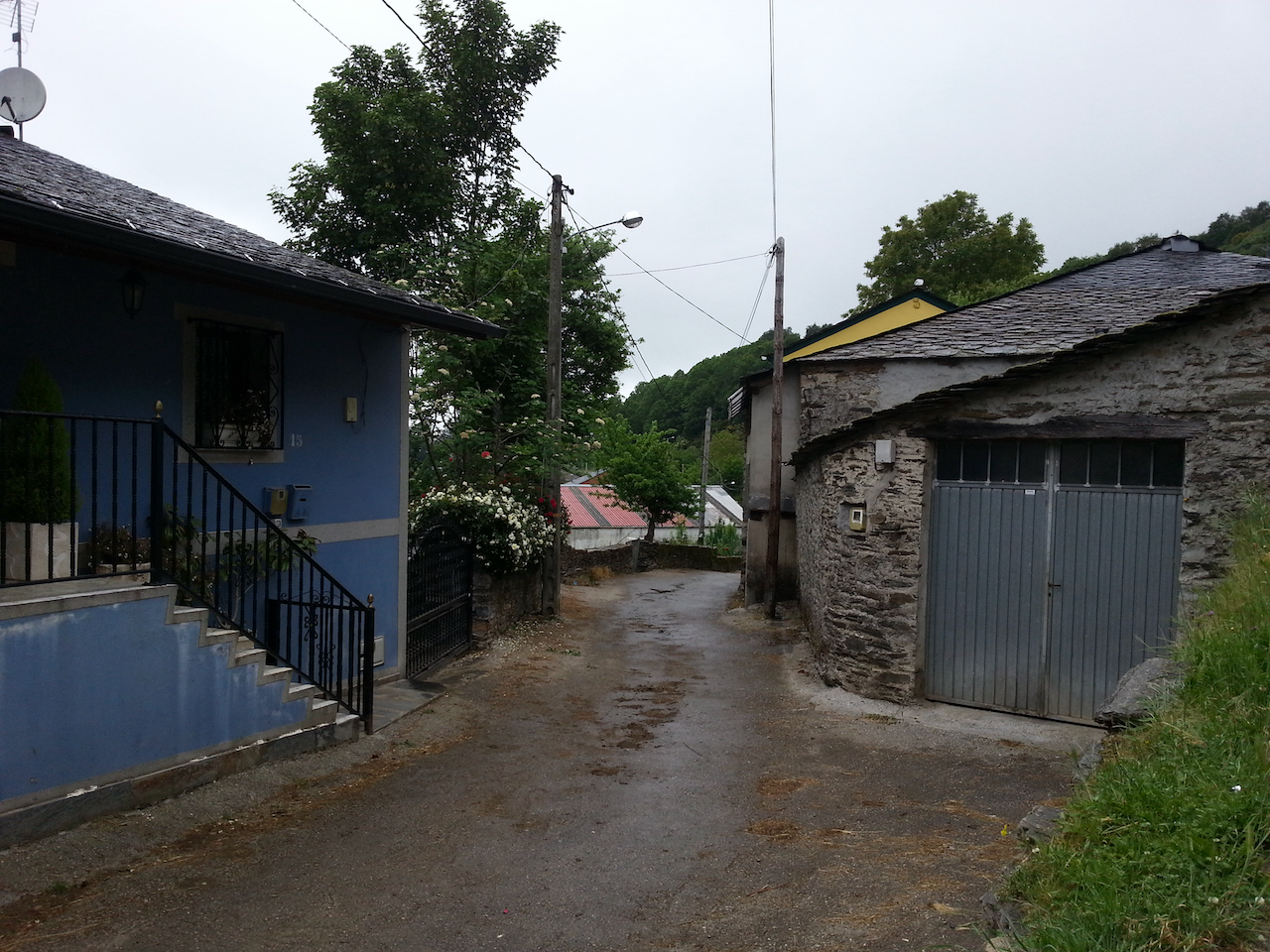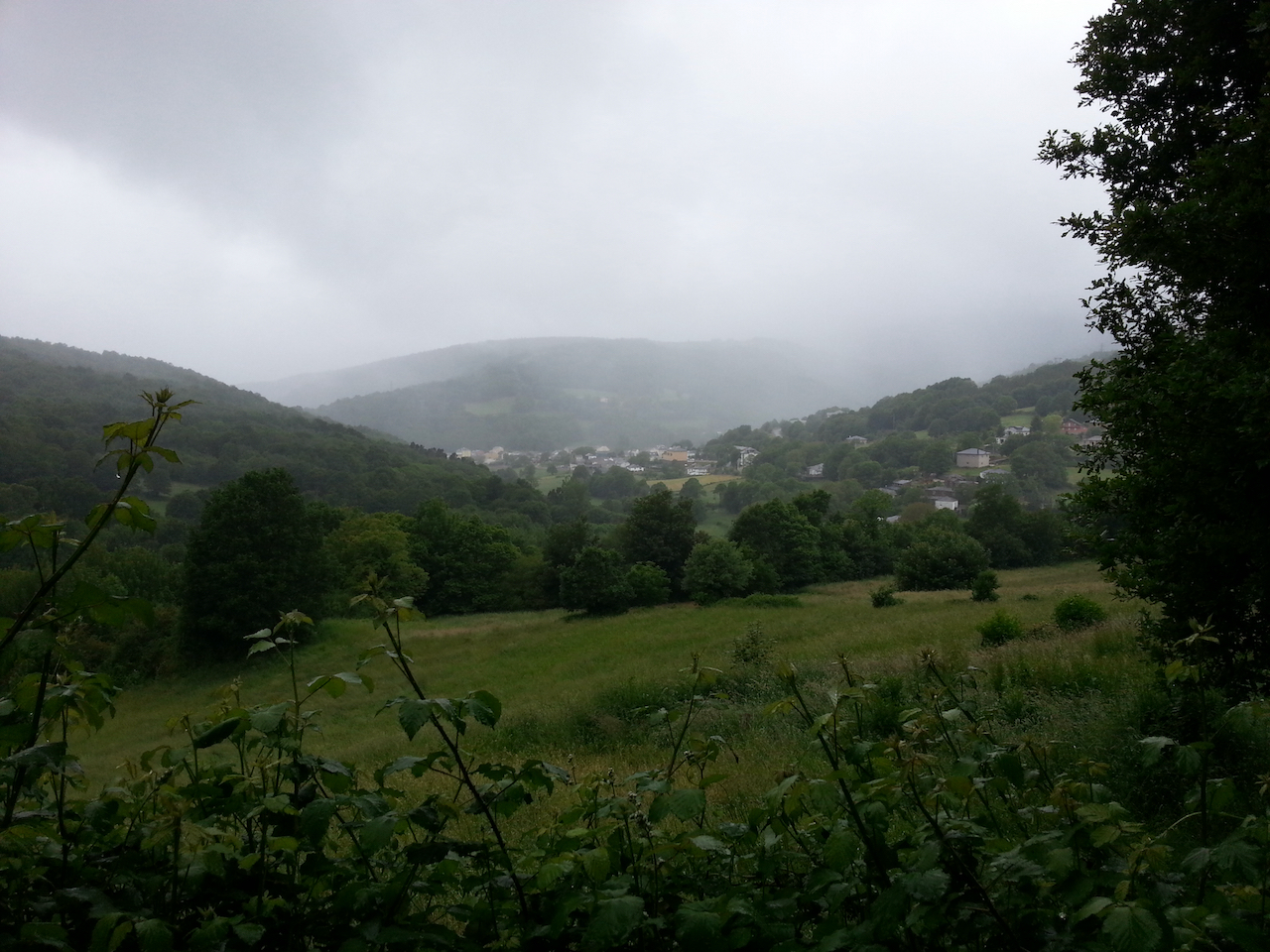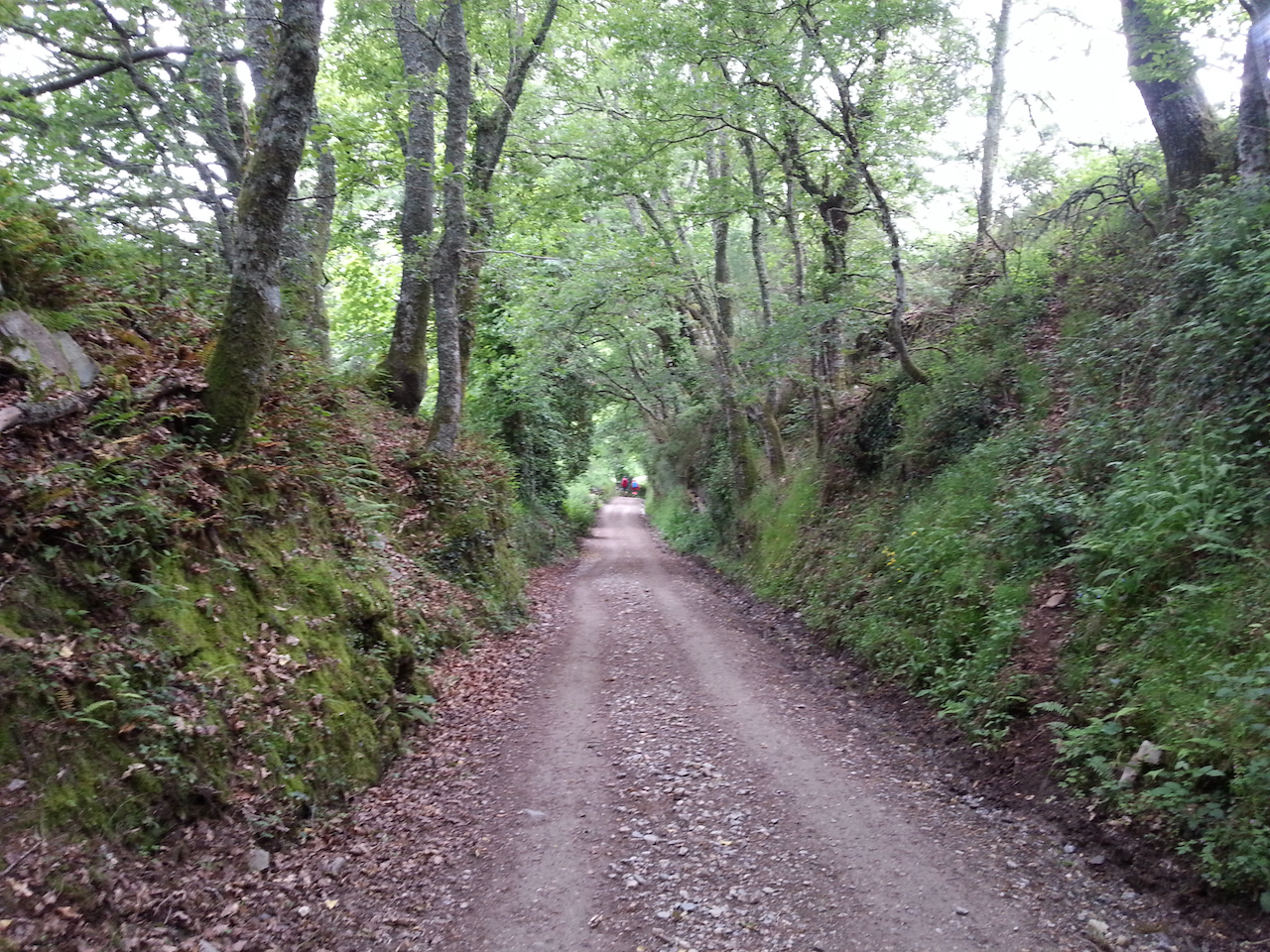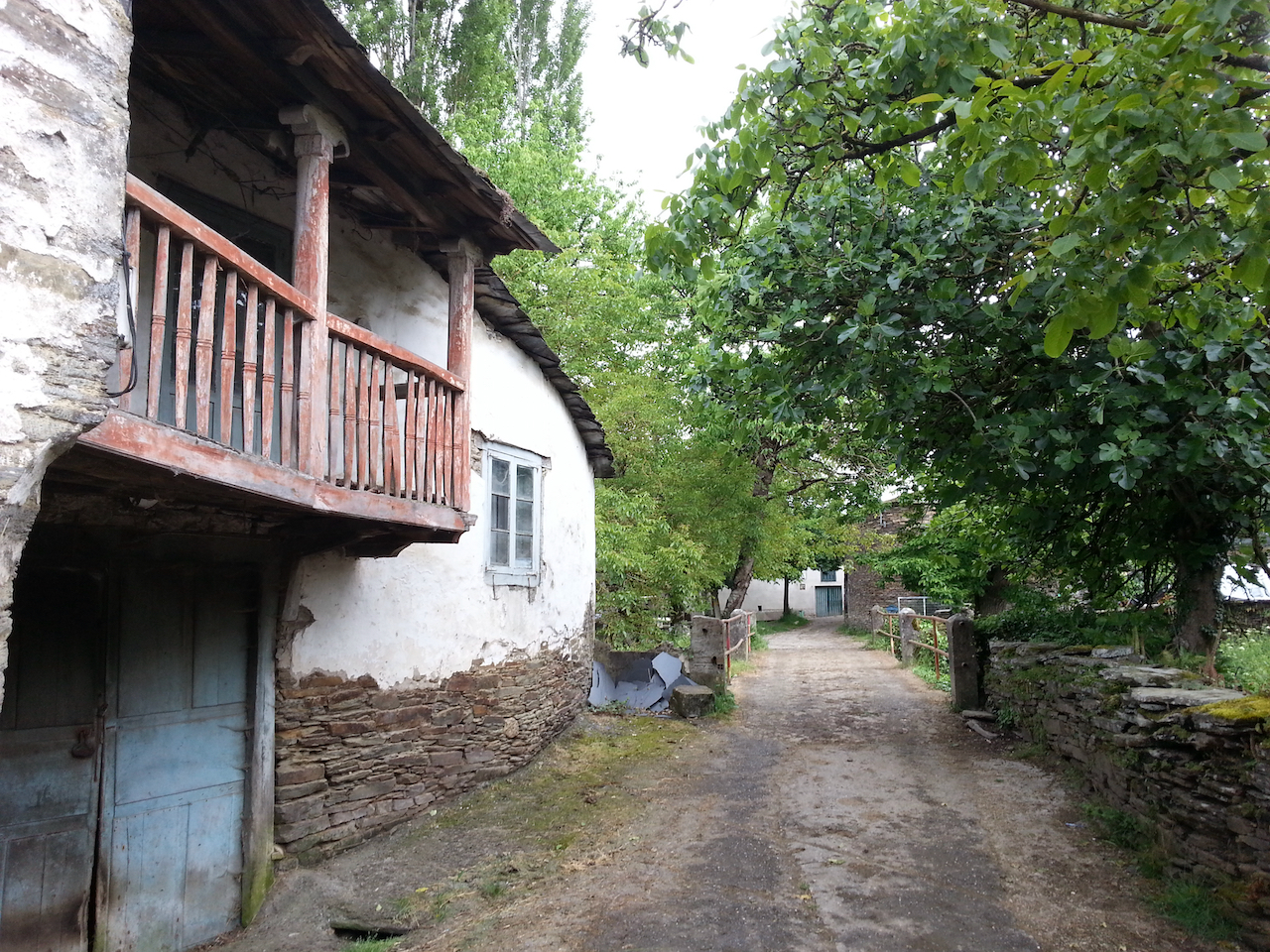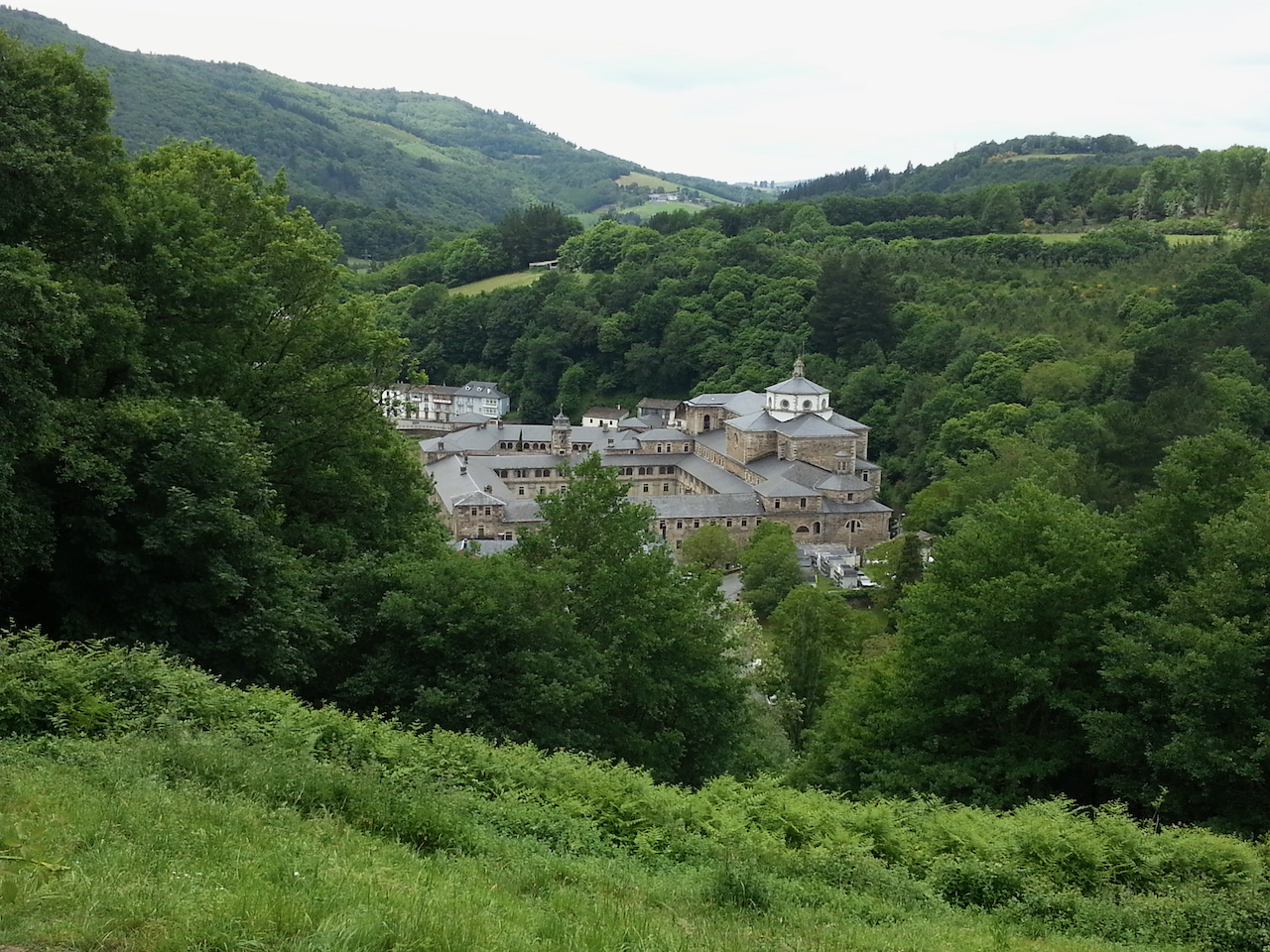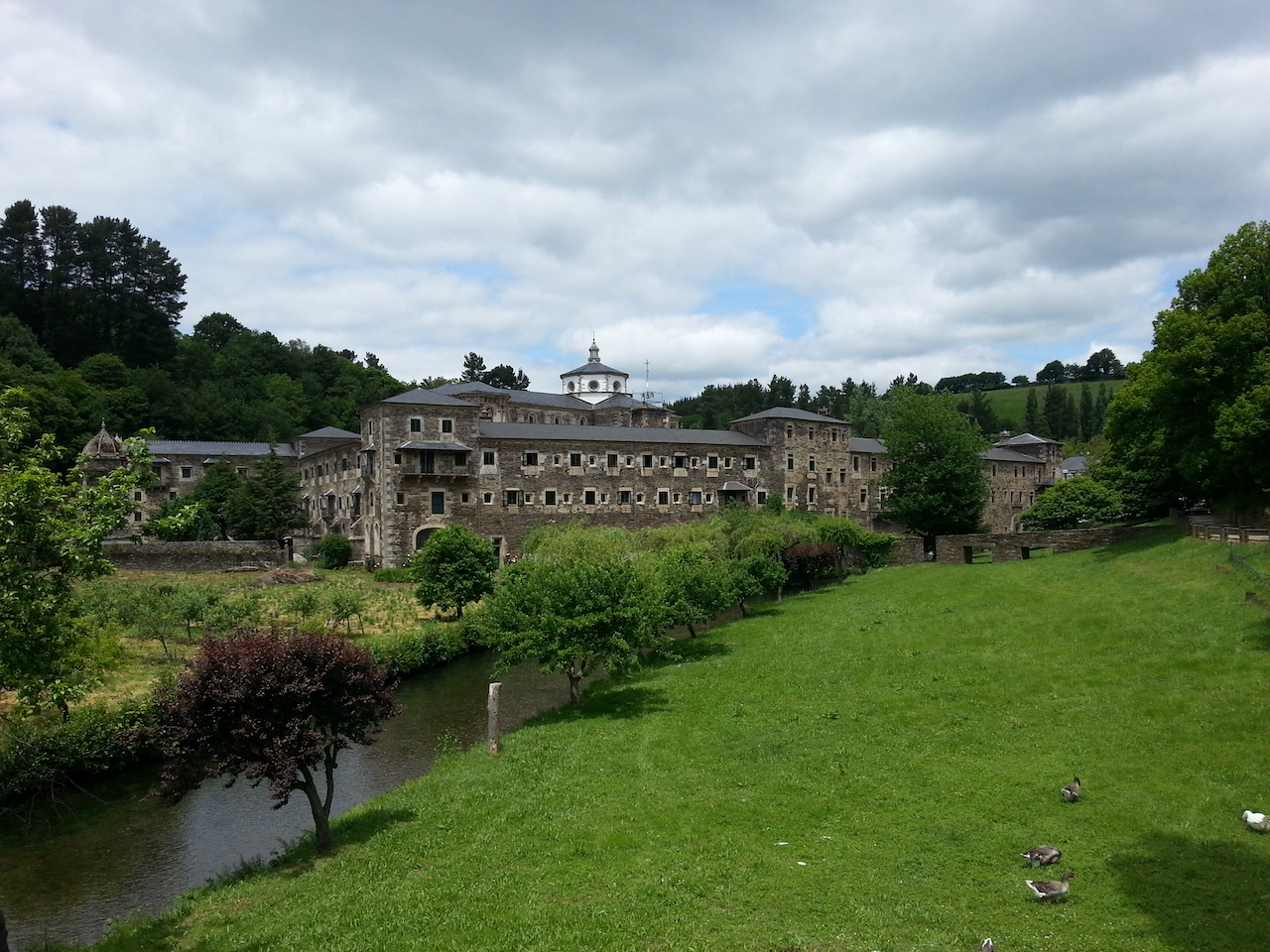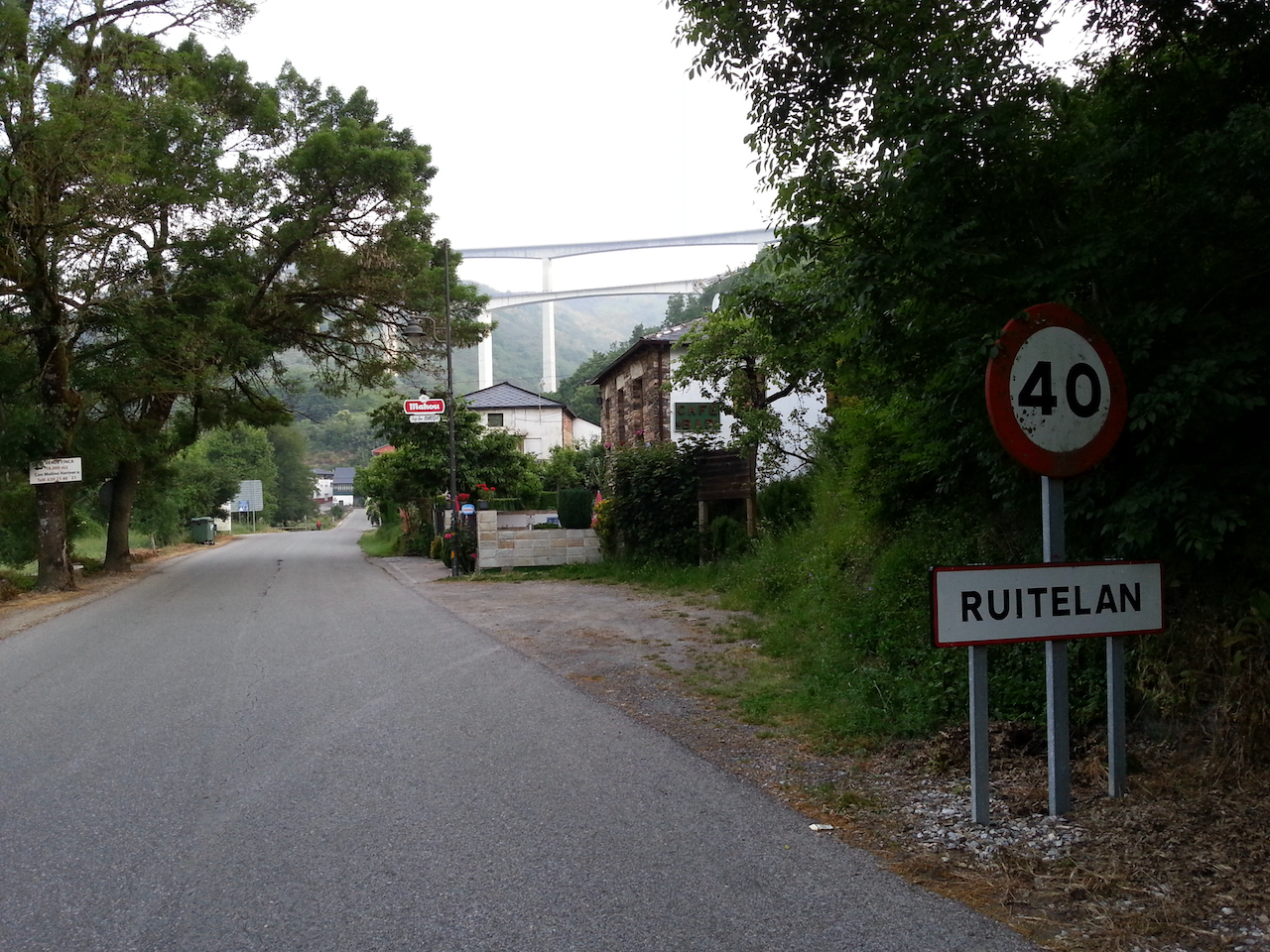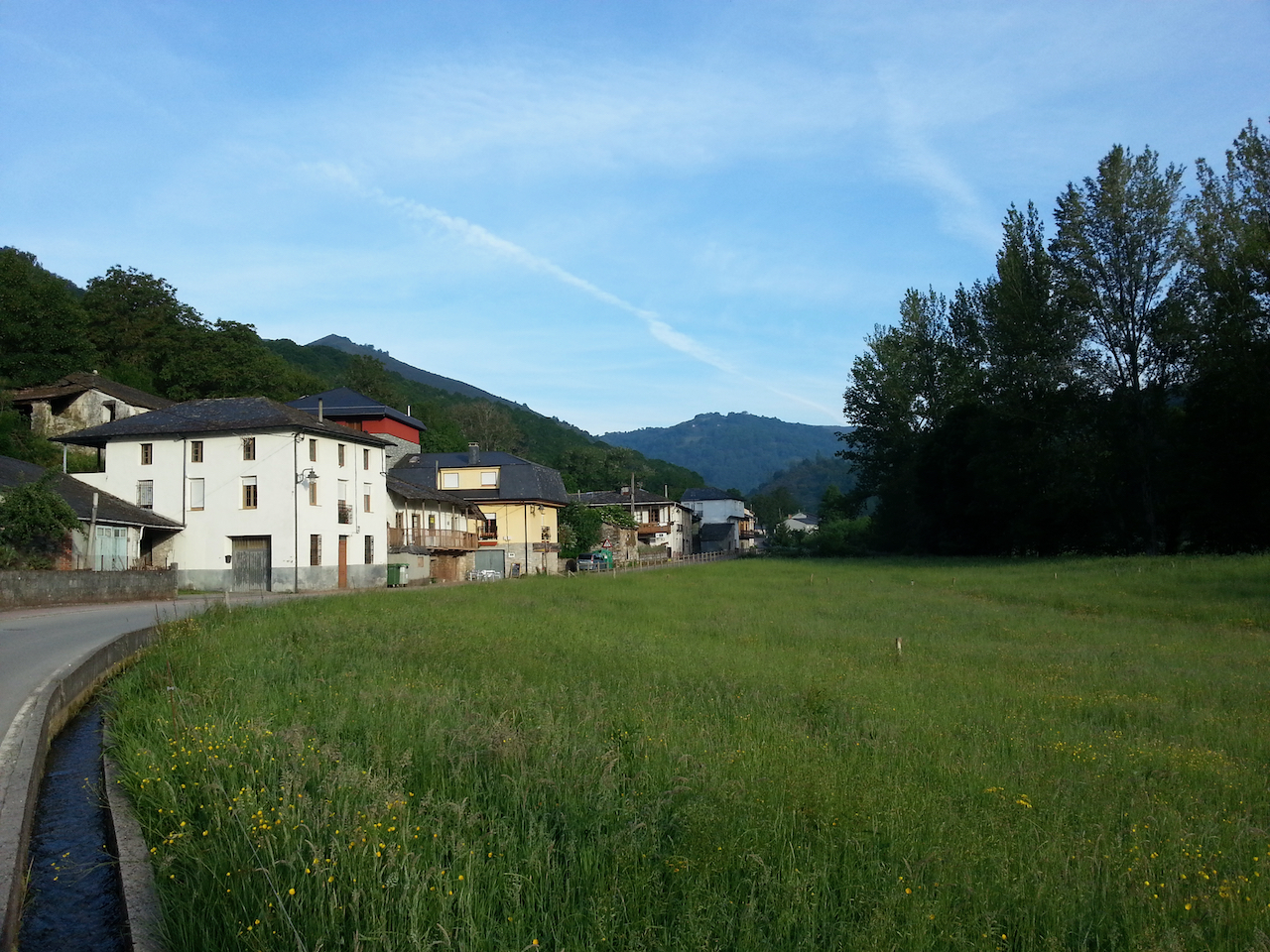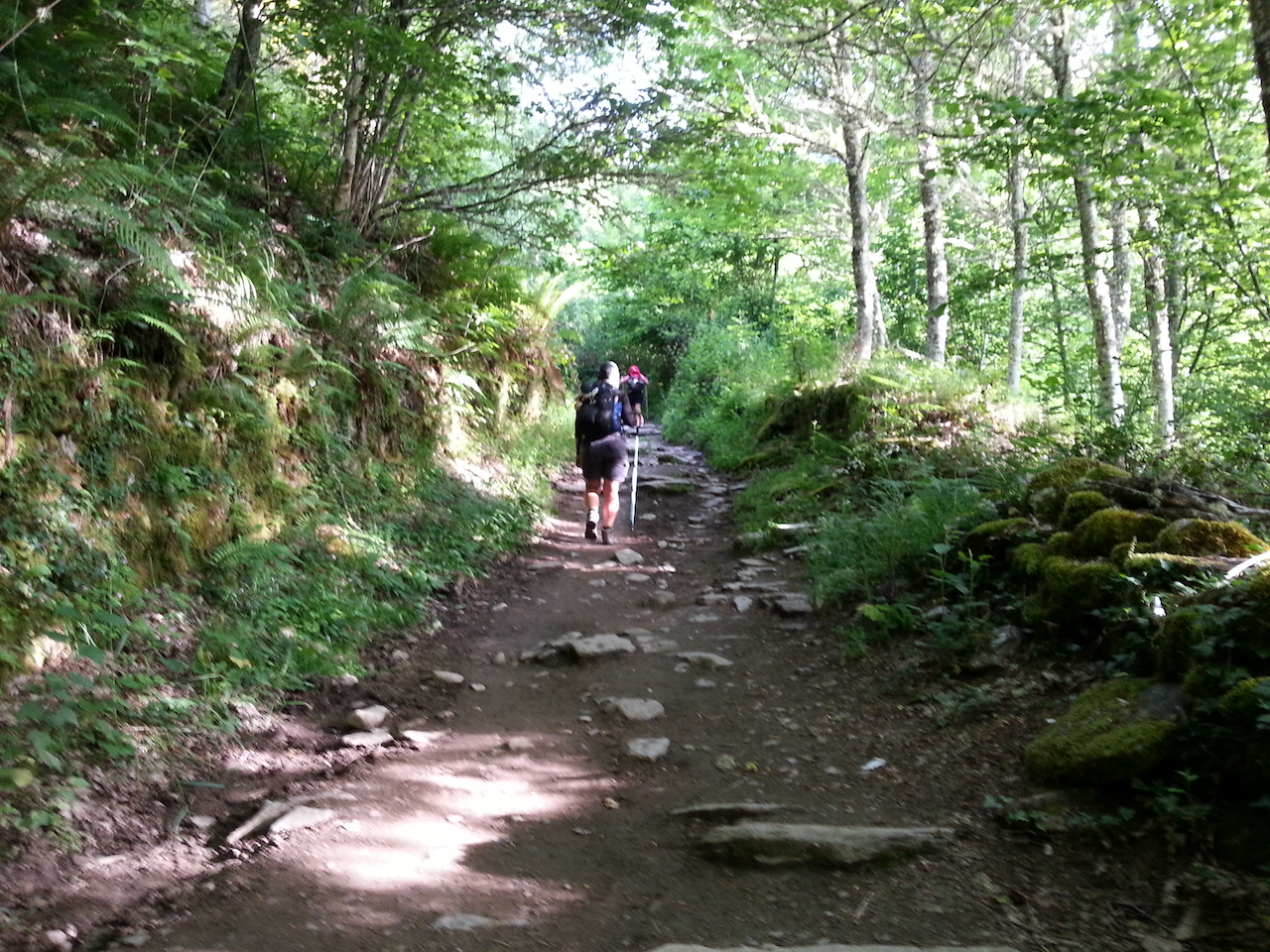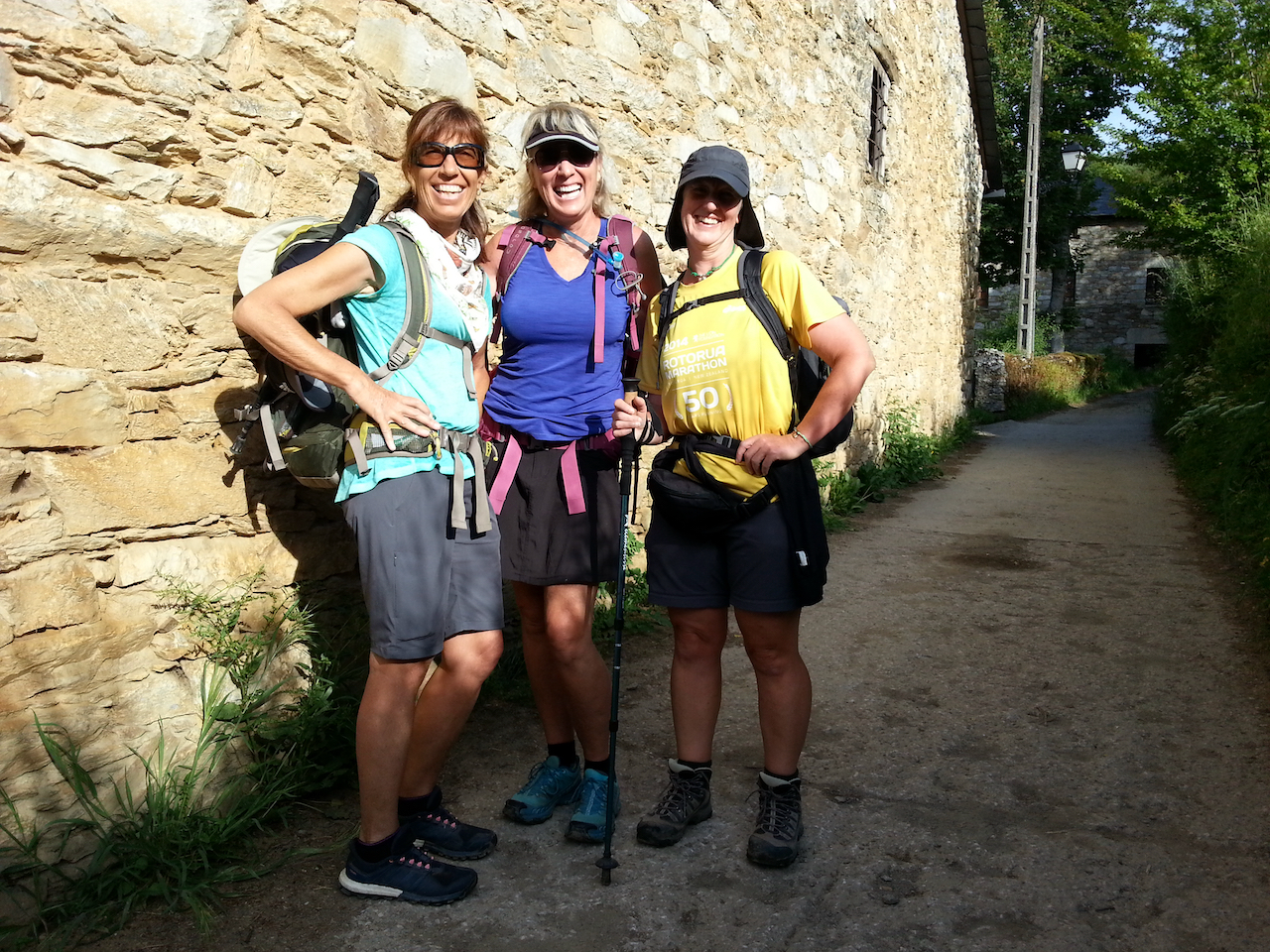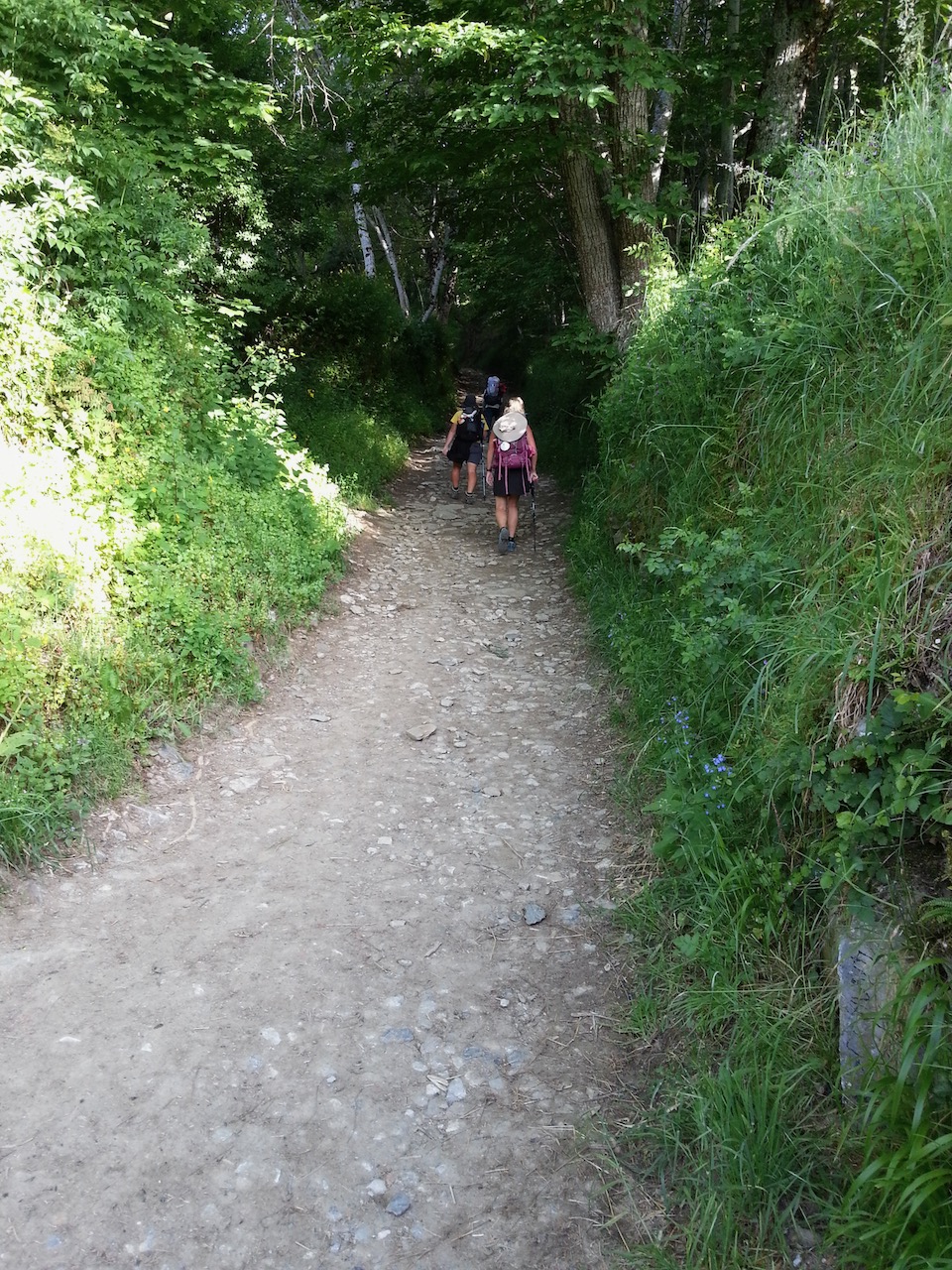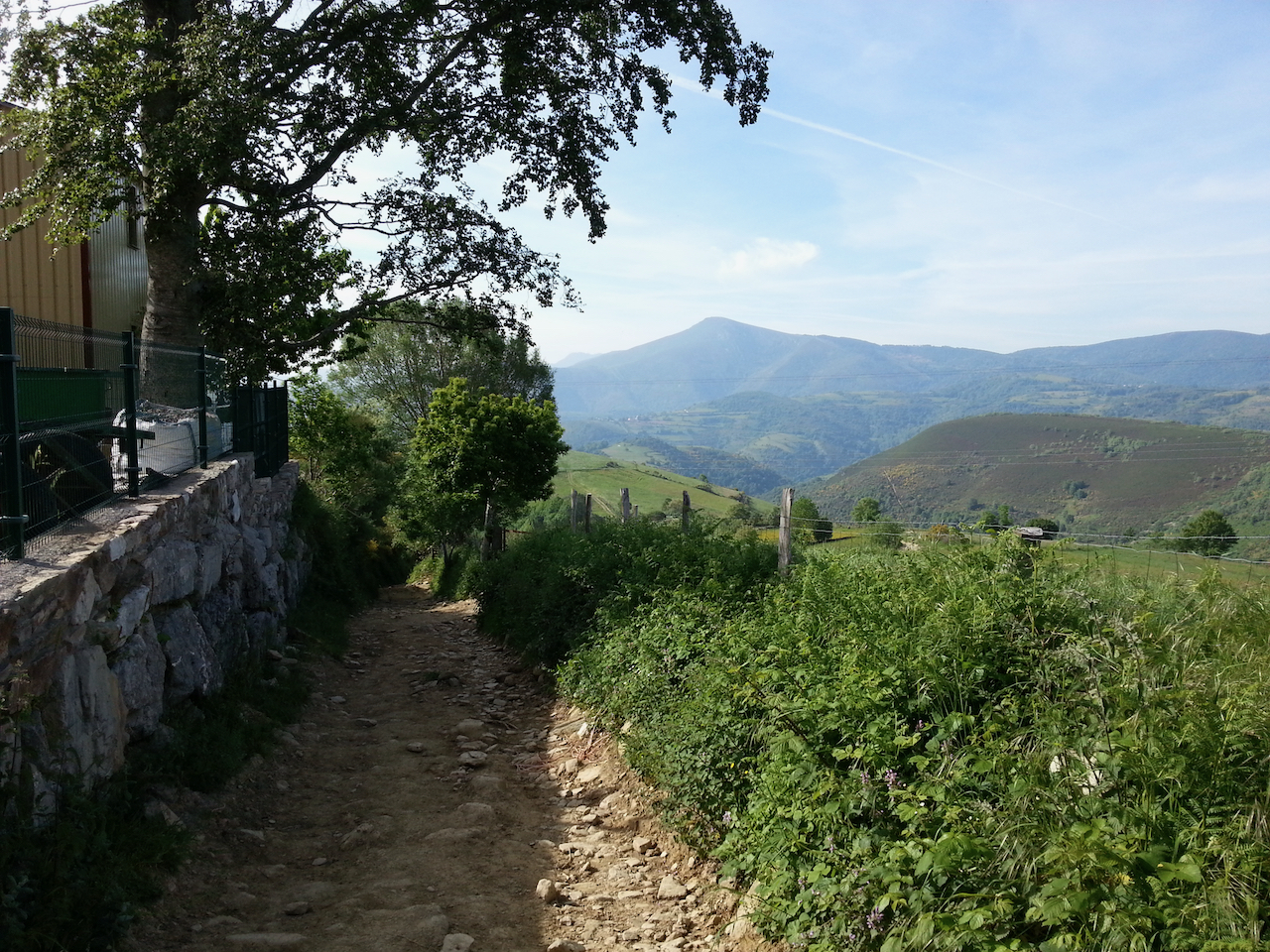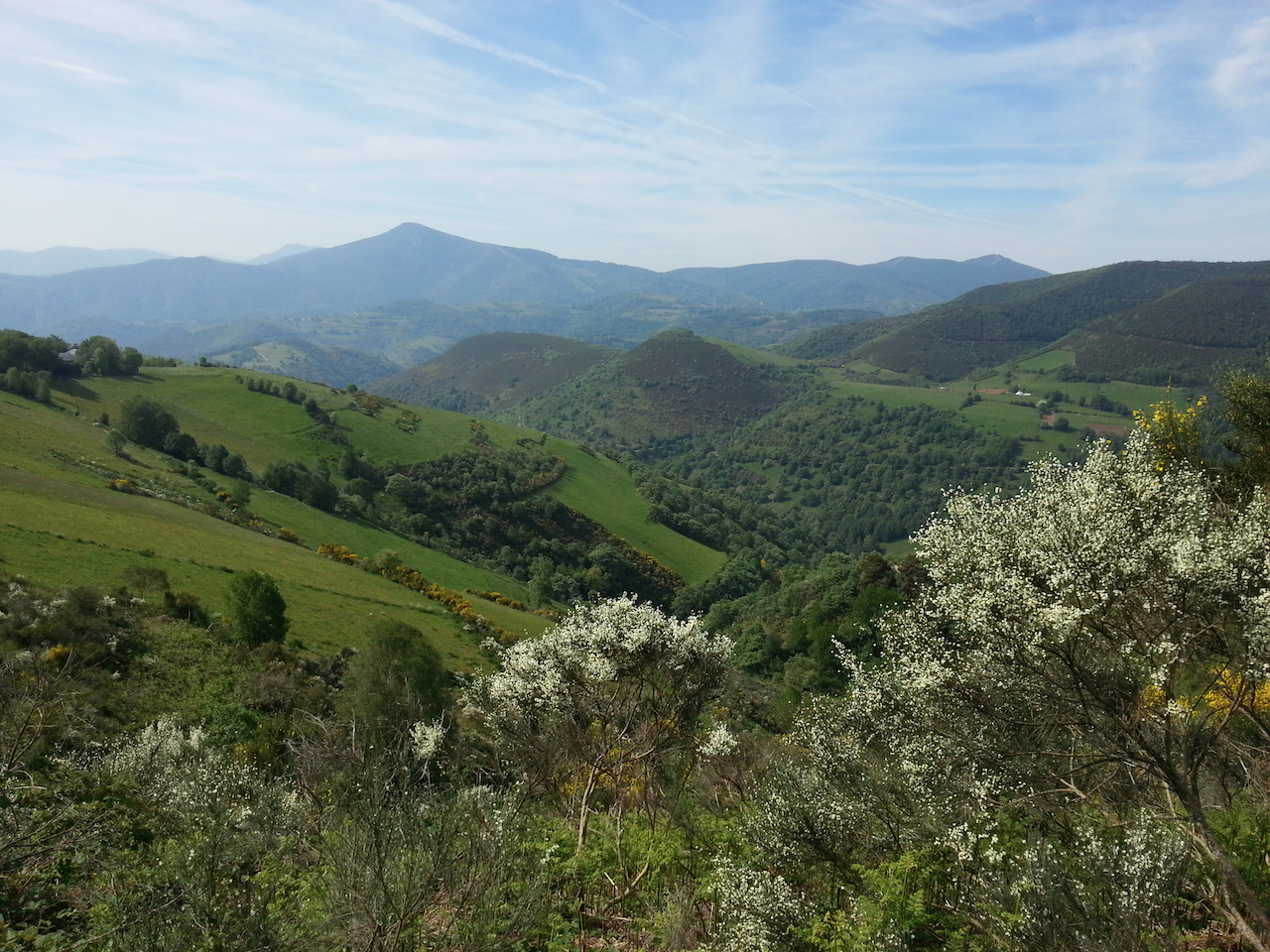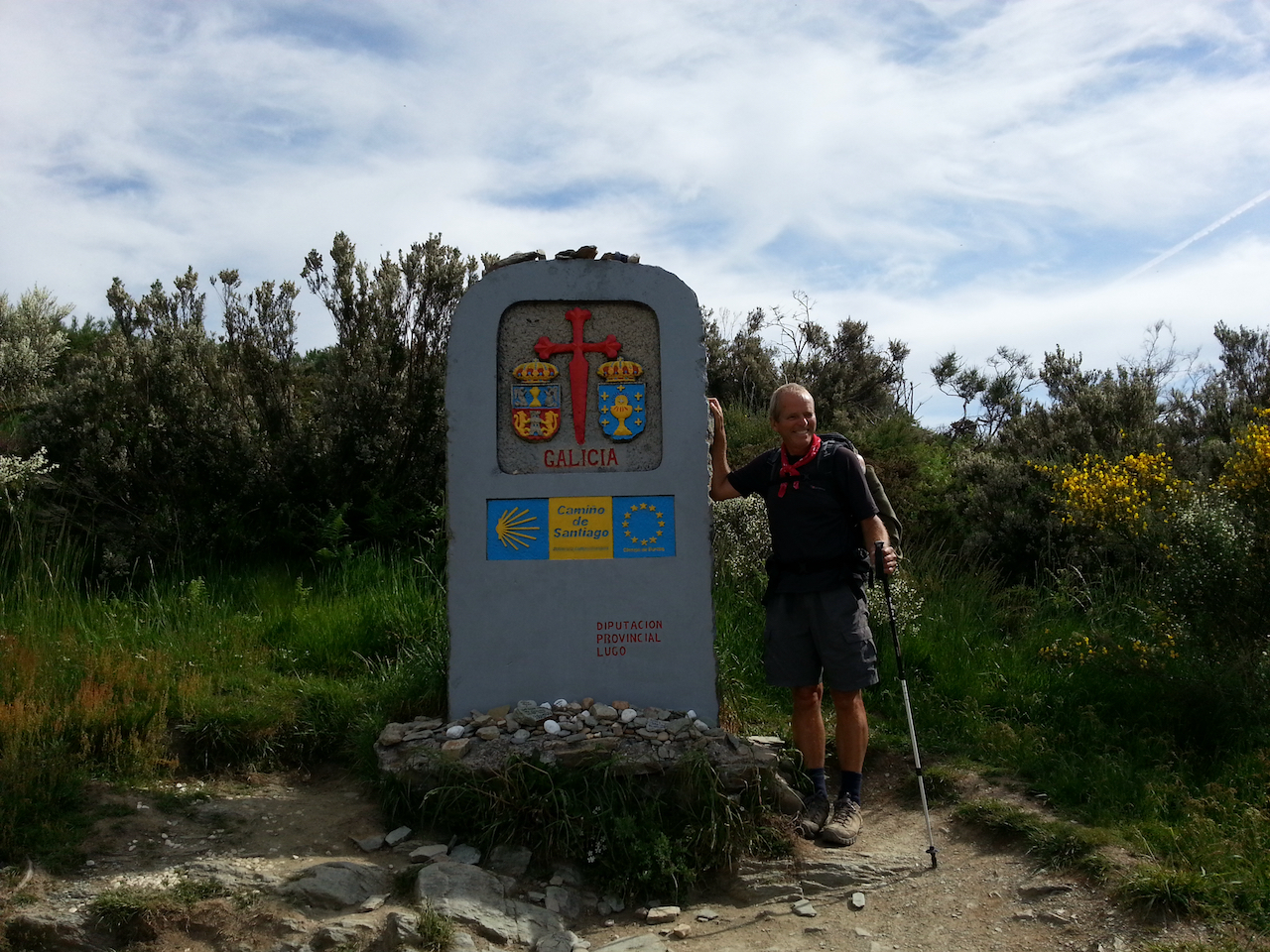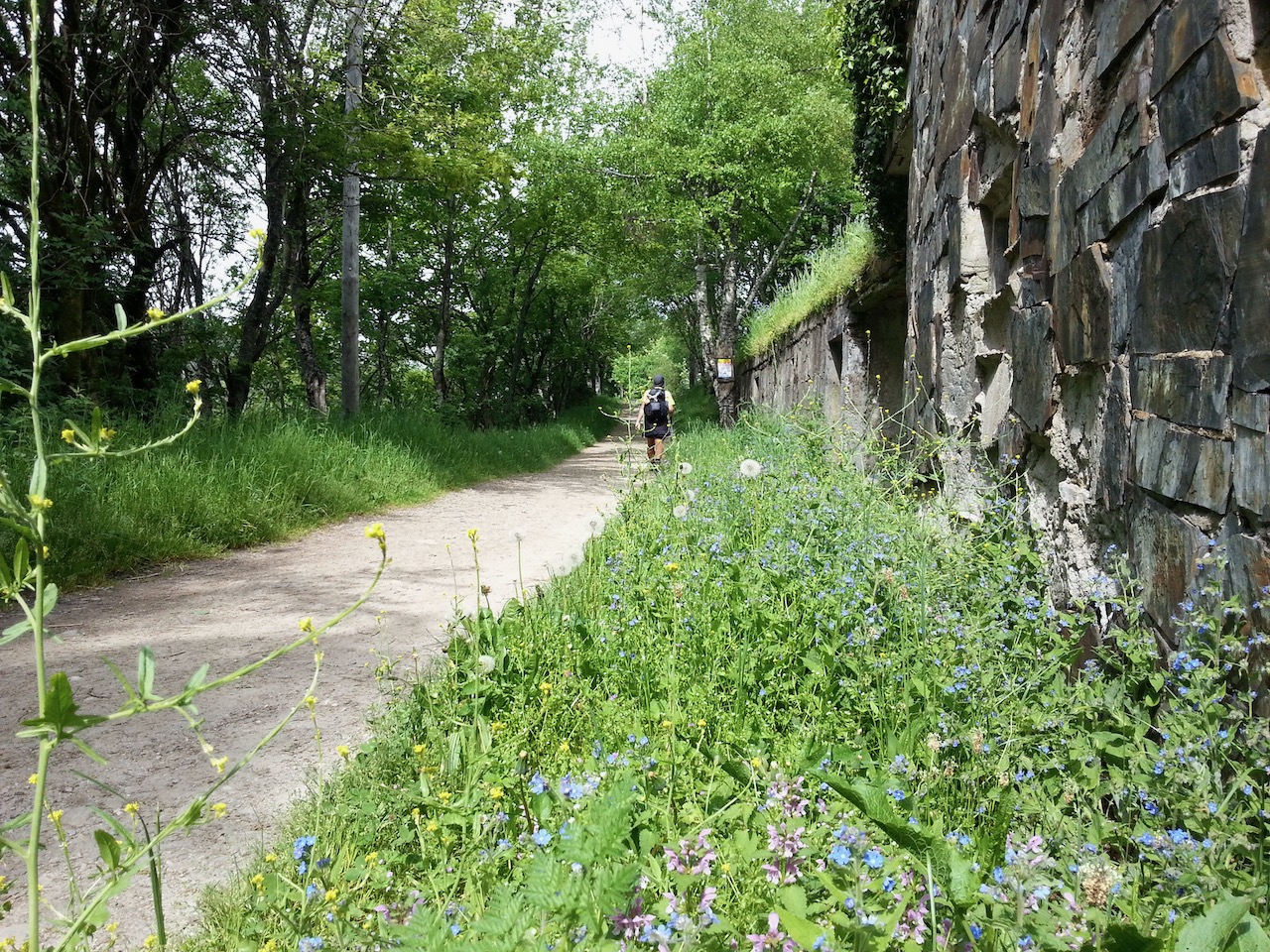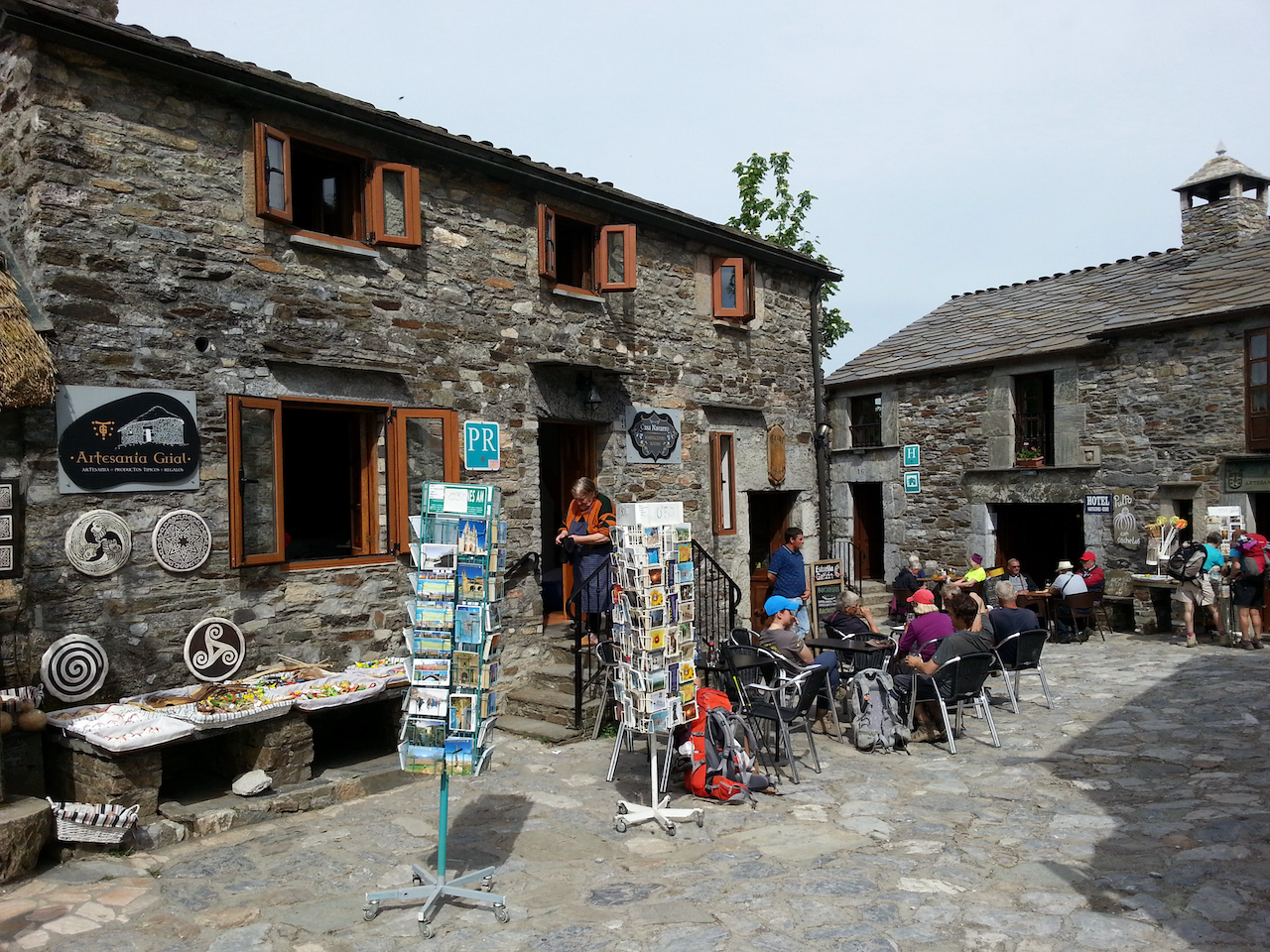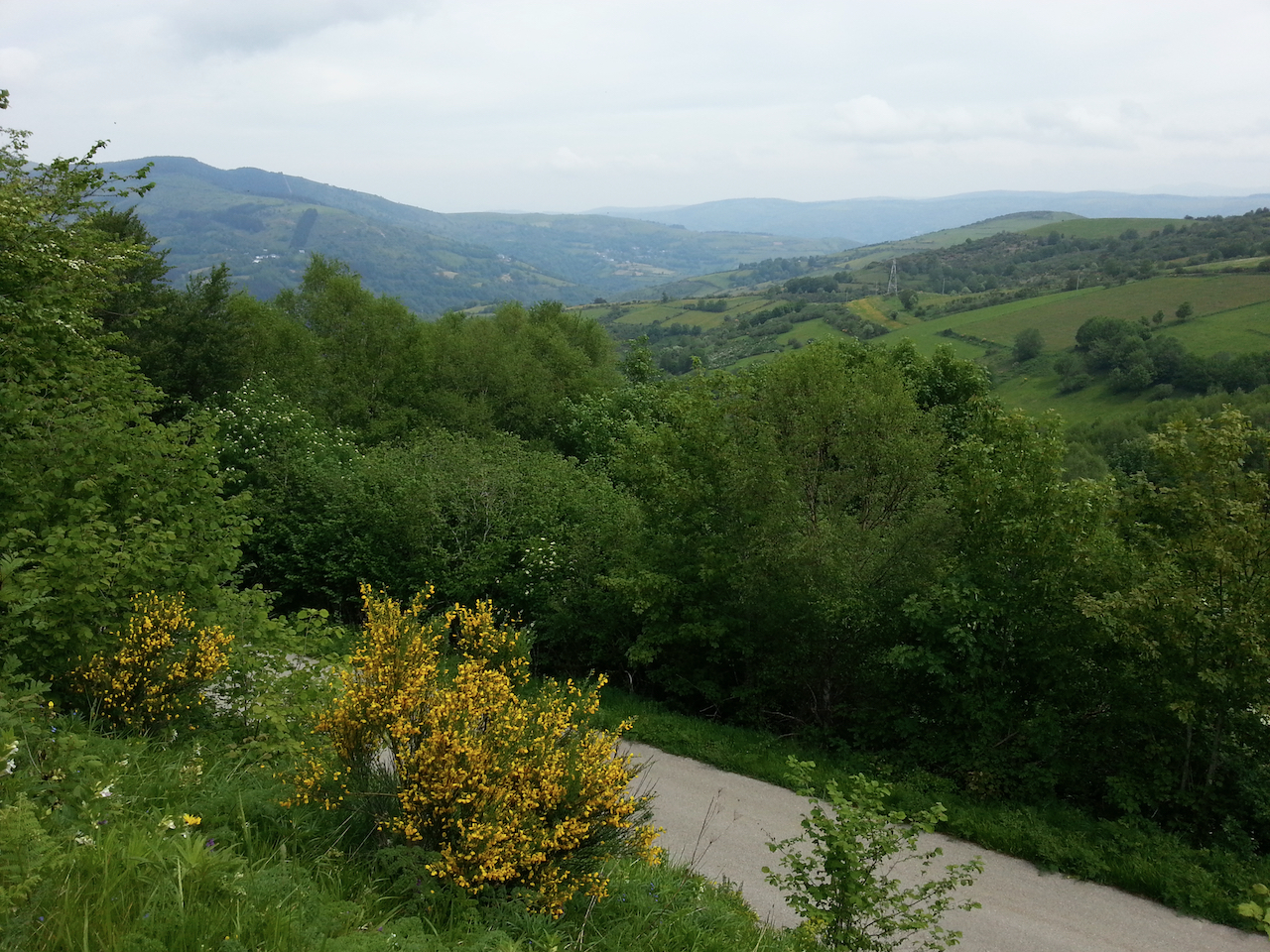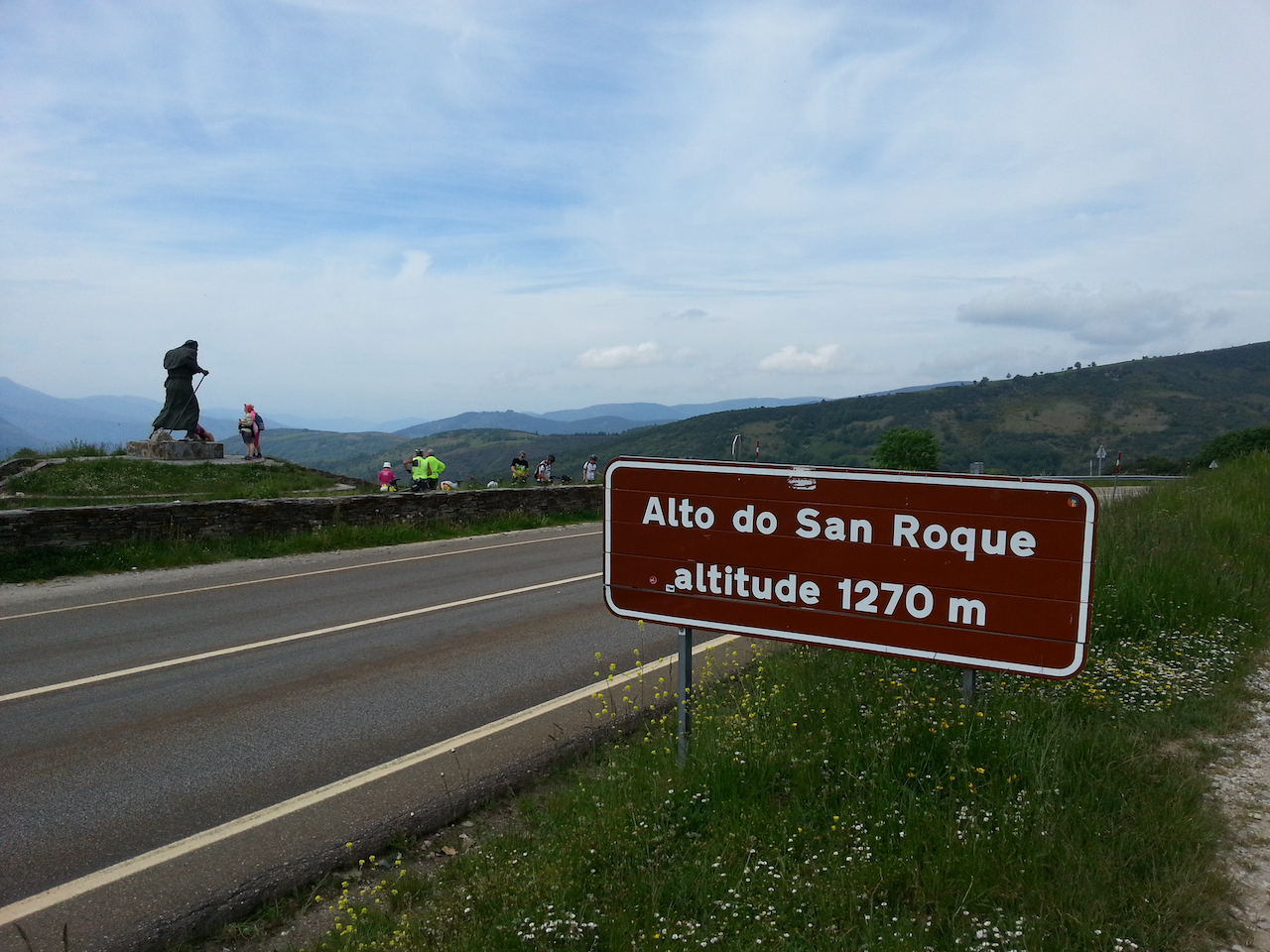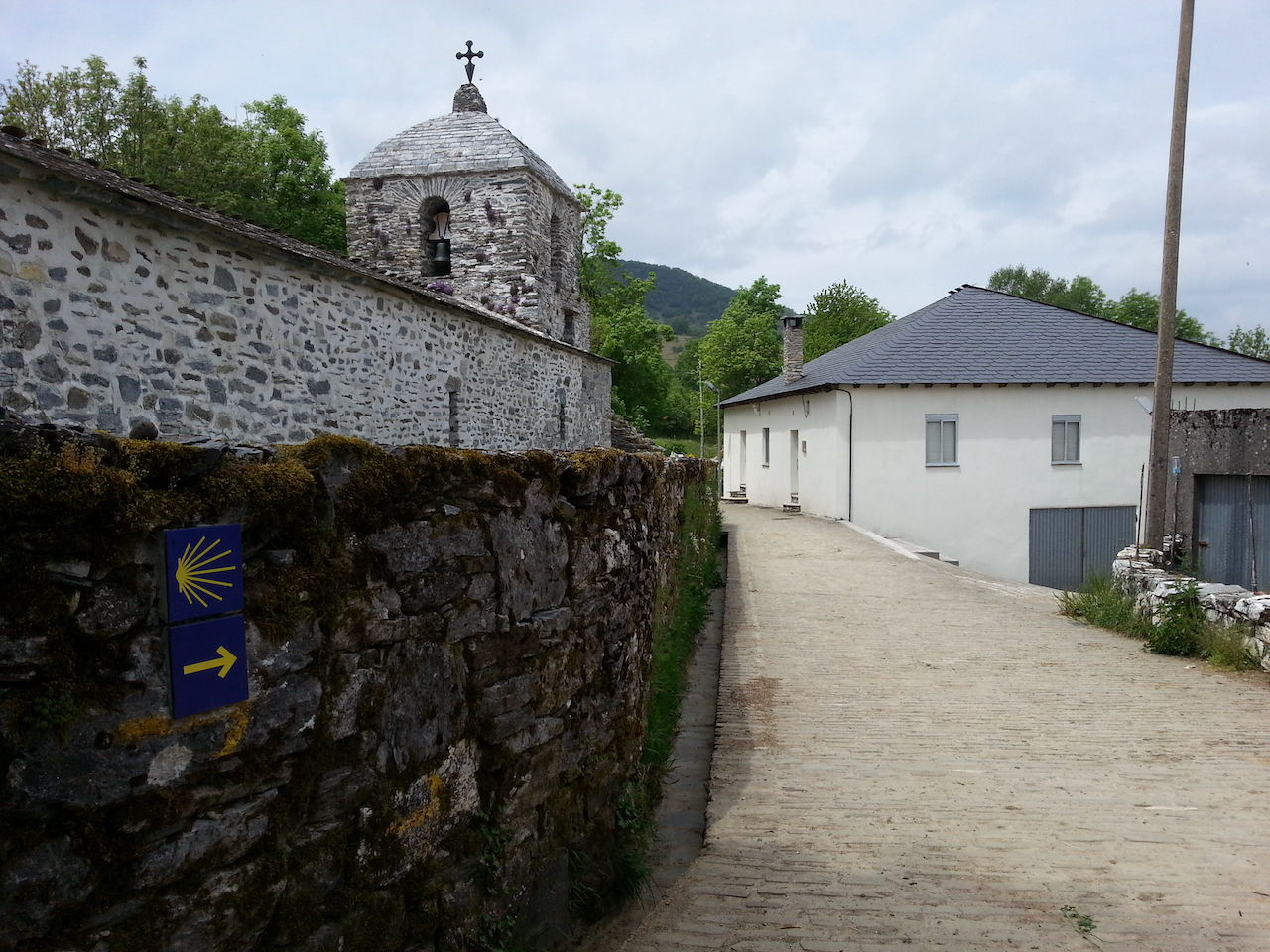22.6 km and 5:34 (see map).
Uploading photos en route has become almost impossible, with wifi bandwidth at the albergues, cafés and bars along the way heavily used by the increasing numbers of peregrinos. Uploading and downloading text is ok (e.g. emails, chat messages), but image file transfers invariably crash. So for the next few days I’ll just write a few thoughts from the day and will upload photos to the posts after I get to Santiago. (I’ll still try to add a photo or two each day if there’s a chance.)
It was a good day for walking today – mild with some cloud cover. I passed the ‘99.930 km to Santiago’ marker early on, just past Ferreiros. Lots of peregrinos were stopping to have their photos taken standing by it.
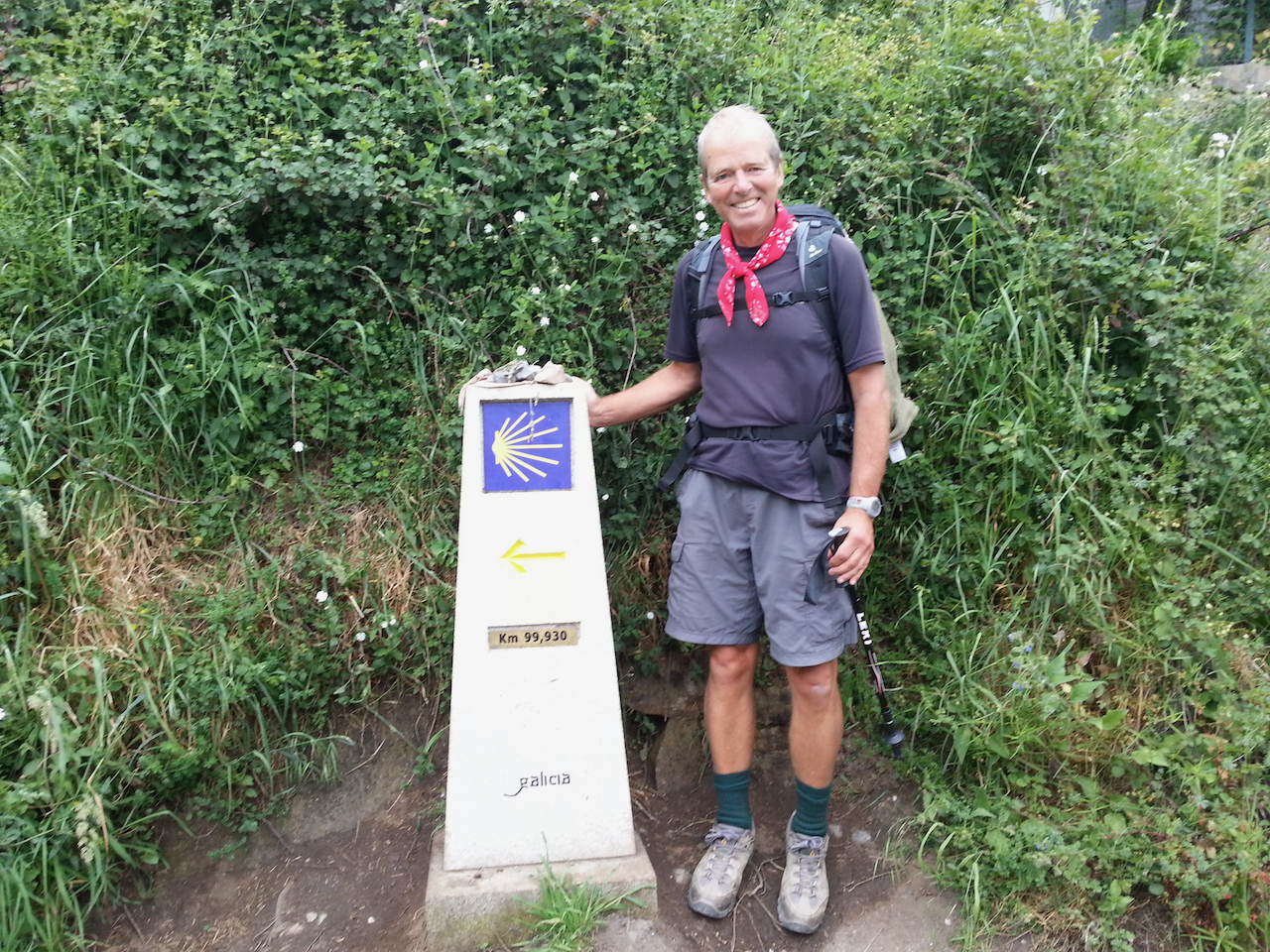
Passed through Portomarín, the largest town of the day and one set picturesquely on a hill overlooking a large expanse of water (the Río Miño).

Strangely I think these last few days are probably the hardest of the entire Camino even though the walking itself isn’t particularly challenging. It’s the dawning awareness that the end is near that is playing with my mind a bit and at one level makes me want to just get it over and done with. But that sense is offset by the desire to continue to live in the present and experience each day as it comes. I plan to be in Santiago de Compostela four days hence i.e. Thursday 16 June (86 km to go).
There’s a lot more up and down in Galicia than earlier in the Camino. Sure there were the Pyrenees to cross at the beginning, but once over them it was essentially down ever-widening valleys to Burgos and there weren’t many hills at all across the Meseta. The Galician hills aren’t particularly big, but the country rolls and undulates and the Camino follows many of the contours. It makes for interesting and varied walking … and a good workout over the 21-23 km of a typical day.
I haven’t yet come across the hordes of bus- and taxi-borne pilgrims I had, from reports, half expected from Sarria on. I’m sure there are increased numbers, but I’m starting and finishing each day at villages that are not part of the ‘standard’ John Brierley daily schedule and that makes a difference. Today I encountered very few people, with many stretches where I was the only one around.
It’s easy to spot the peregrinos amongst everyone else in town at the end of the day. They’re the ones hobbling, walking stiffly or with an unusual gait, with tape on toes, heels and shins, etc. The walking wounded!
